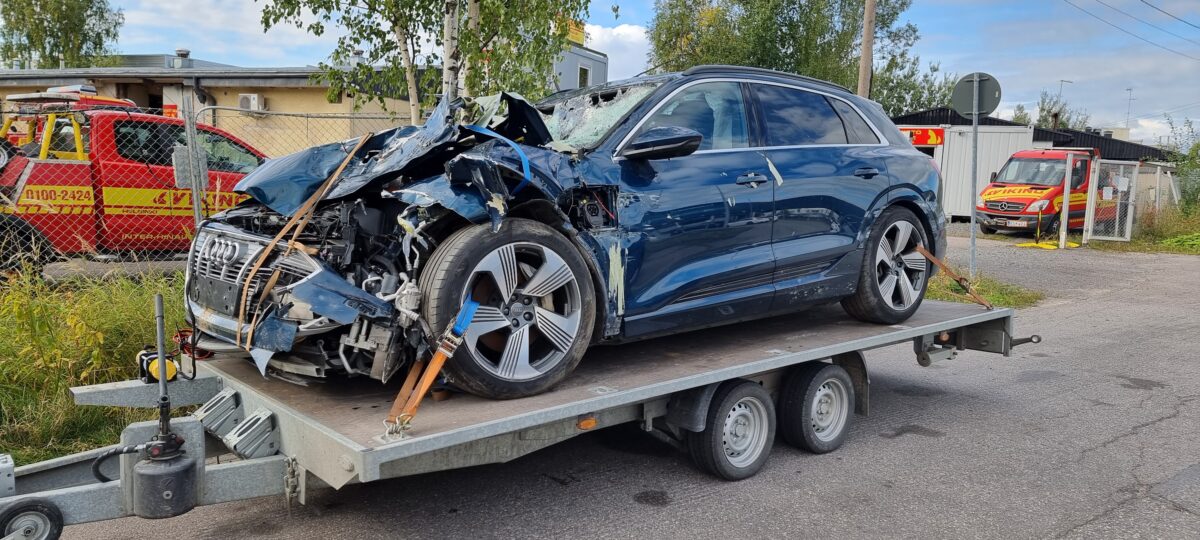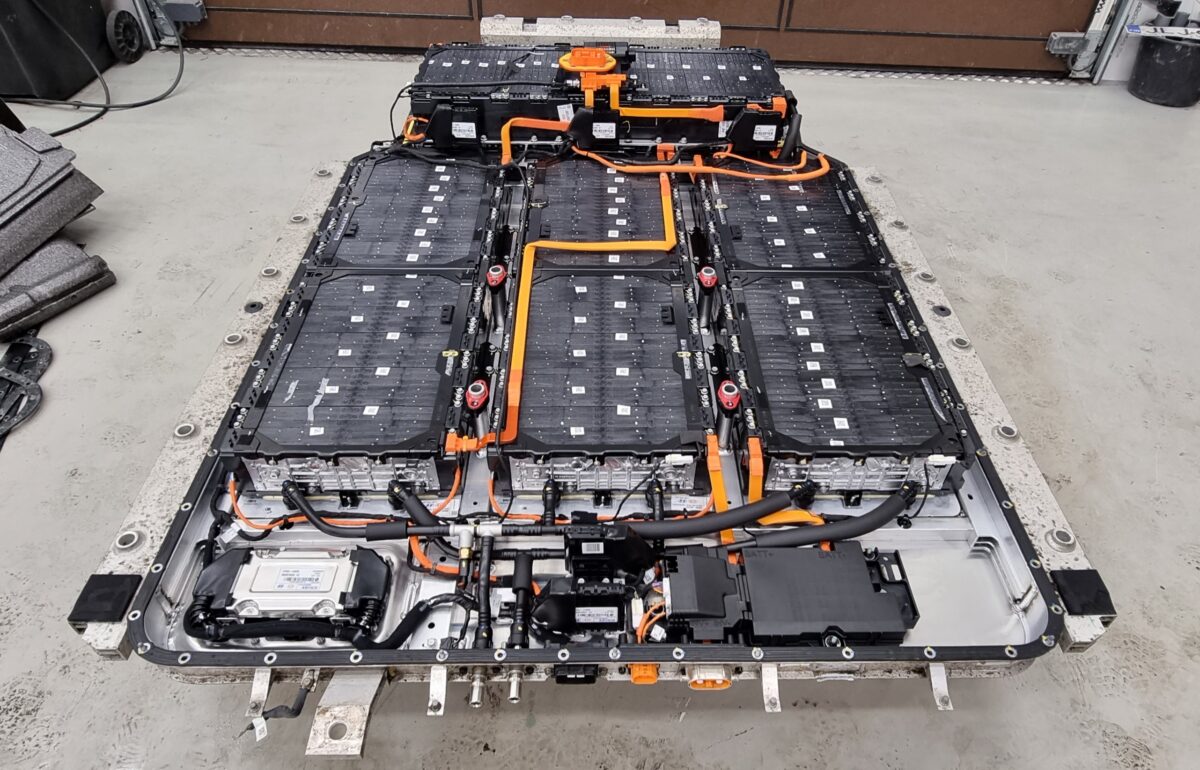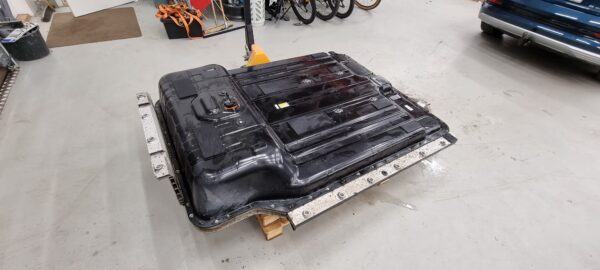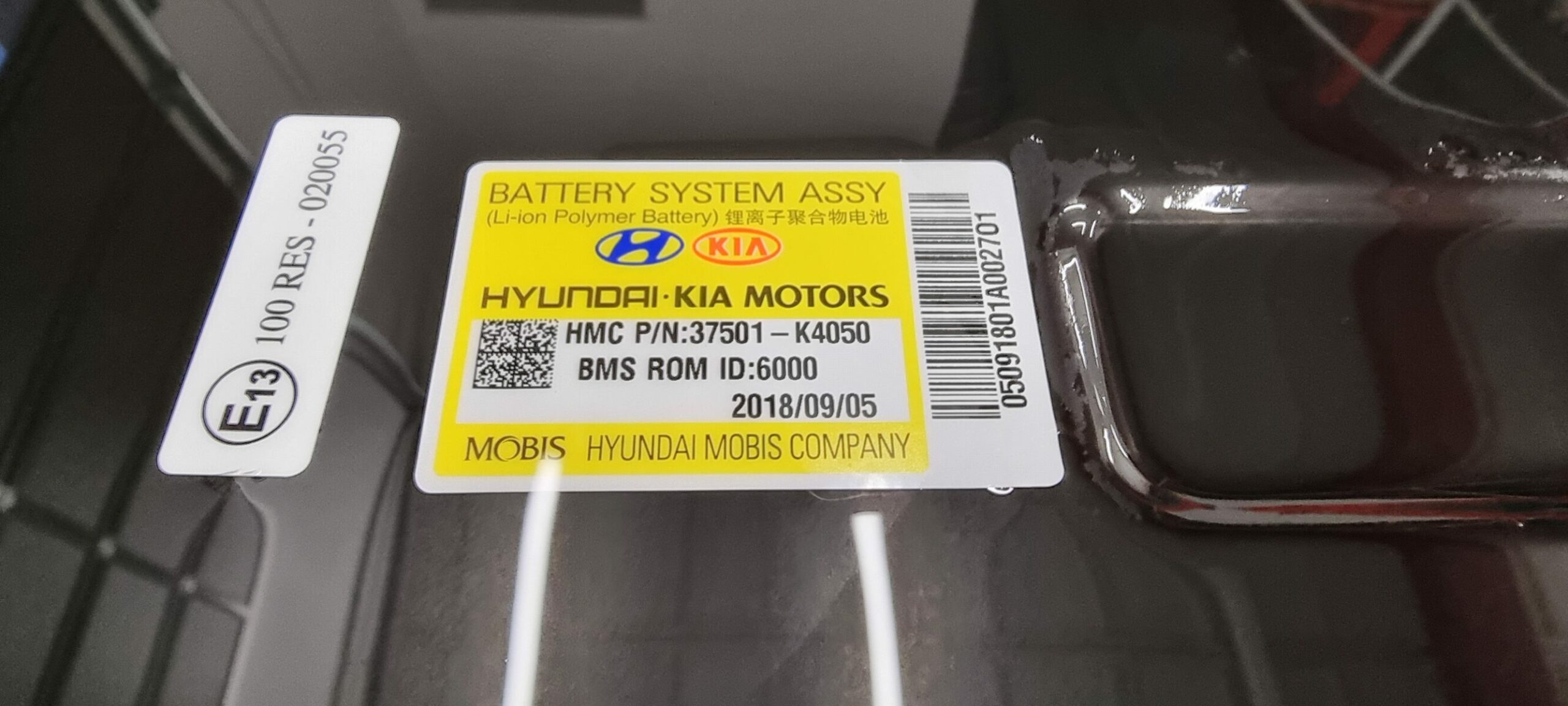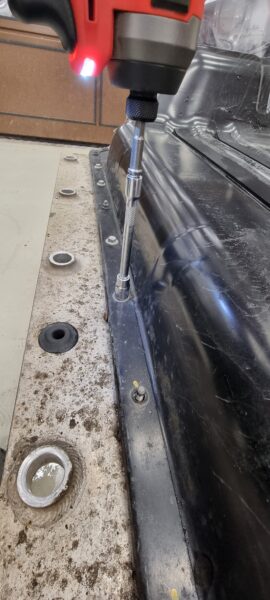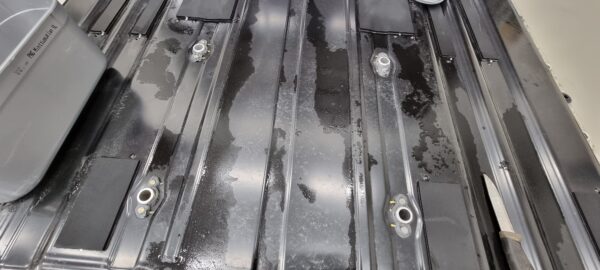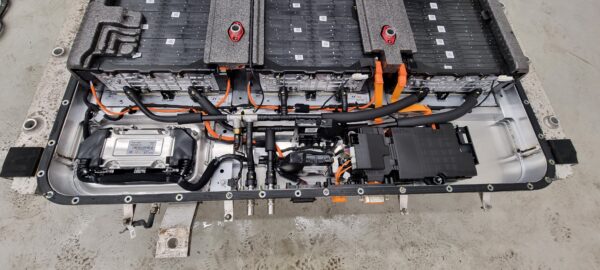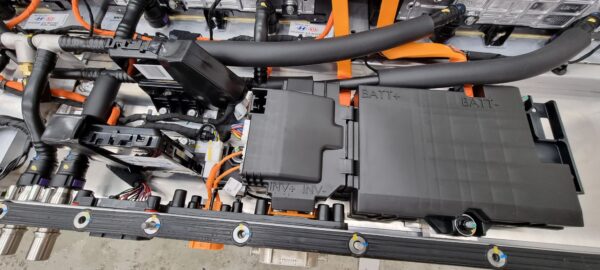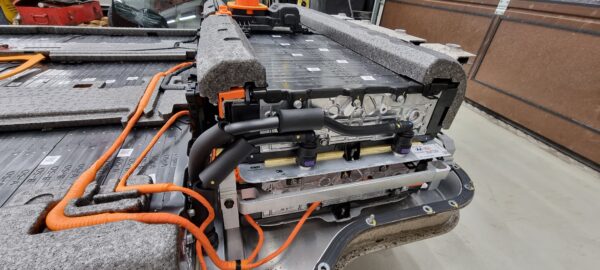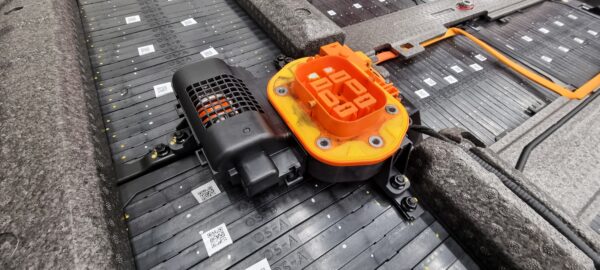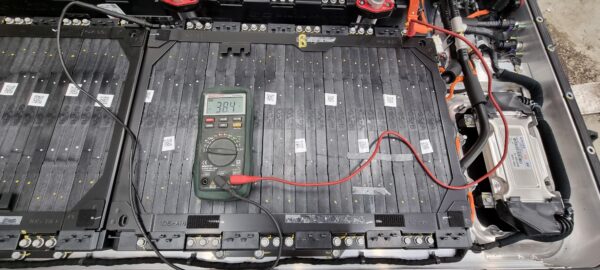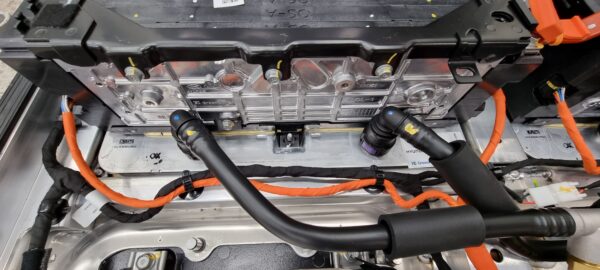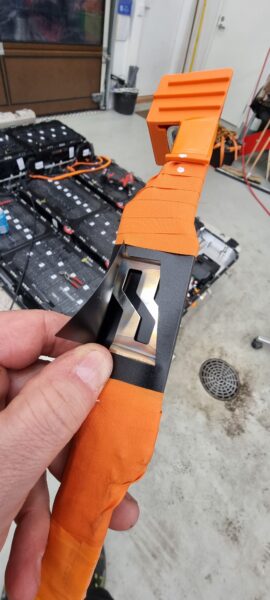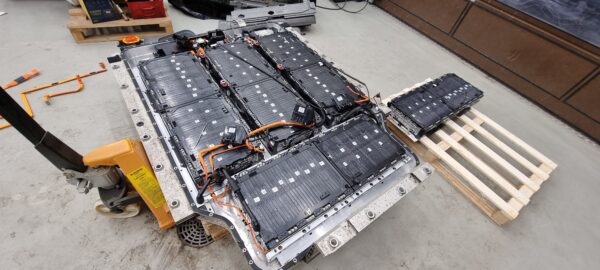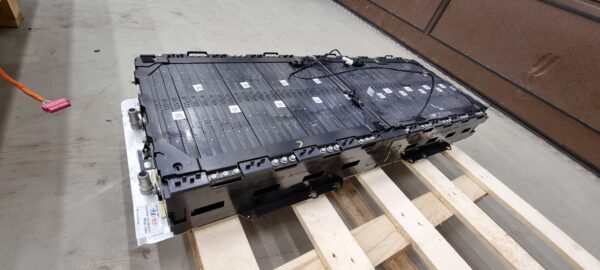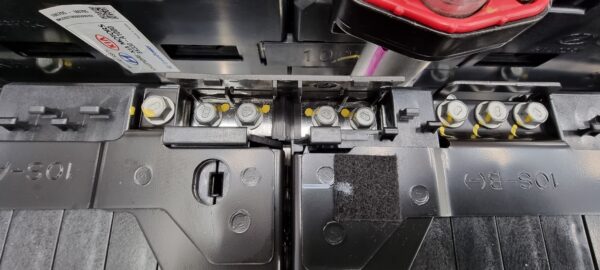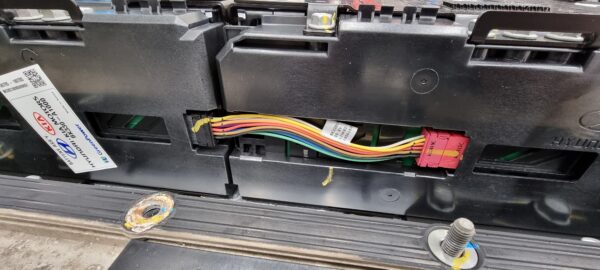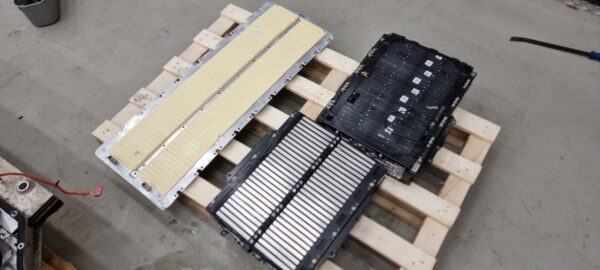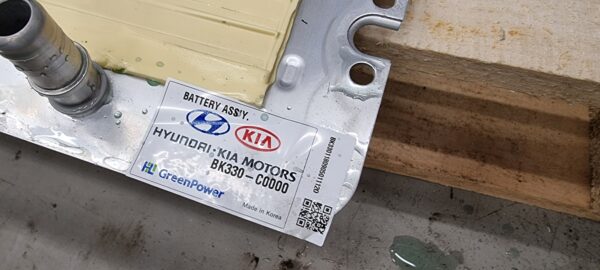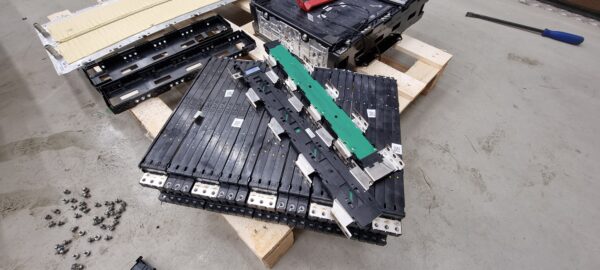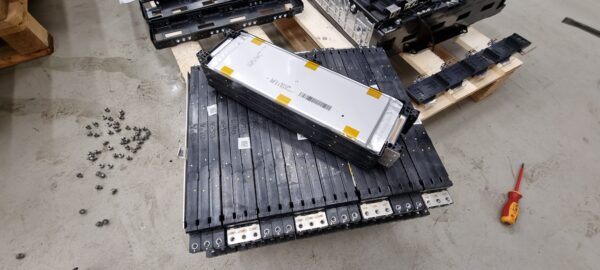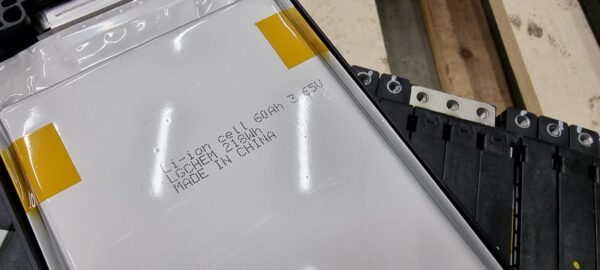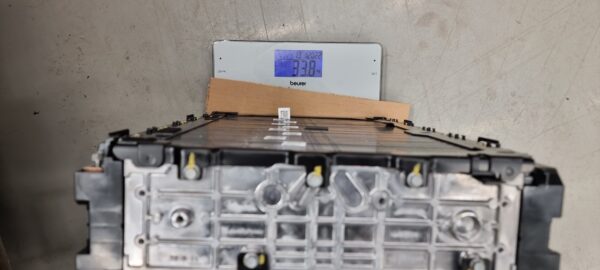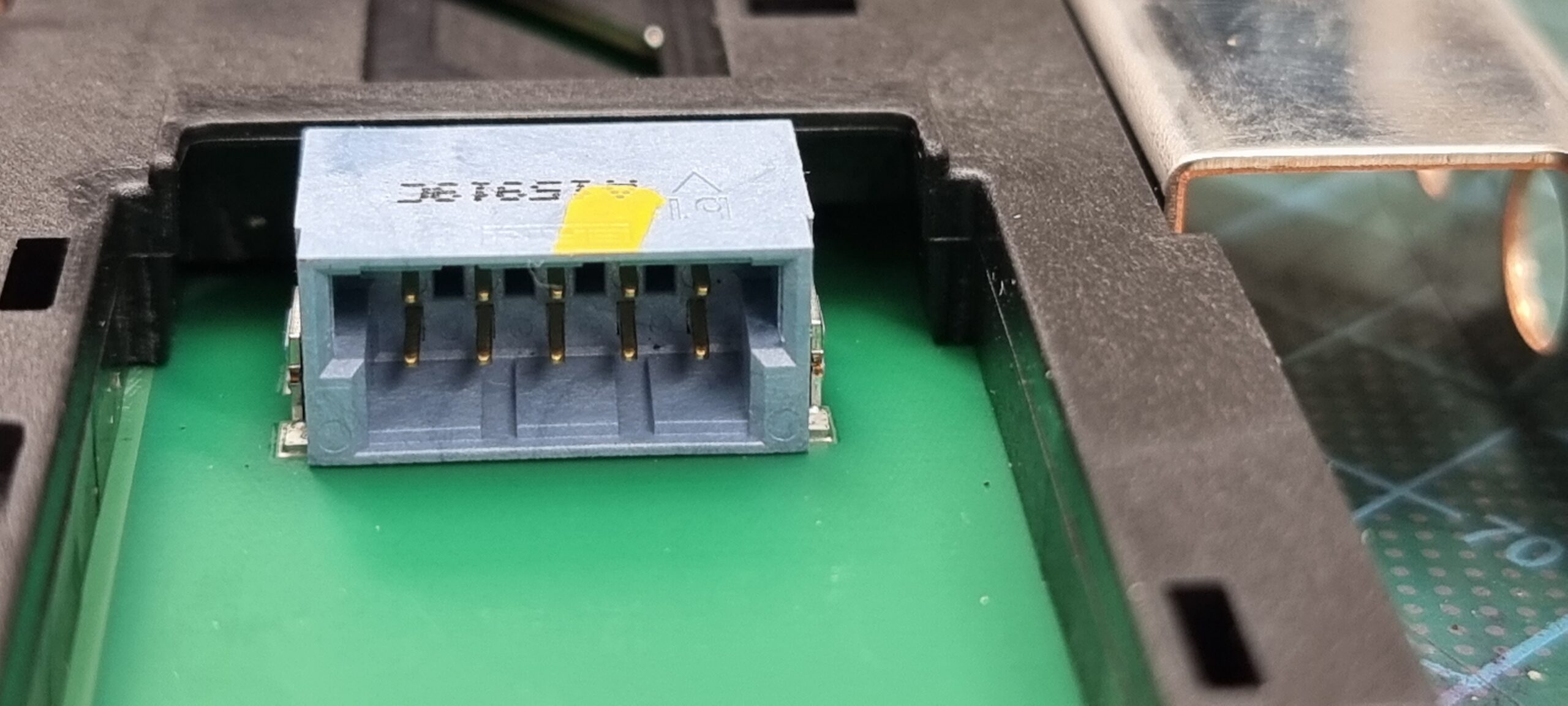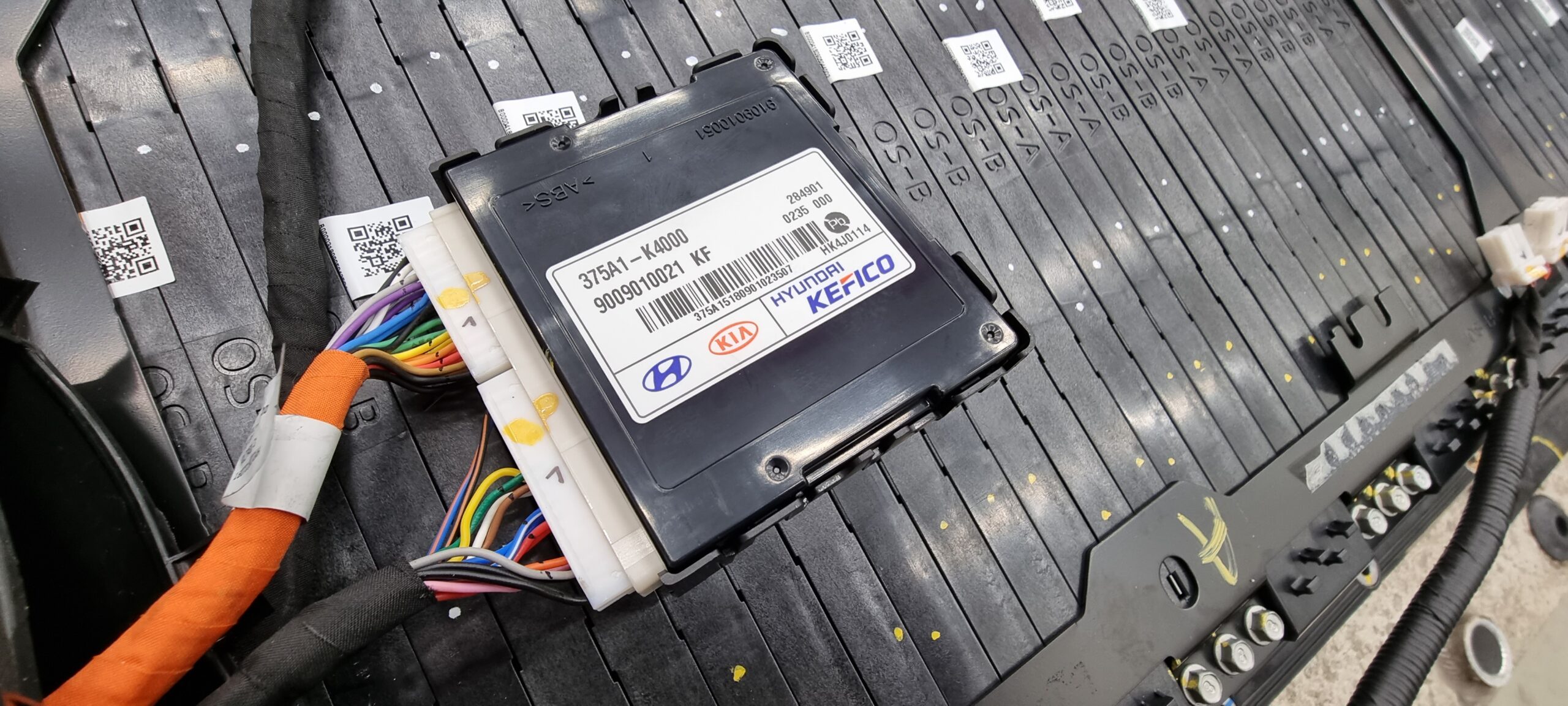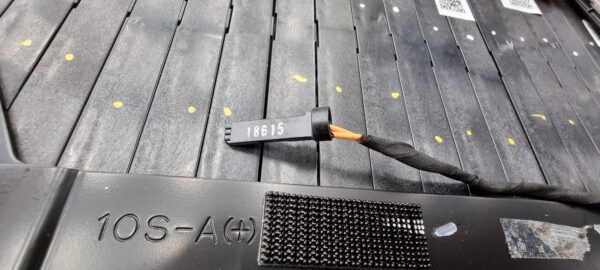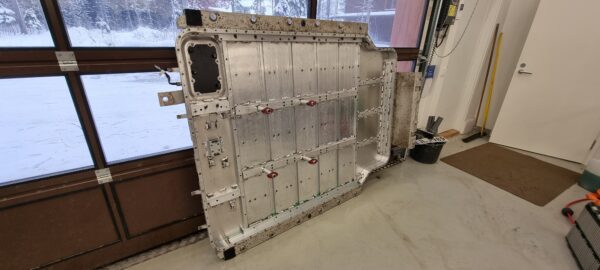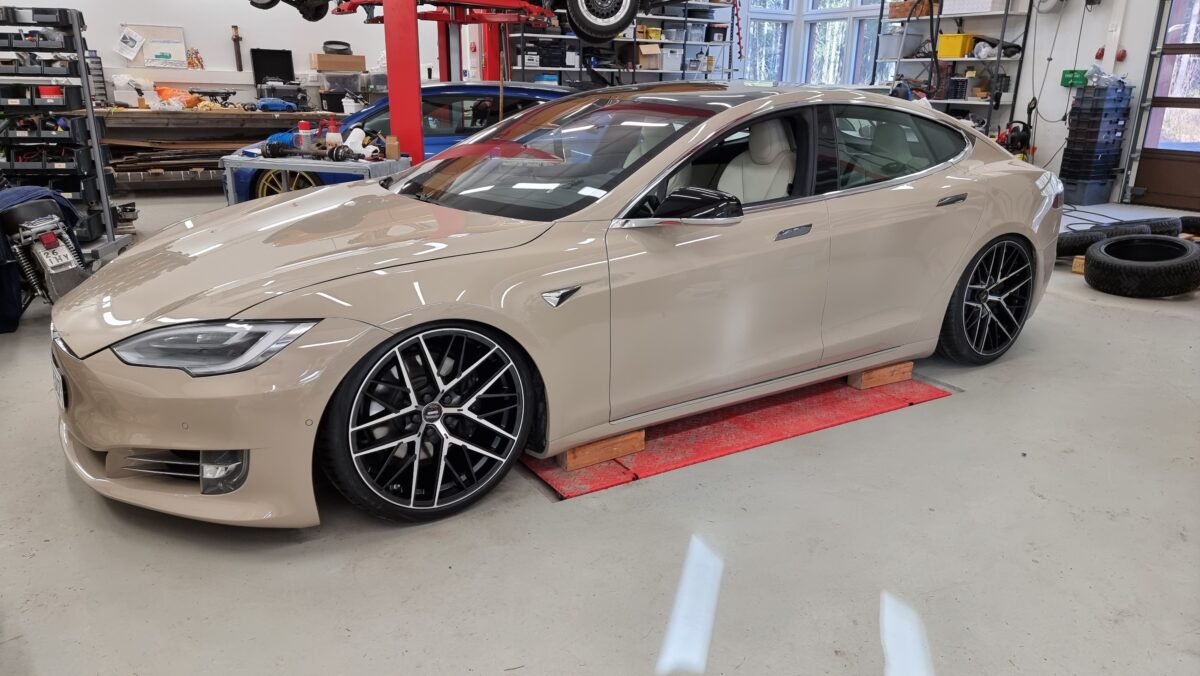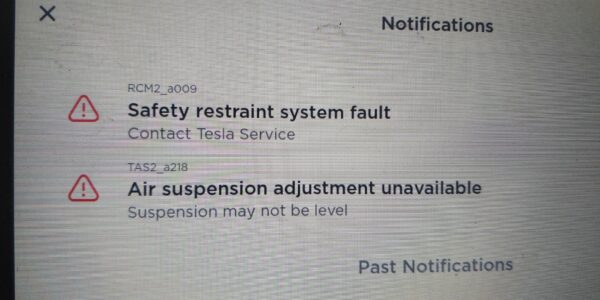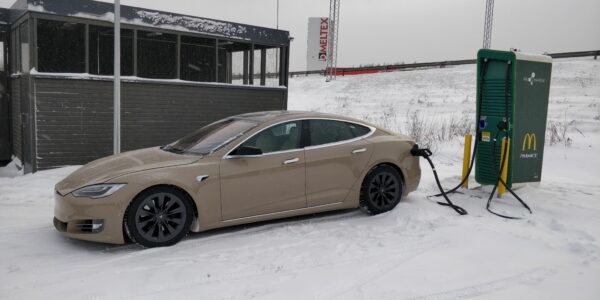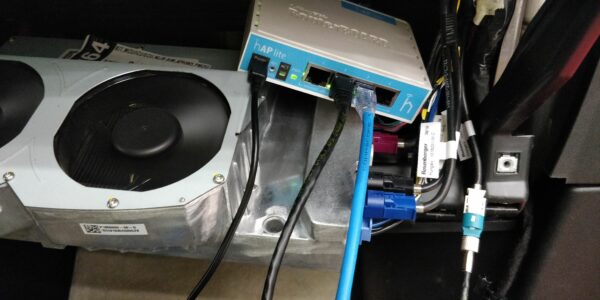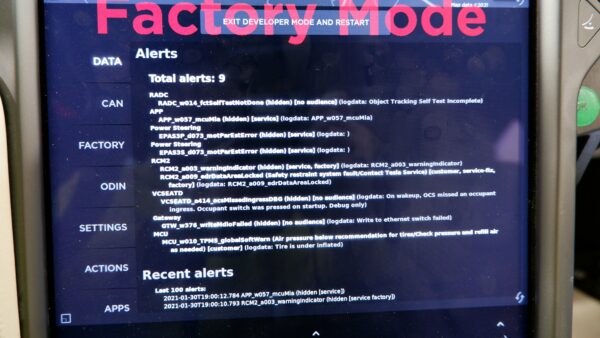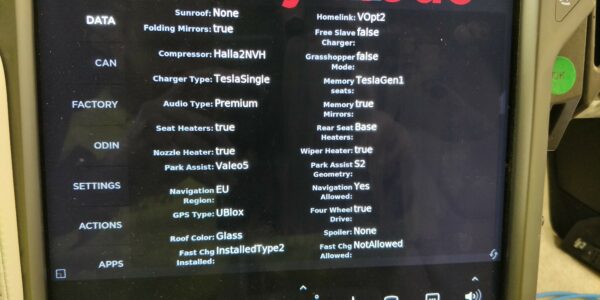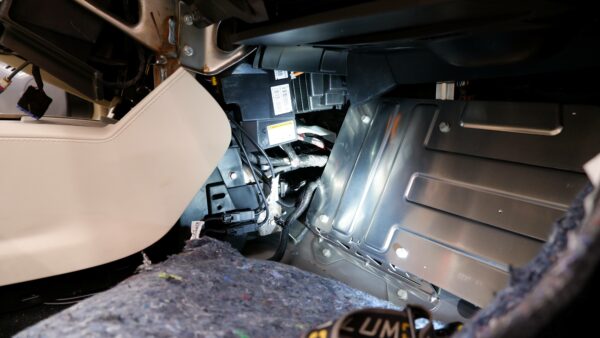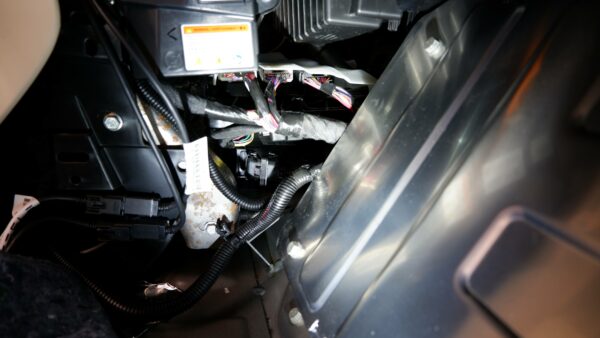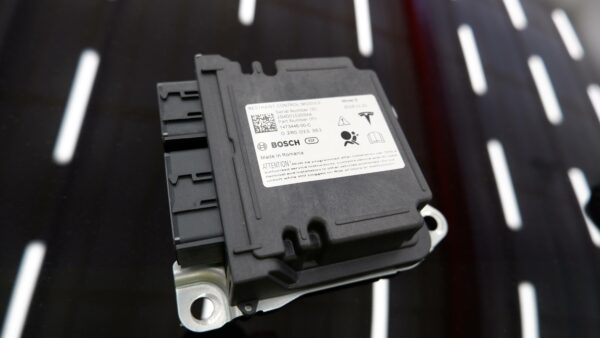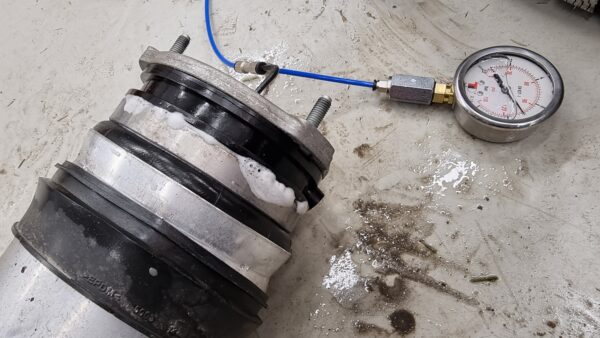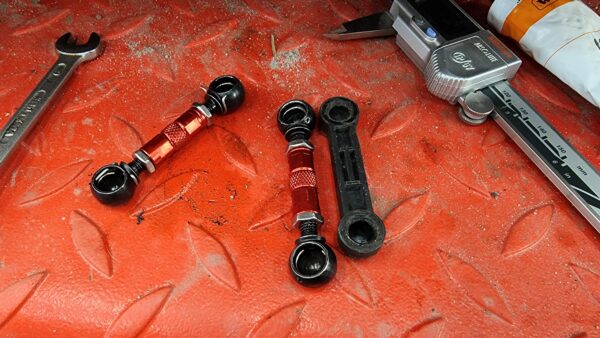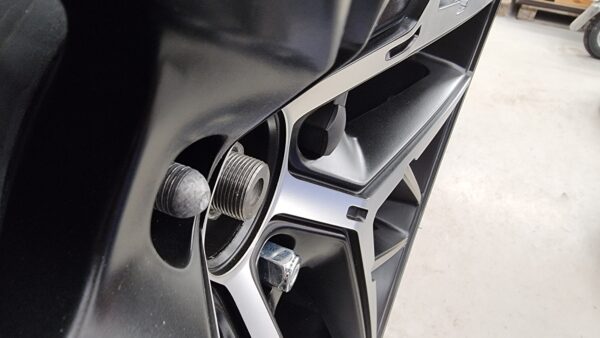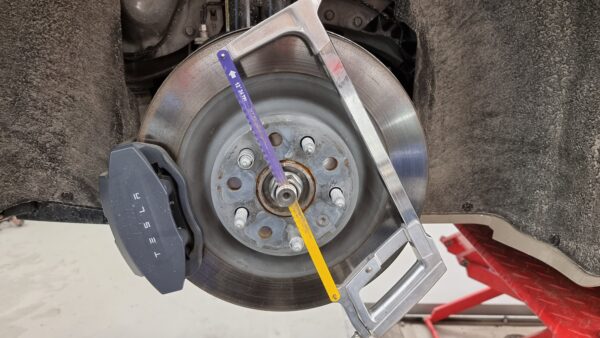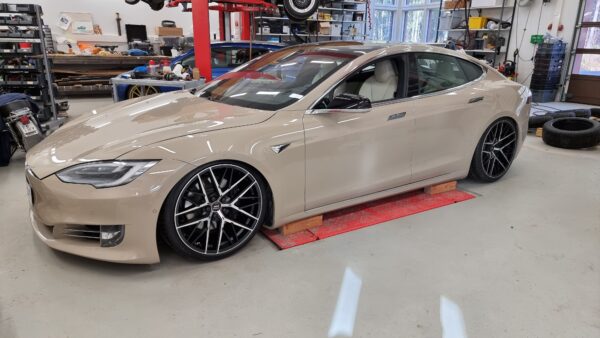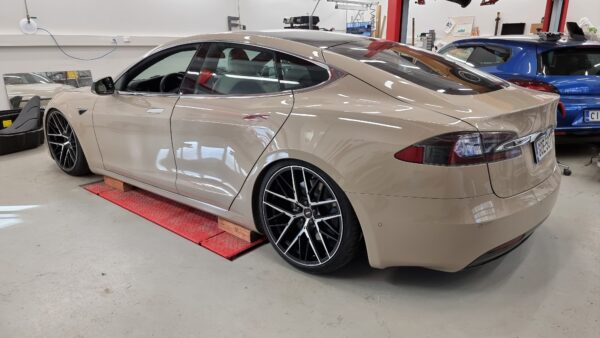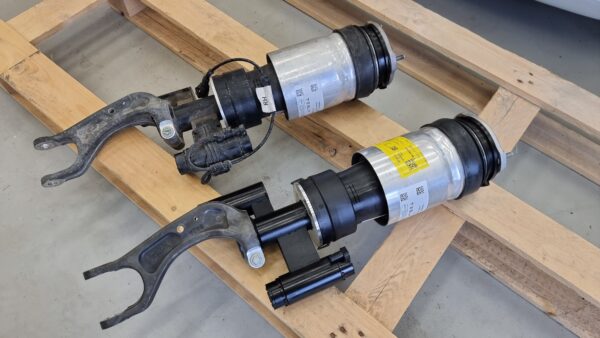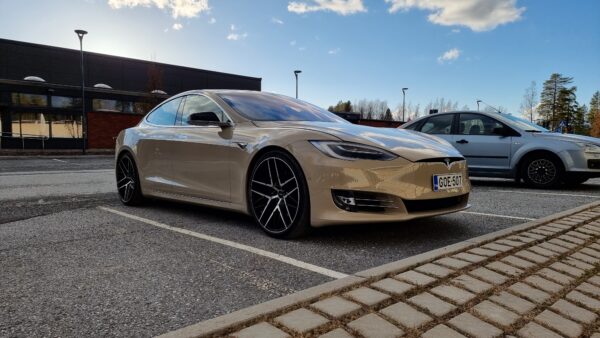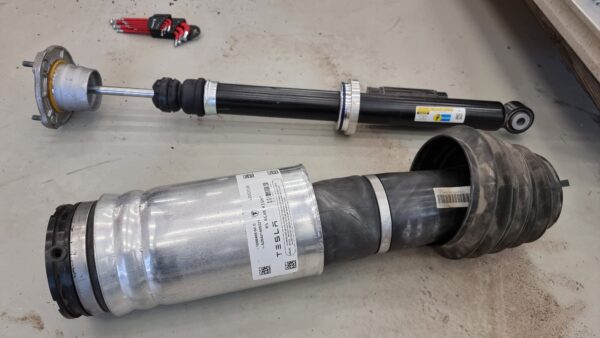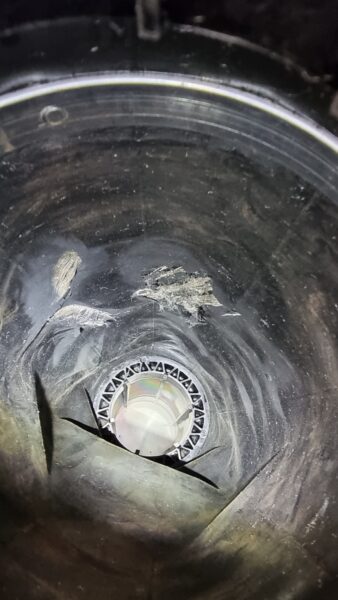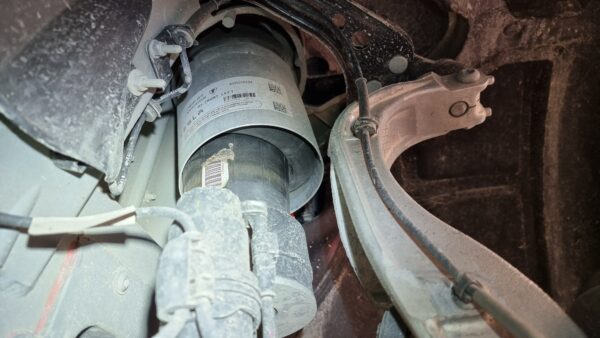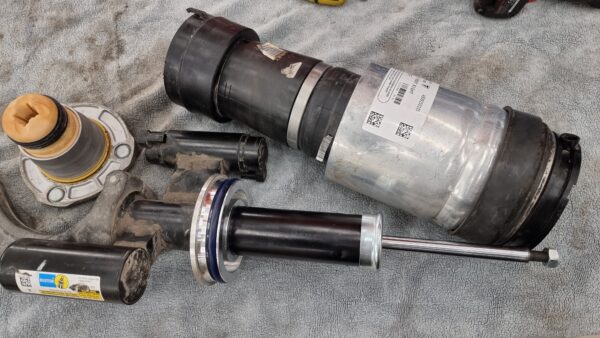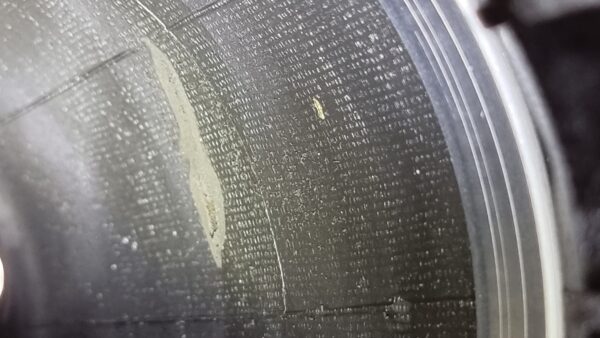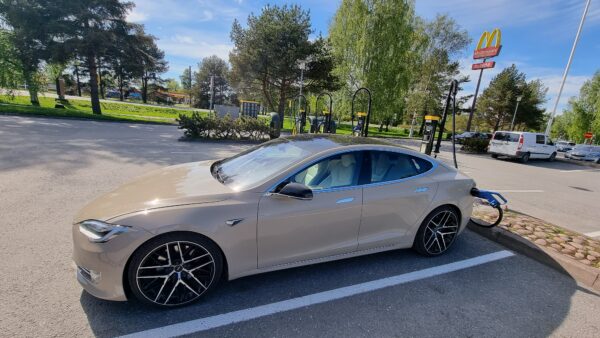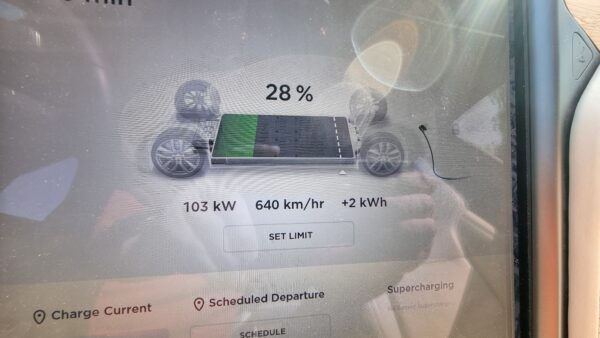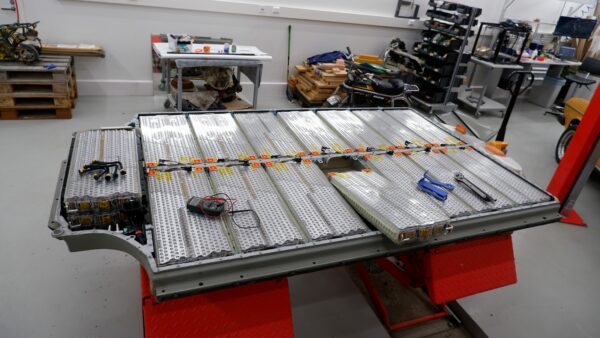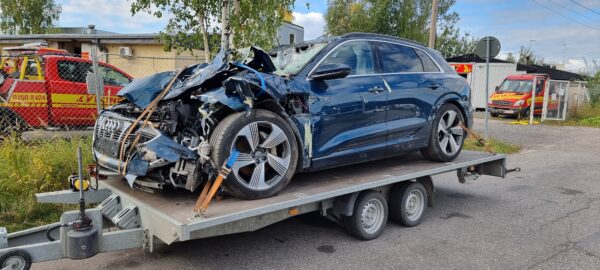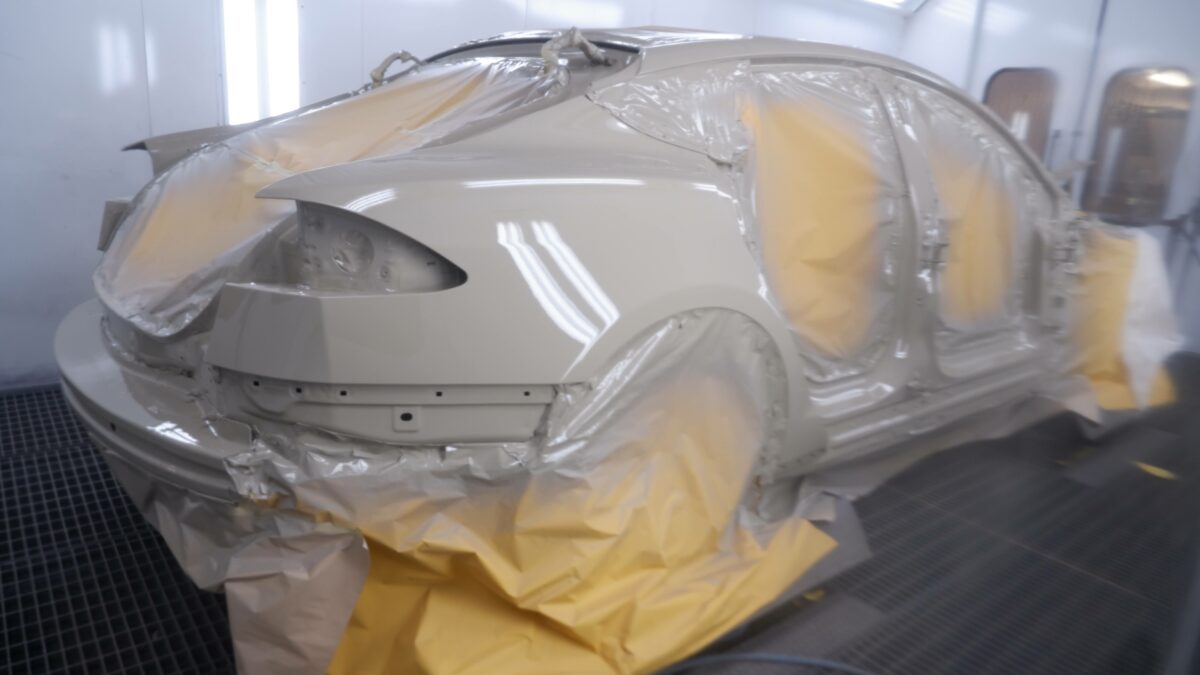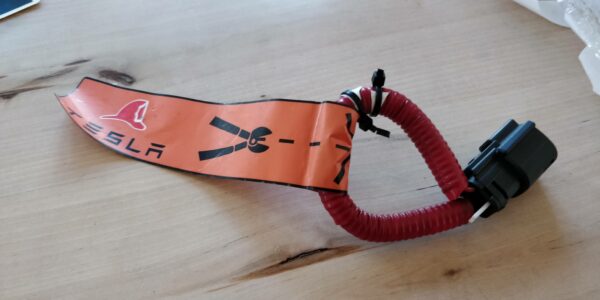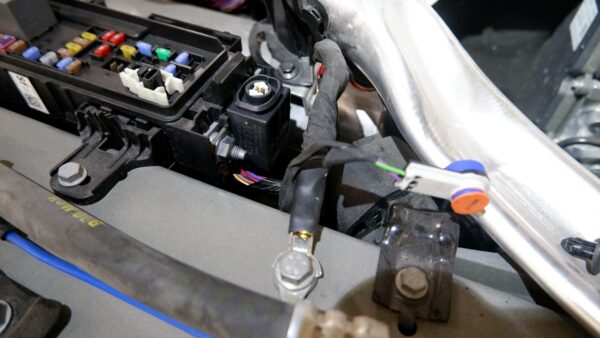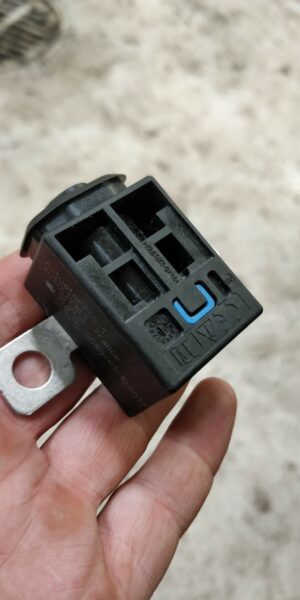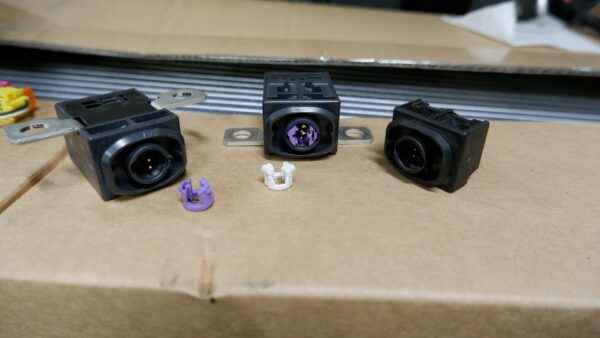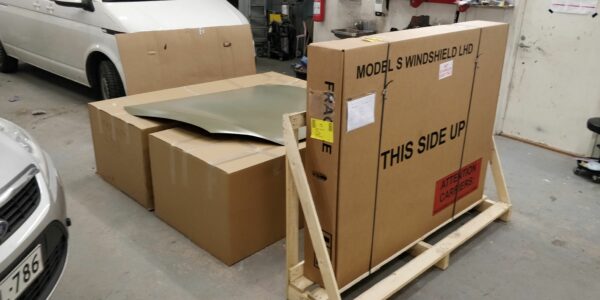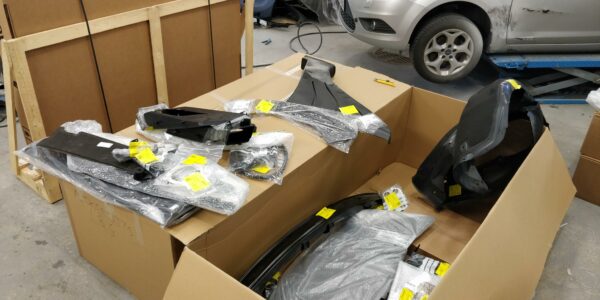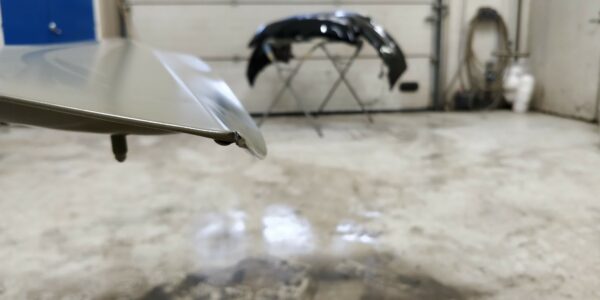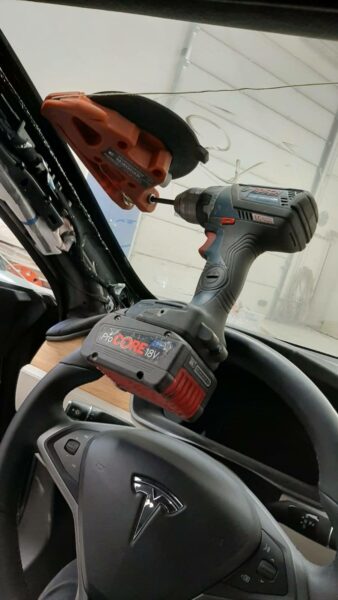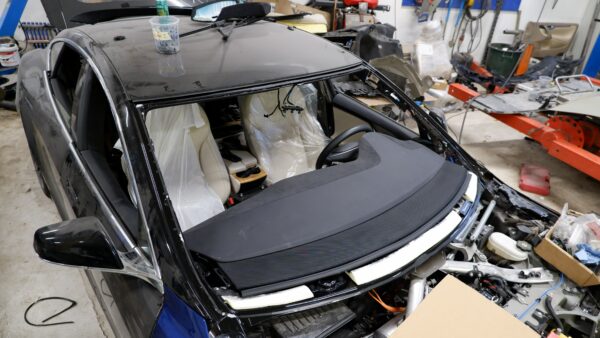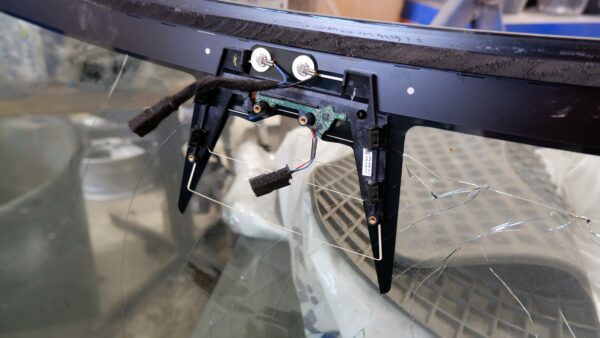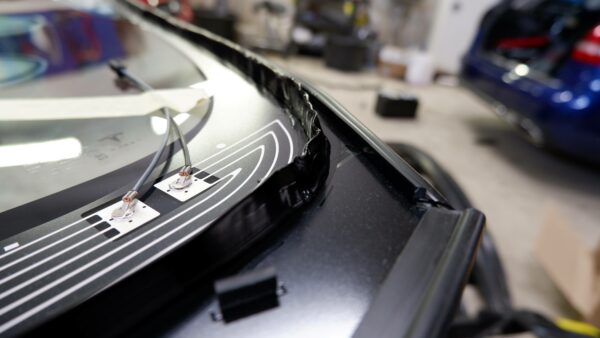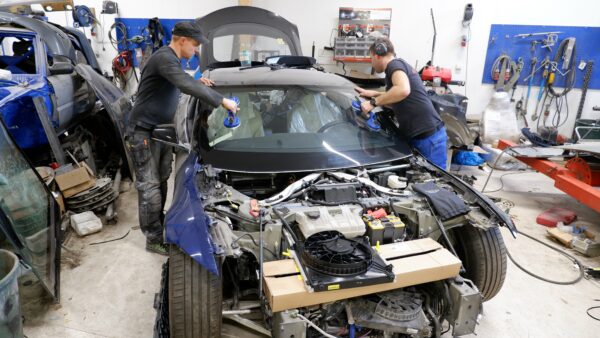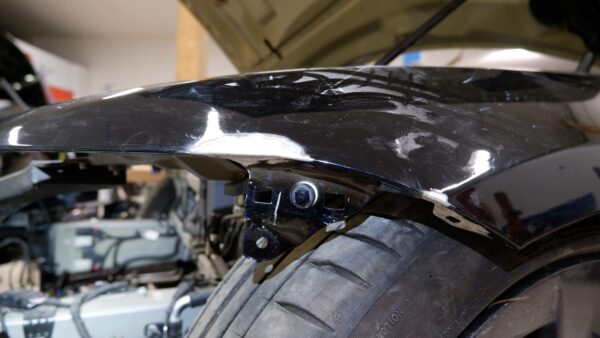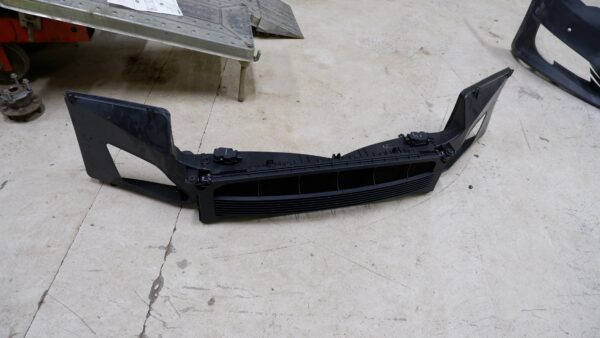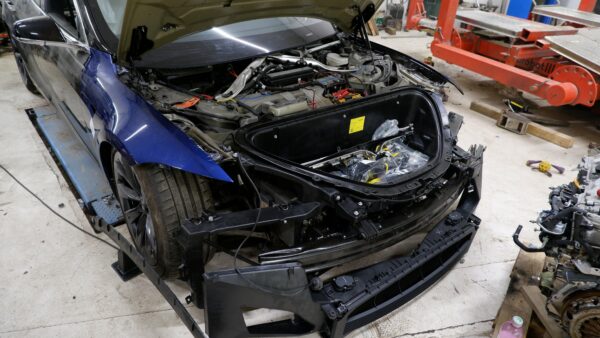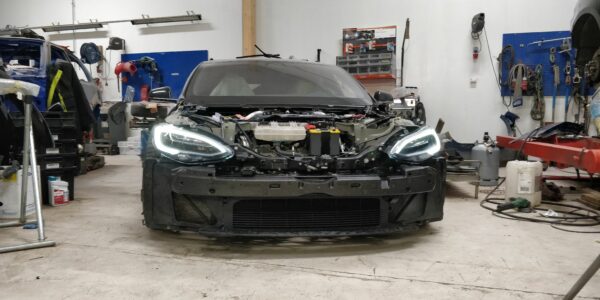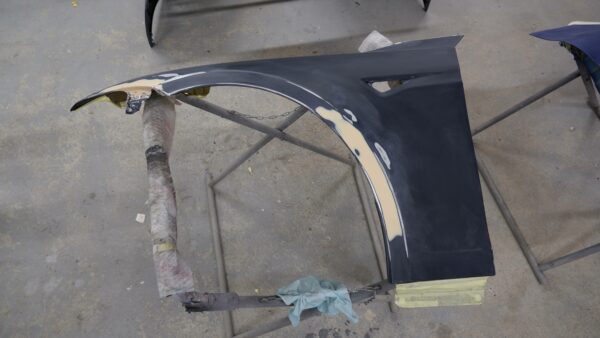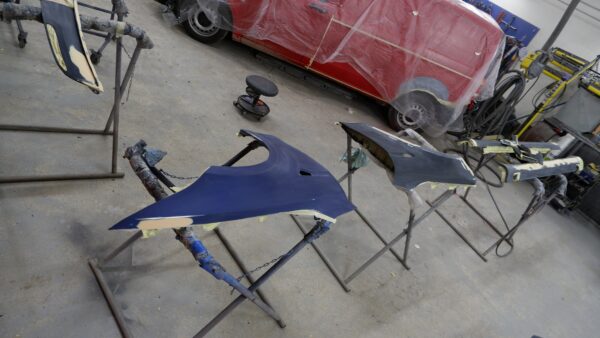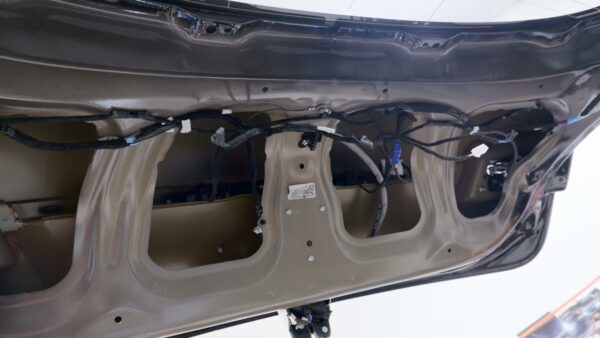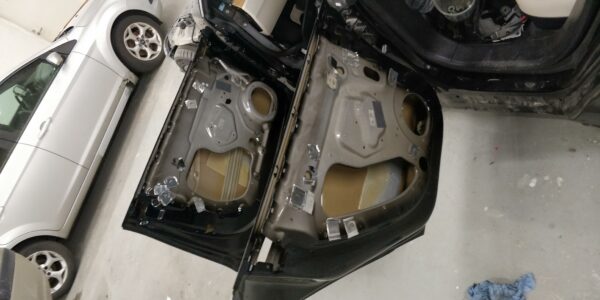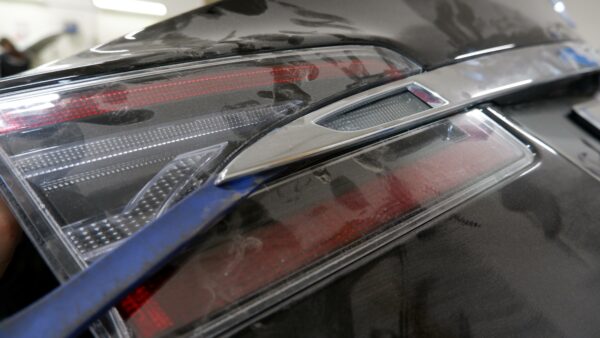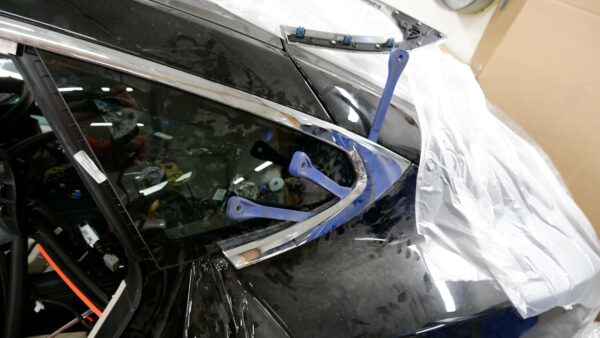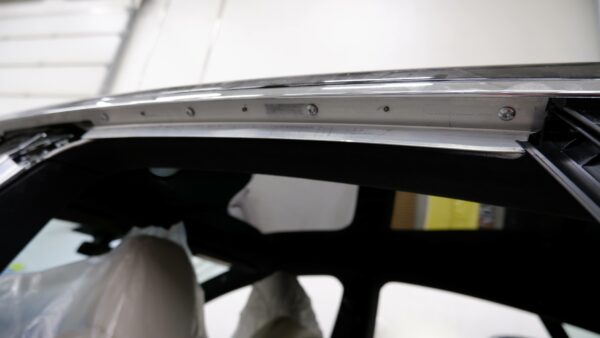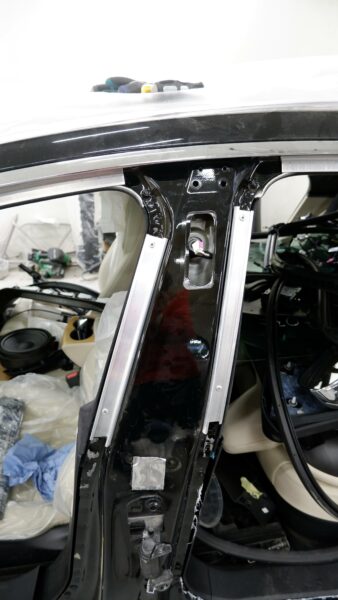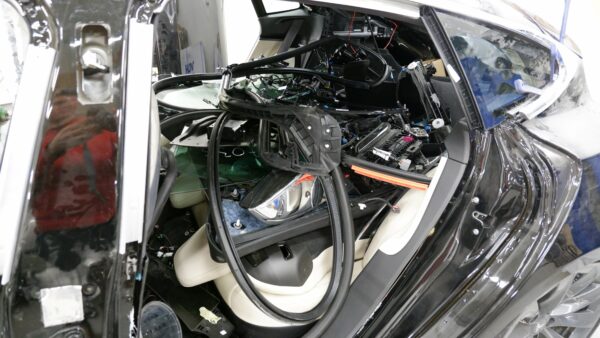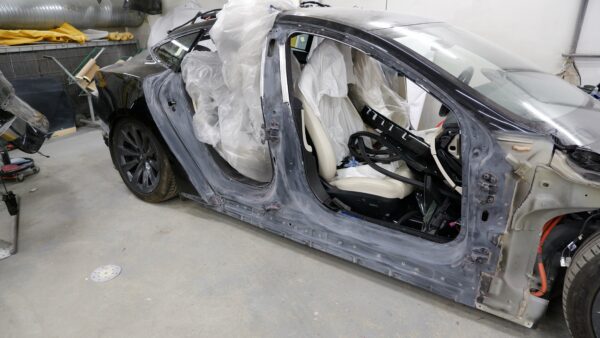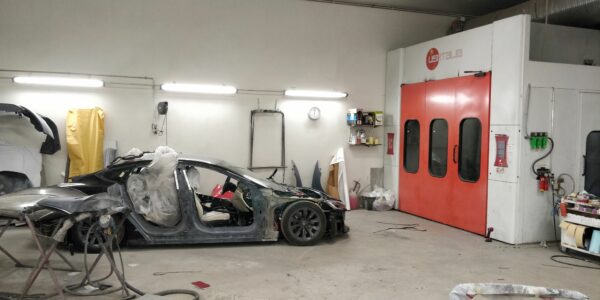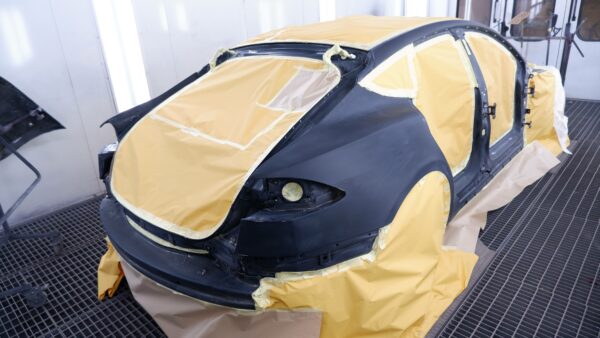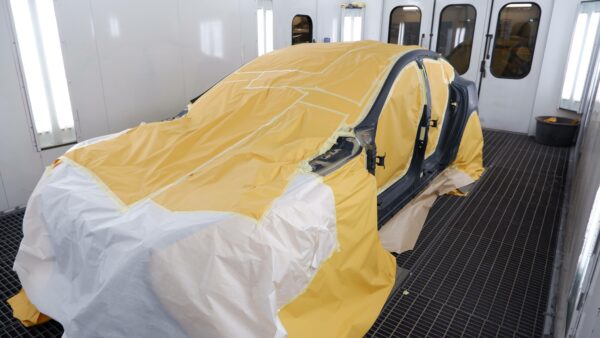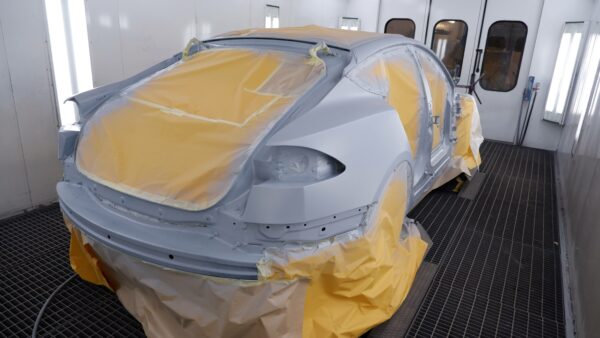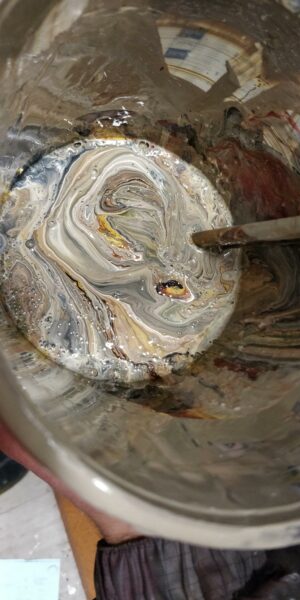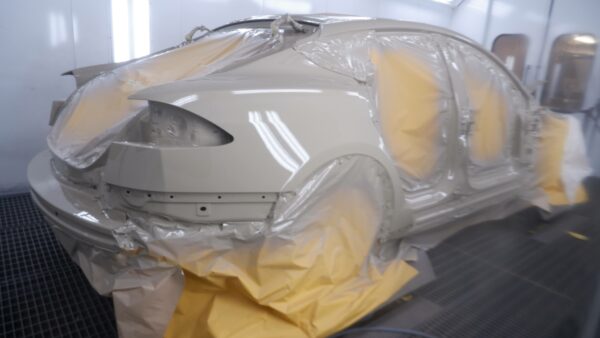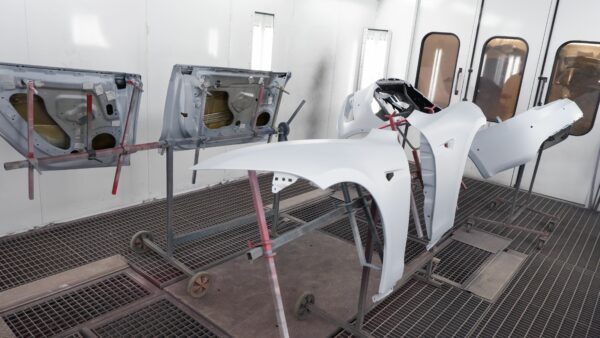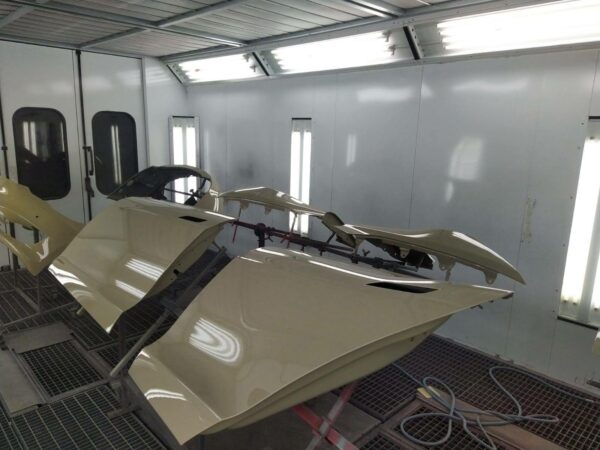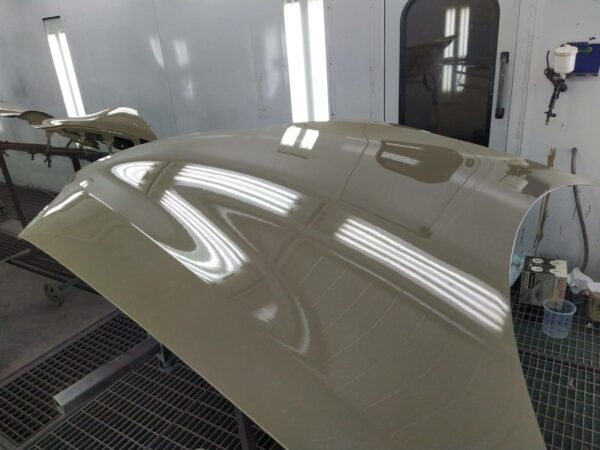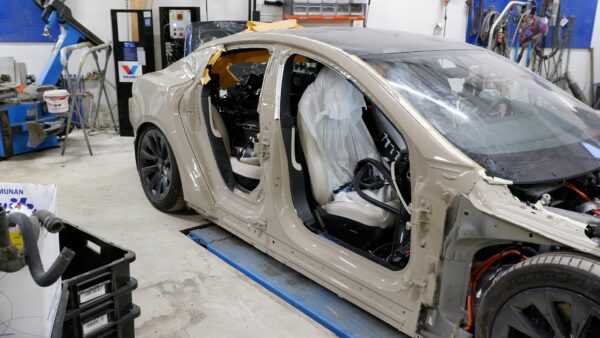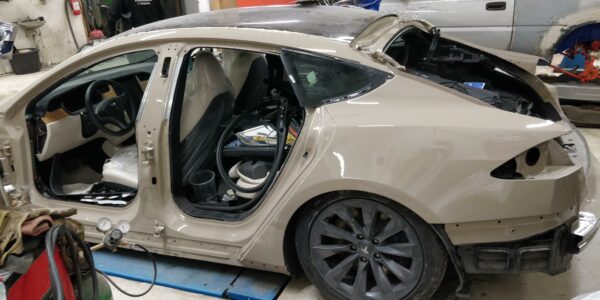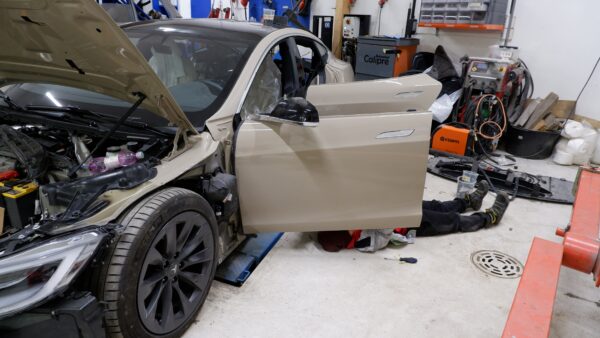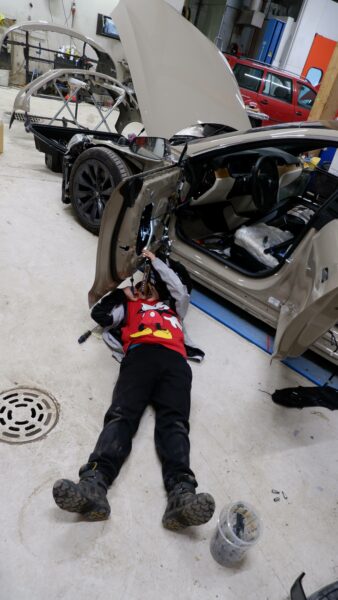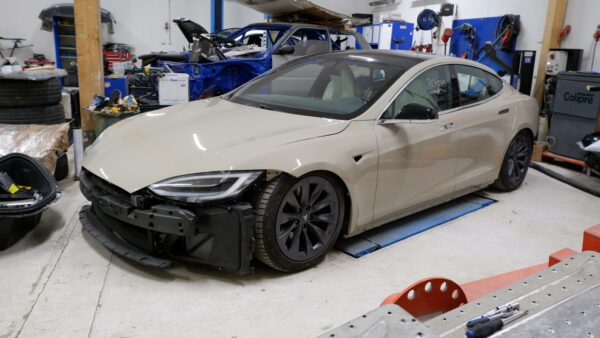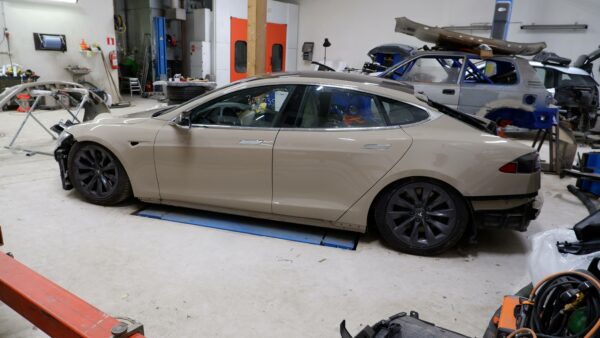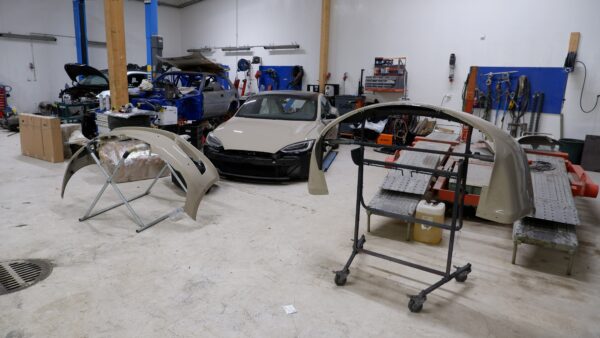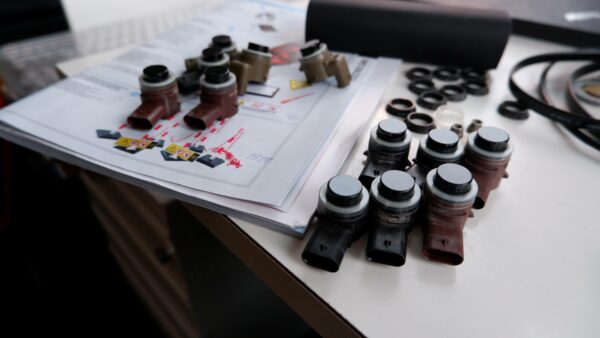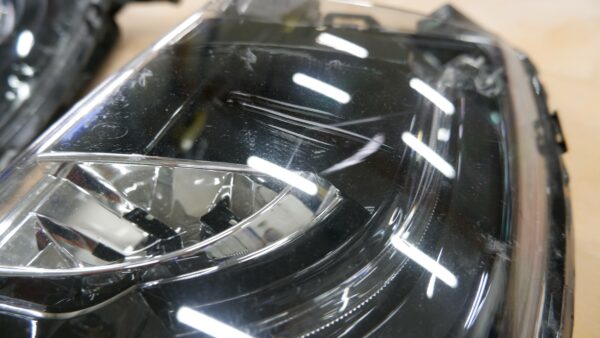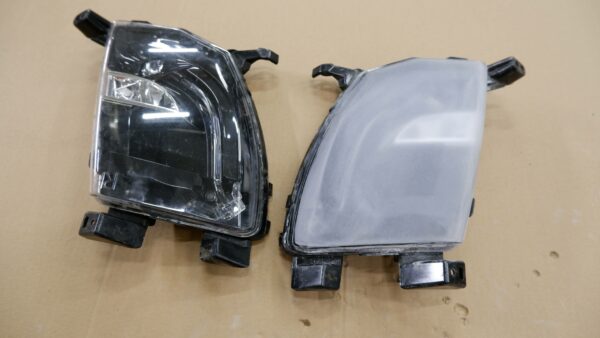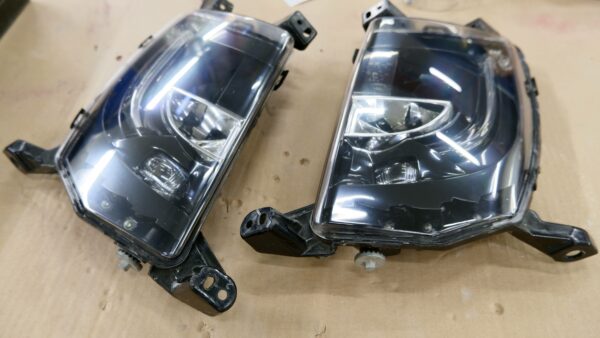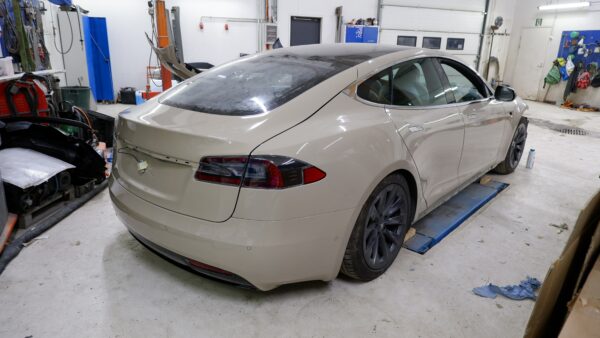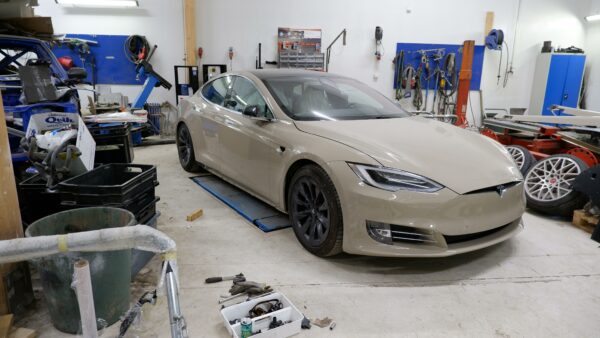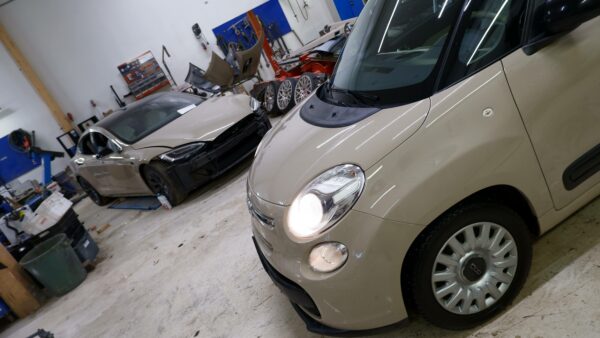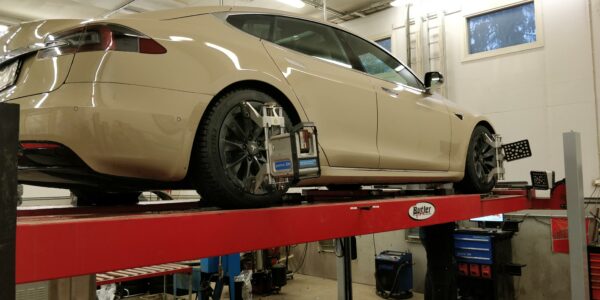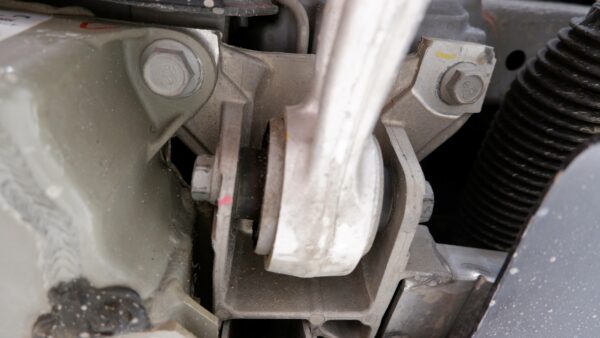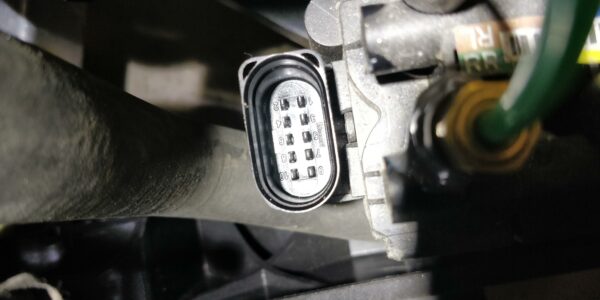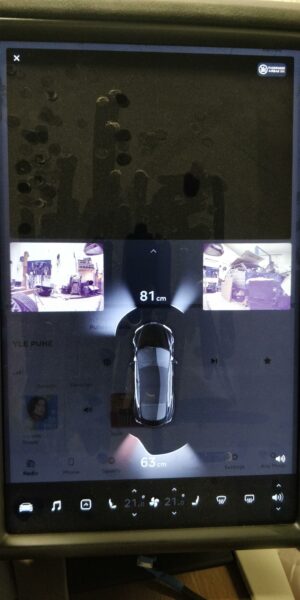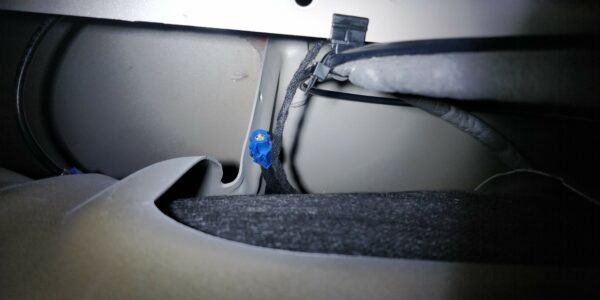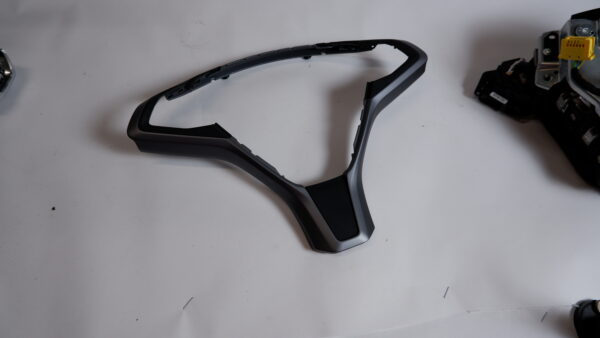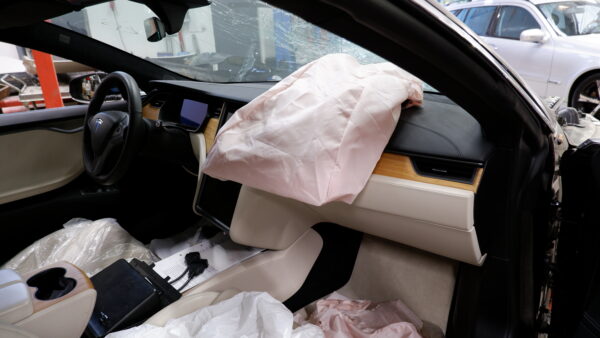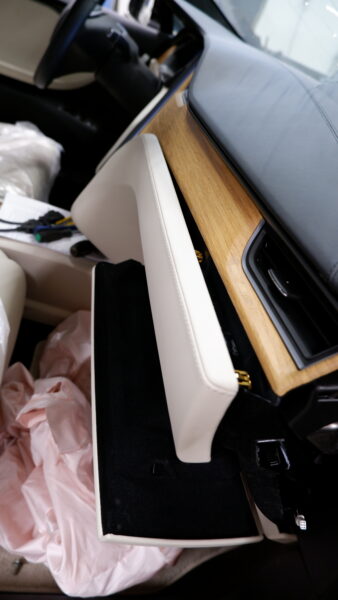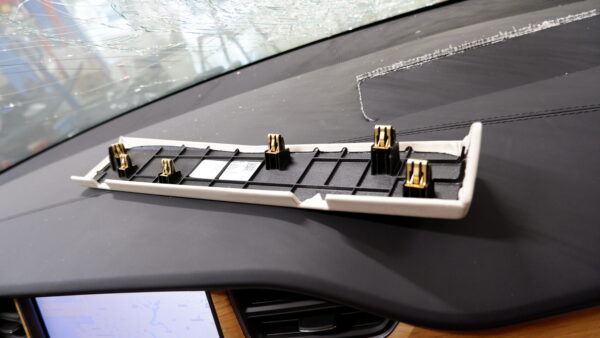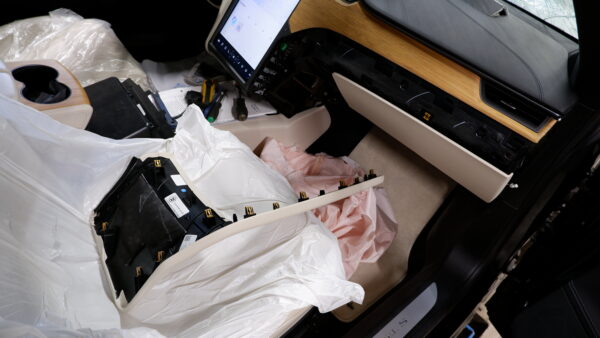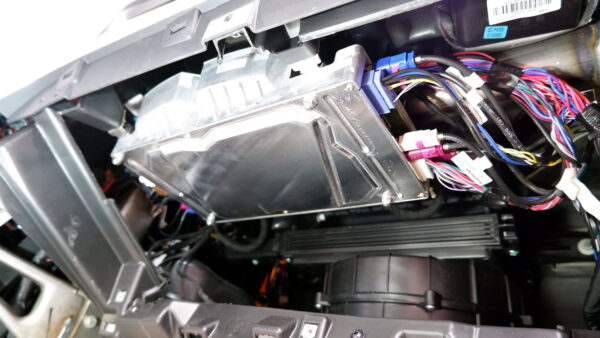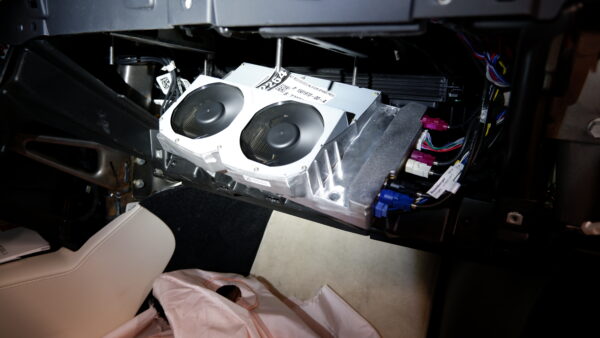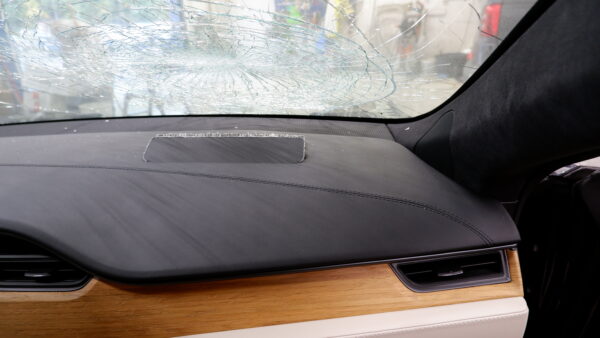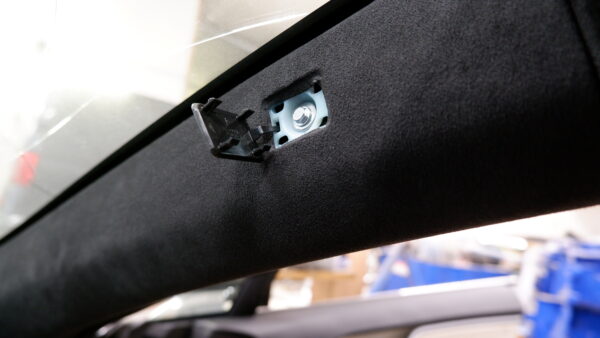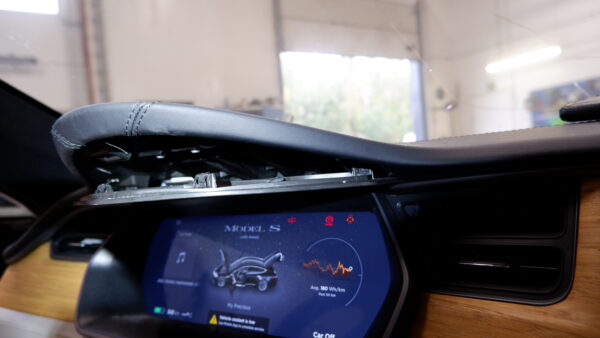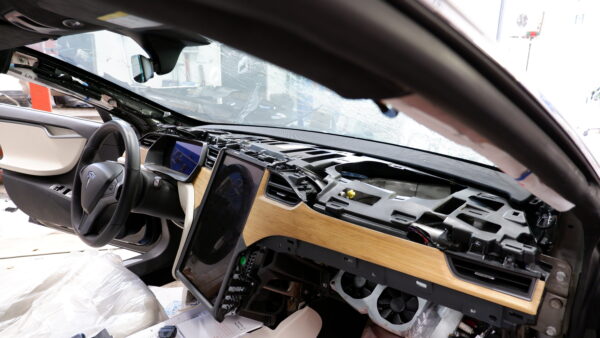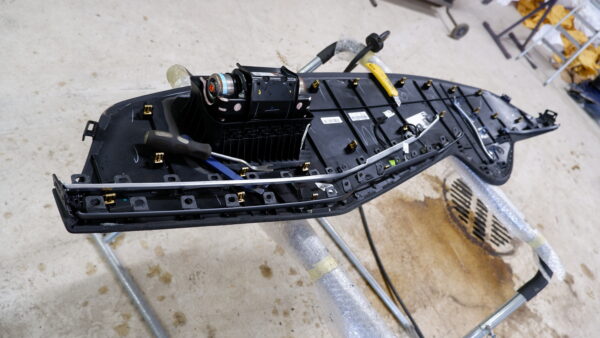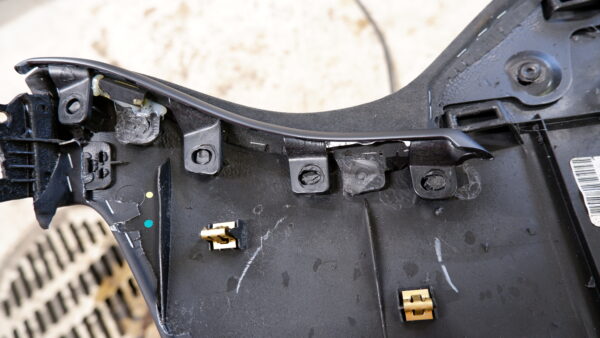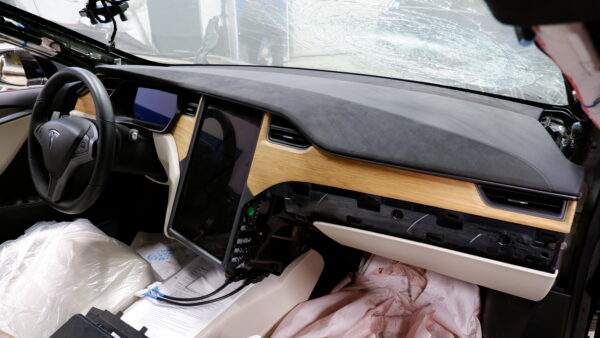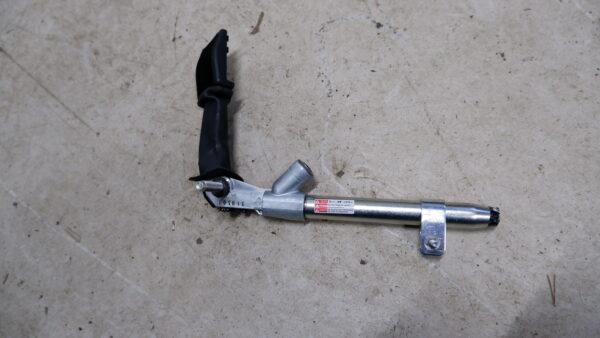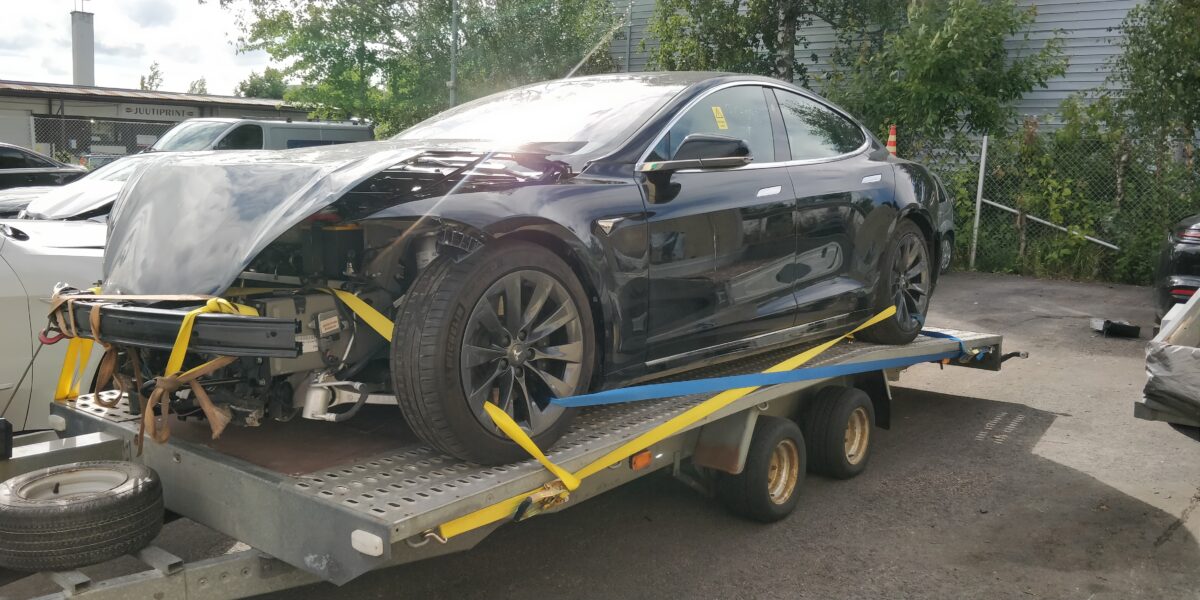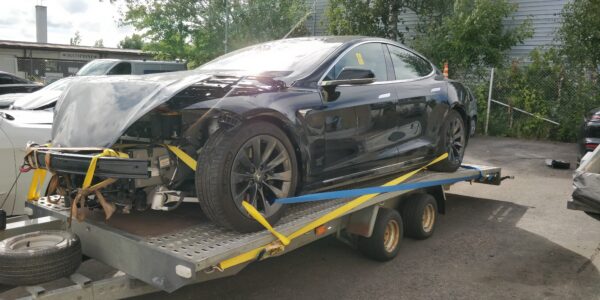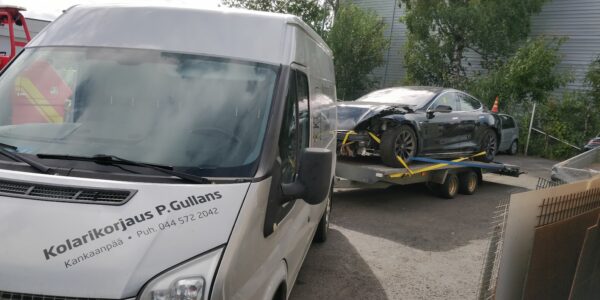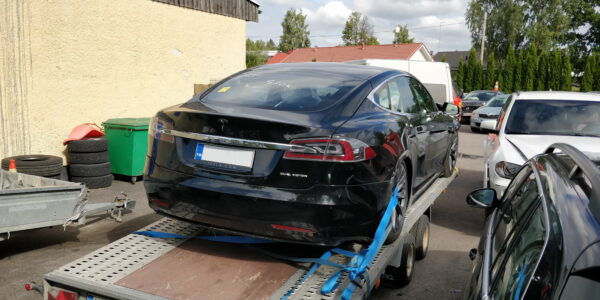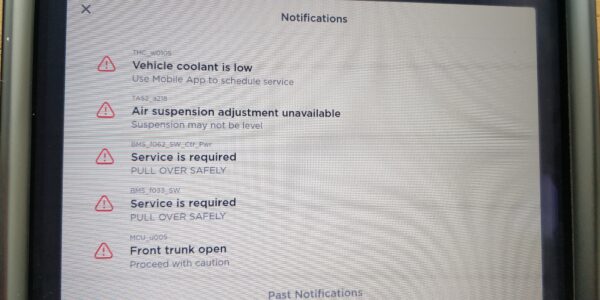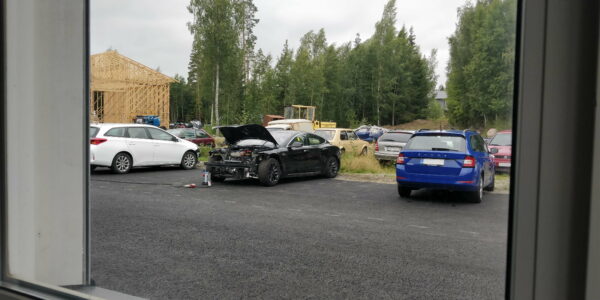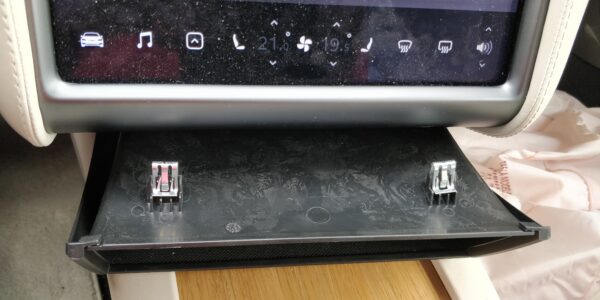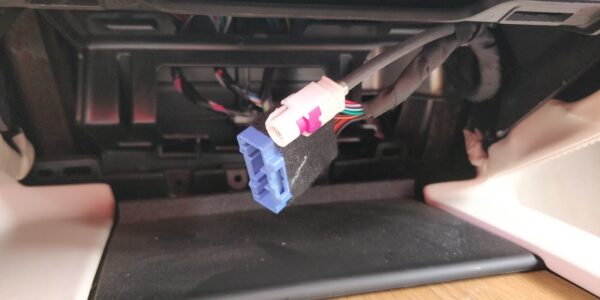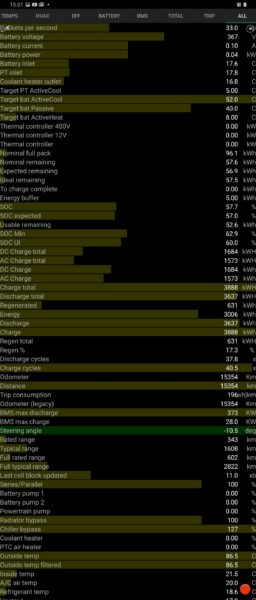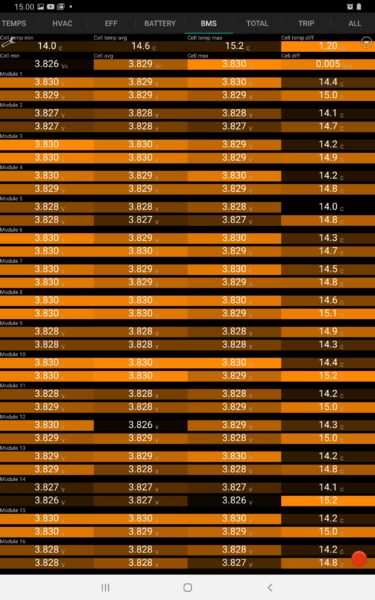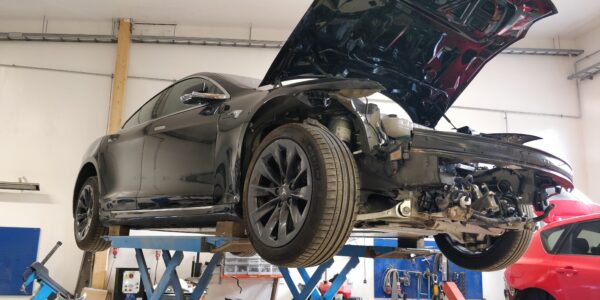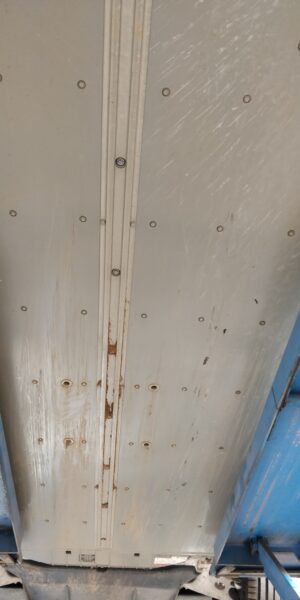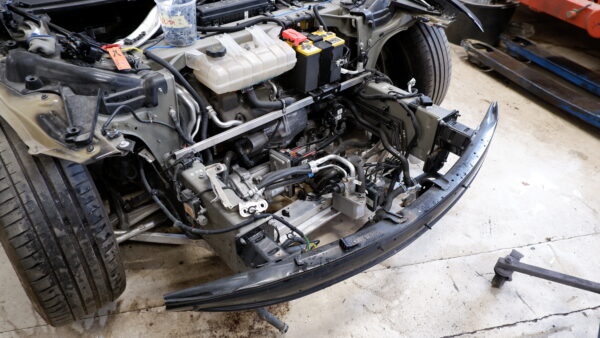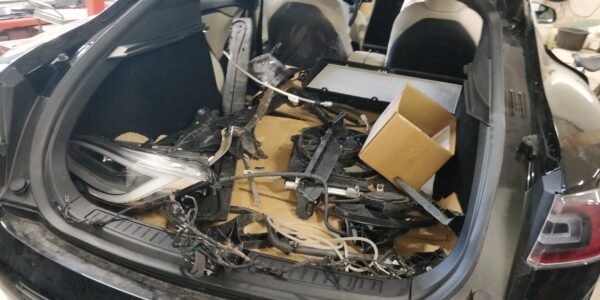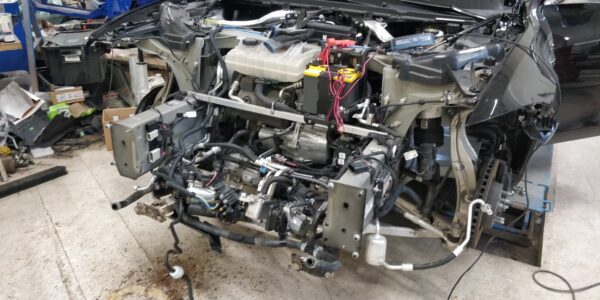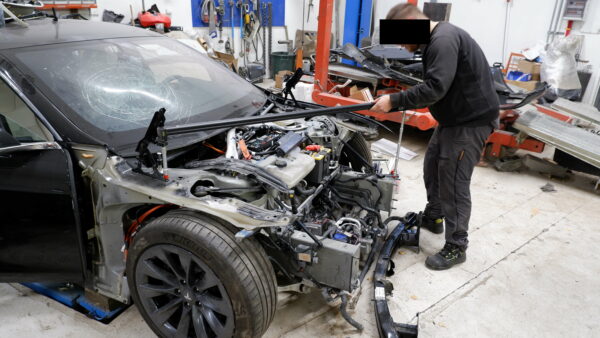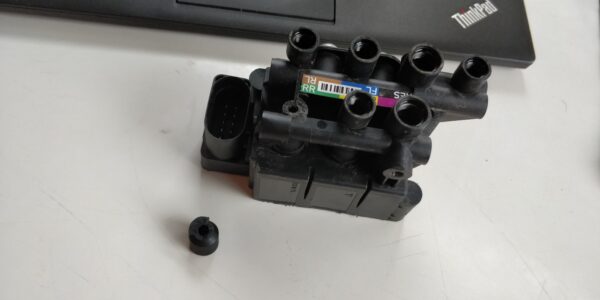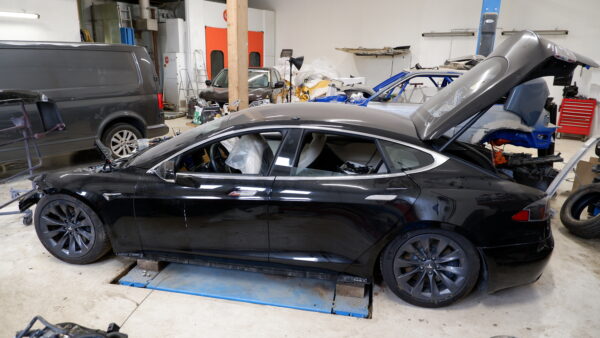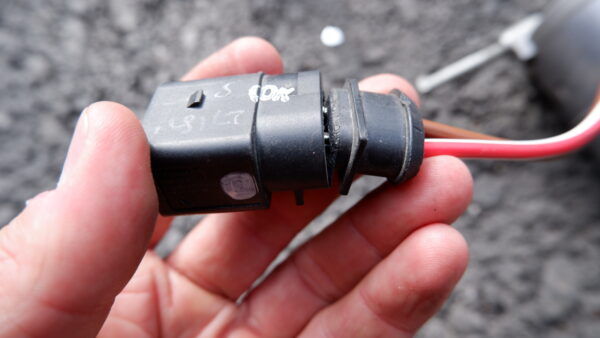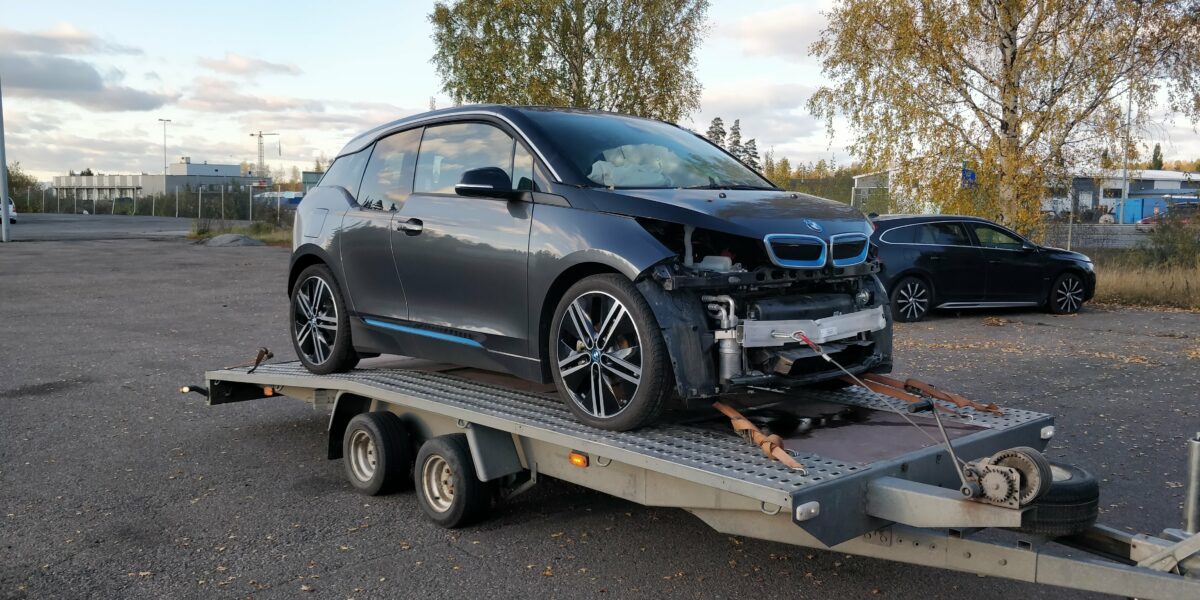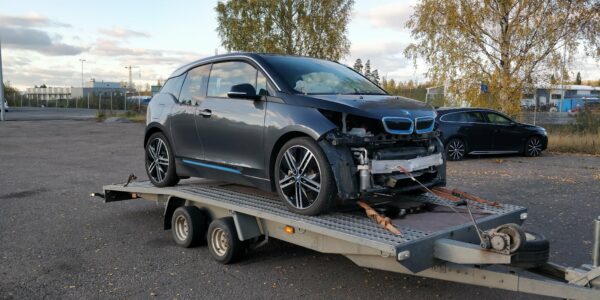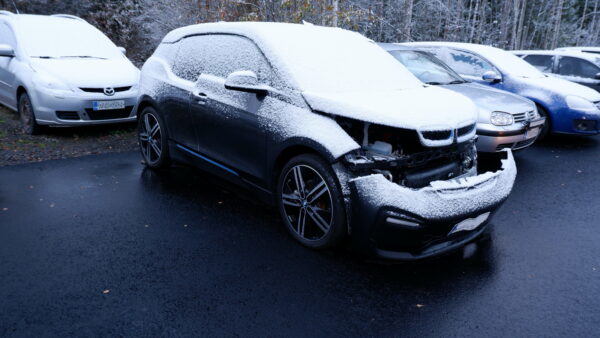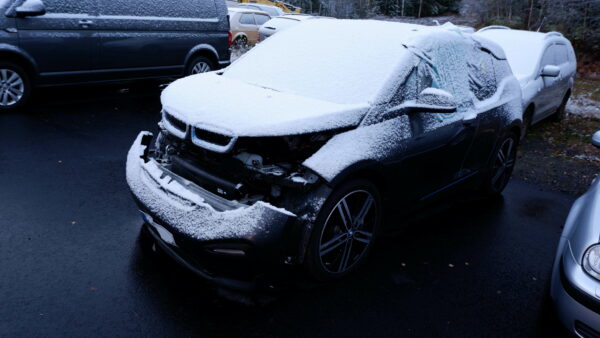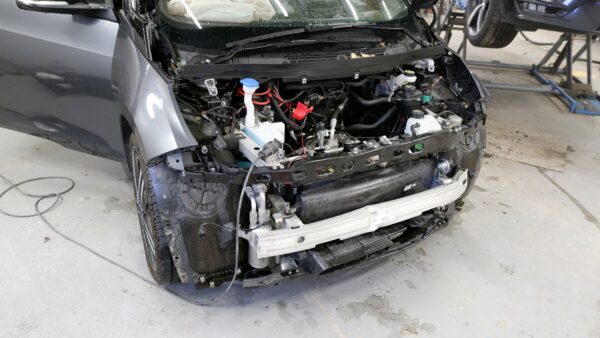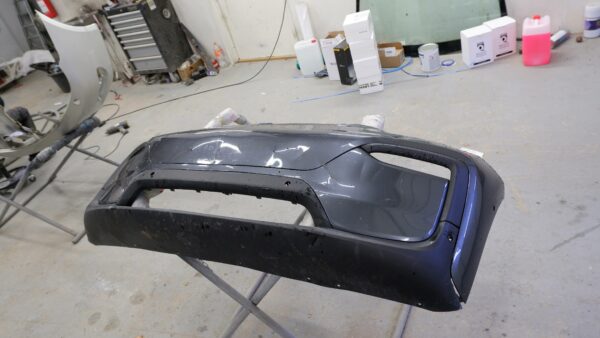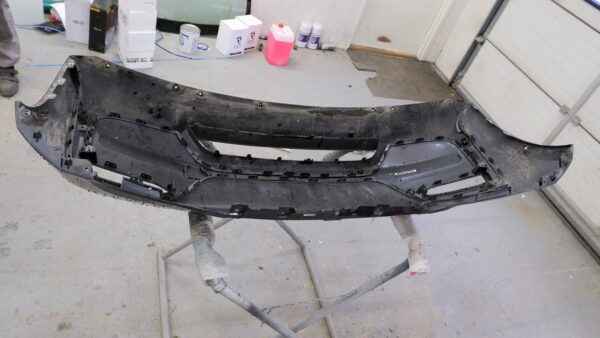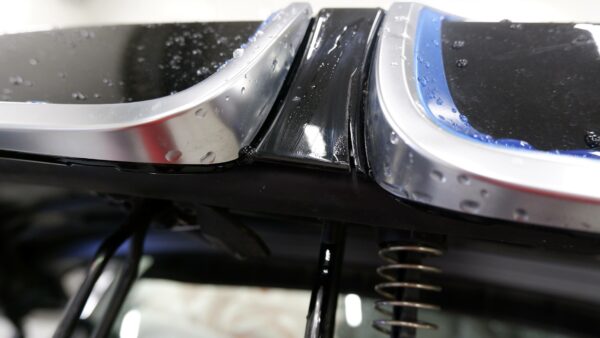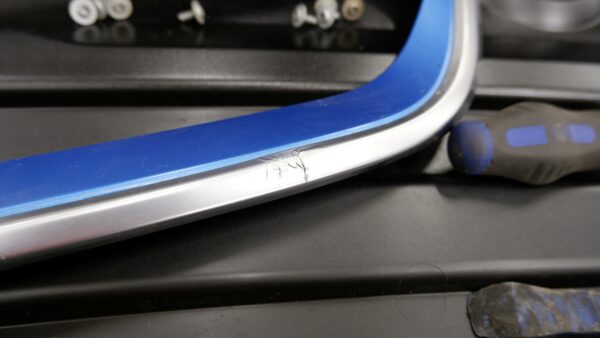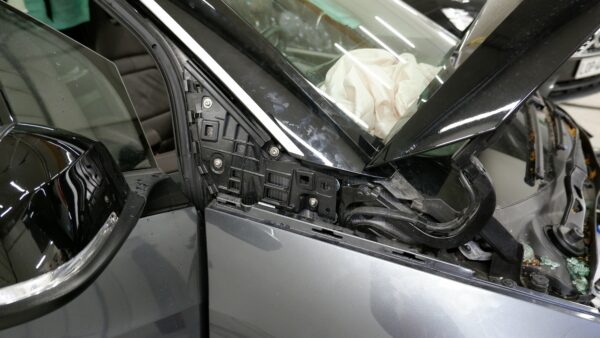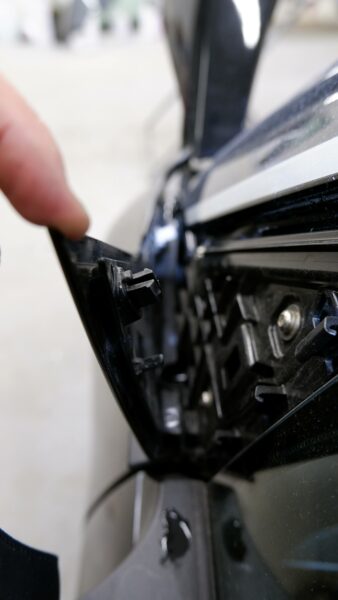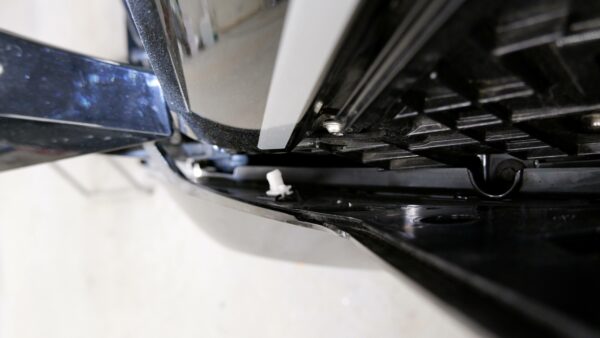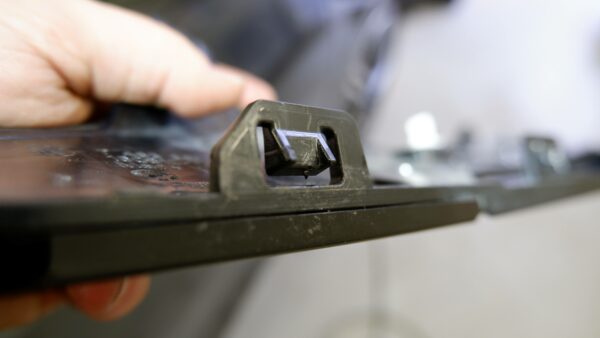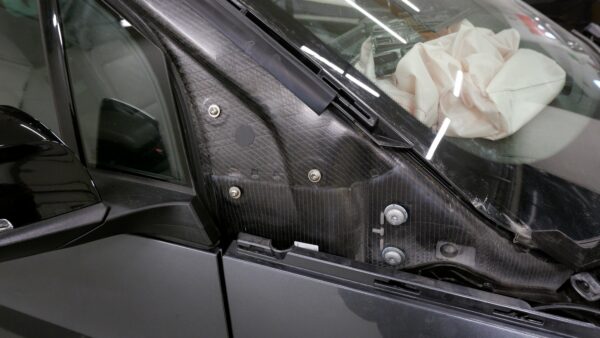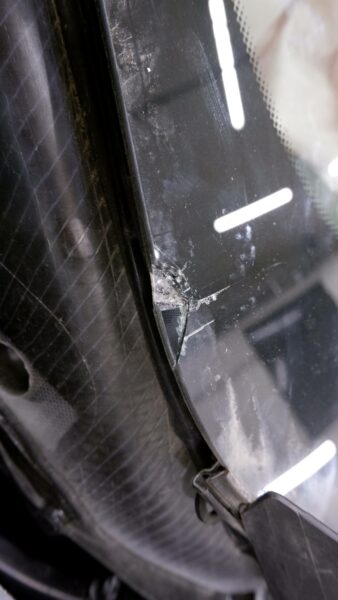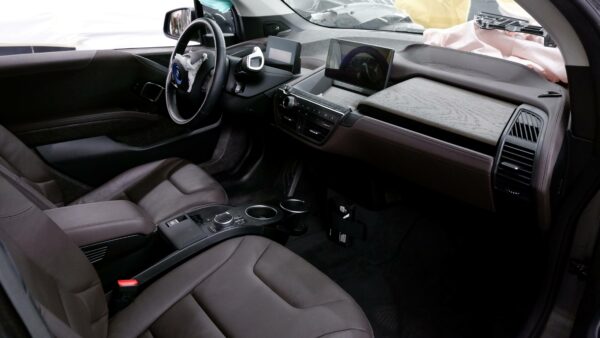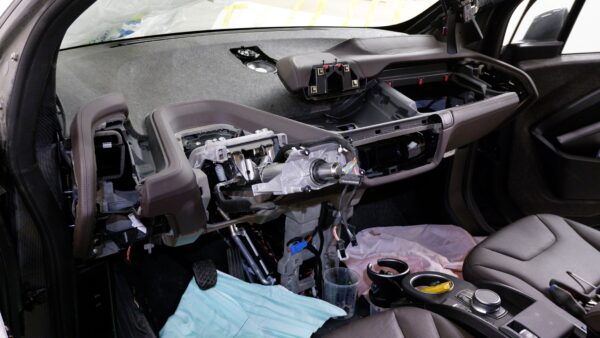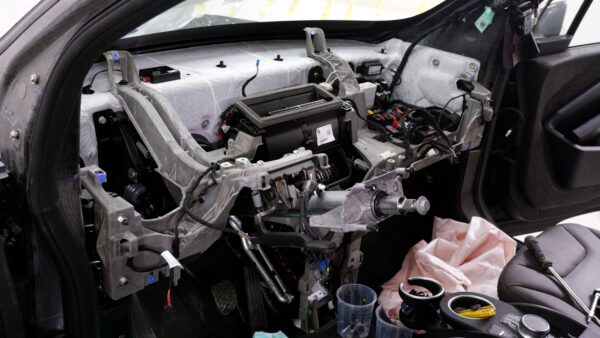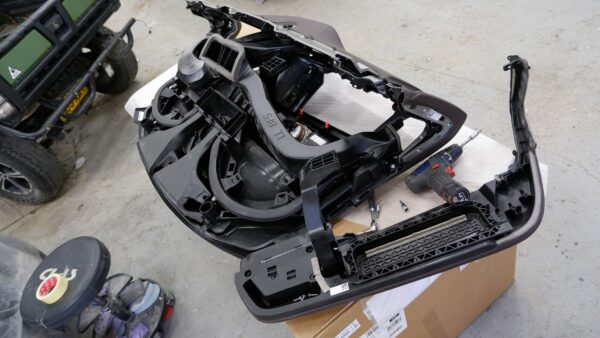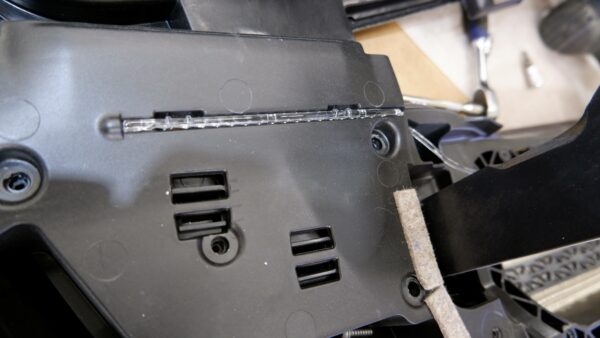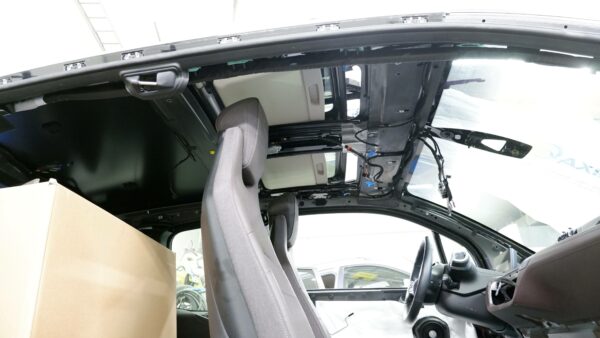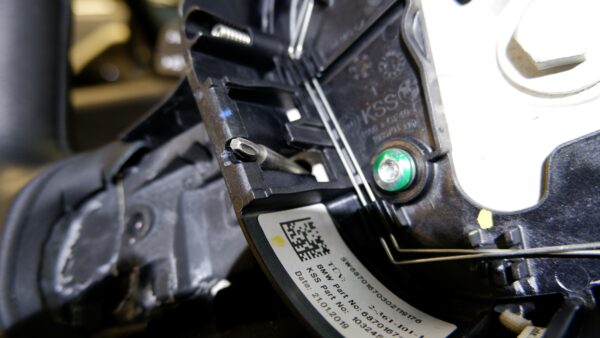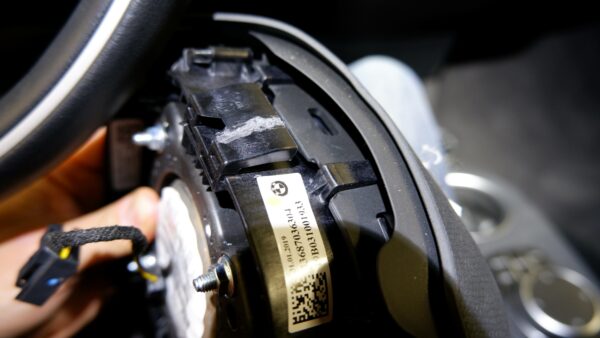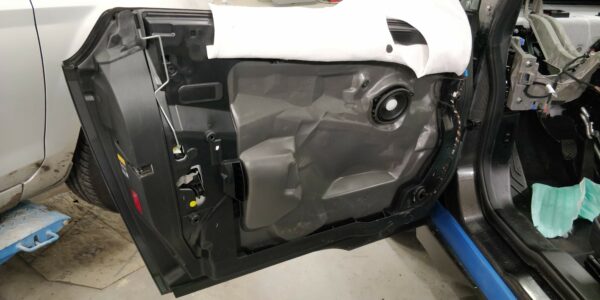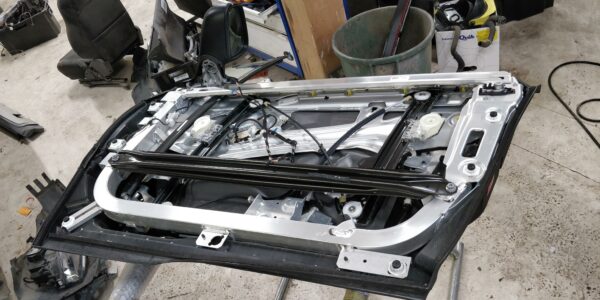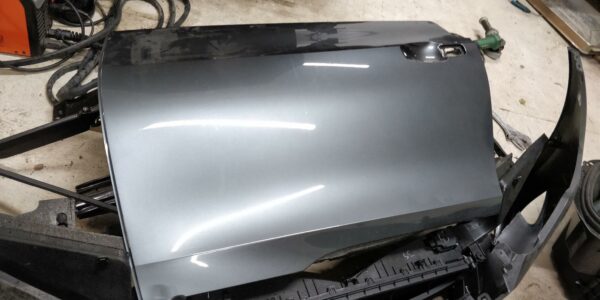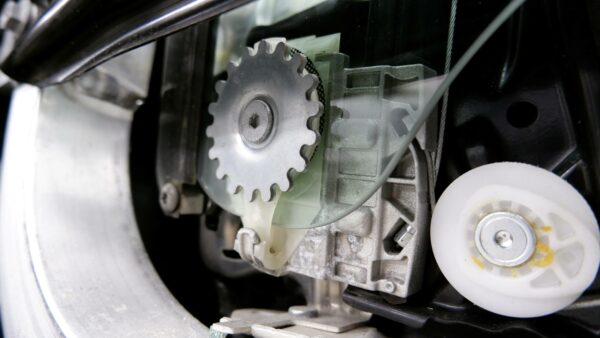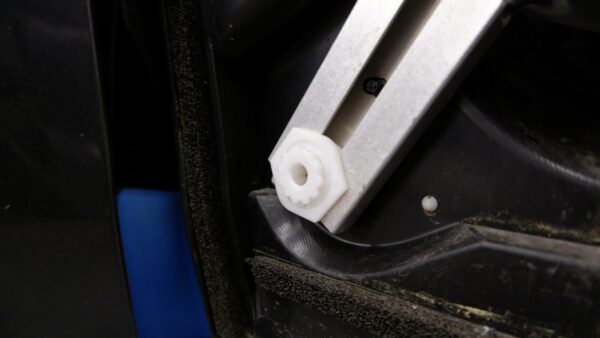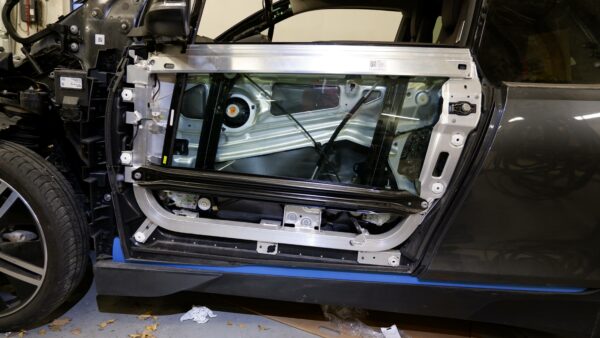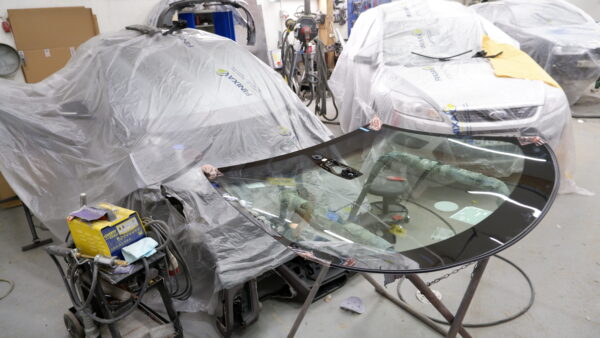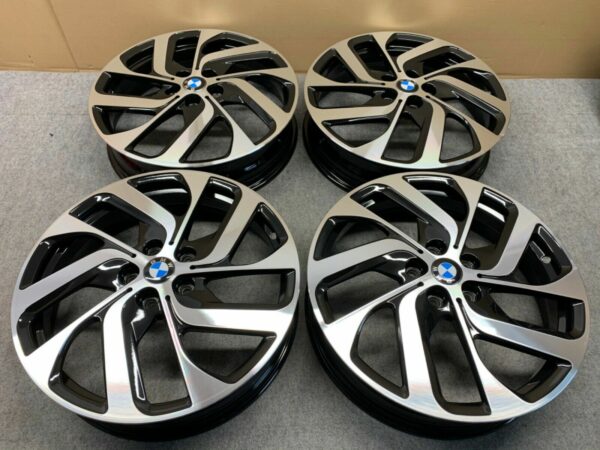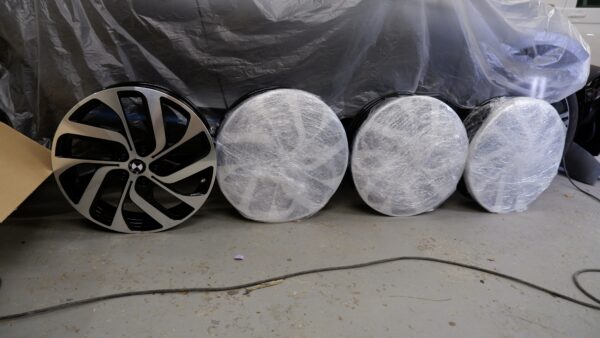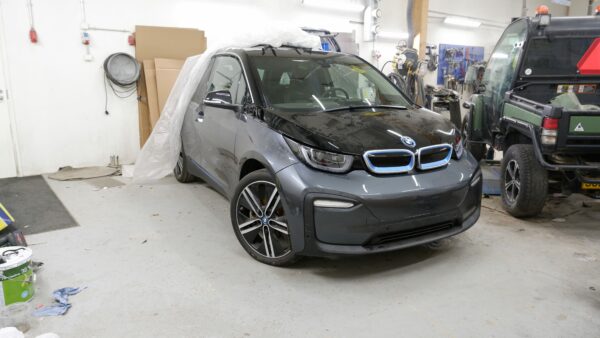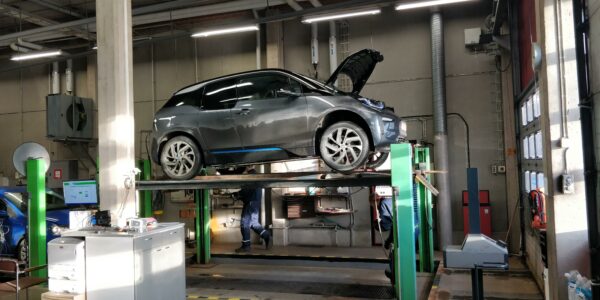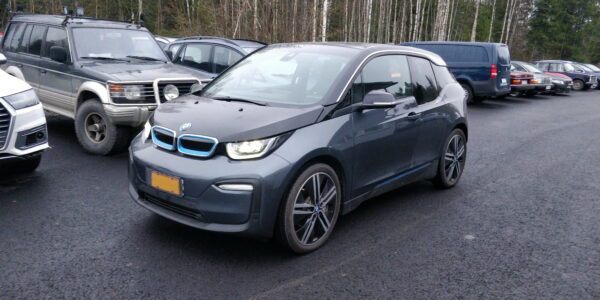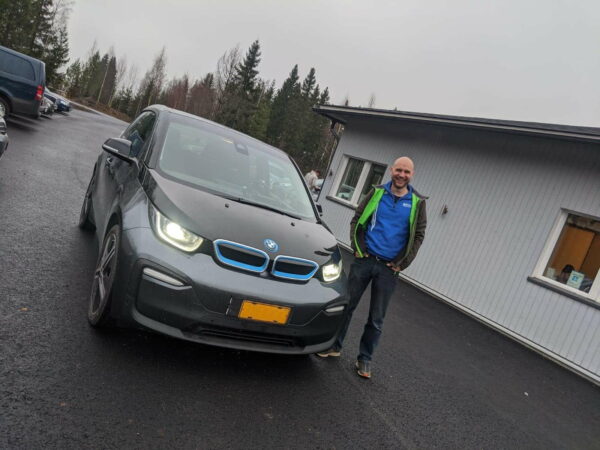Tuleva projektikin tuli jo hankittua, joten dokumentoidaan nyt ensin syksyn ja talven perheautoprojekti alta pois.
Heikin perheessä kun oli autoilun sähköistäminen makuun päästy, alkoi hiljalleen tuntua siltä, että halutaan vaihtaa myös perheen käyttöauto Passat GTE kokonaan sähköiseksi. Vetokoukku ja jonkinlainen vetokykykin haluttiin säilyttää, jolloin vaihtoehtoja ei ollut kovin montaa. Sopivasti SVT:lle tuli myyntiin vm 2019 Audi e-tron, joka muutaman päivän jahkailun jälkeen päätettiin ostaa.
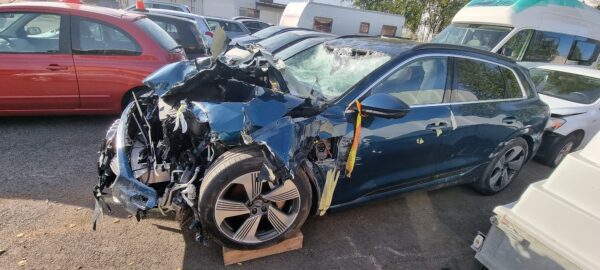
Jo kuvista kävi selväksi, että auto oli ollut hirvikolarissa. Myöhemmin aiemman omistajan kanssa jutellessa selvisi, että hirvi oli eksynyt moottoritielle, eikä ollut aitojen välistä sitten osannut pois ja lopulta seurauksena oli tämä. Eläin lasille lähes täydestä motarivauhdista ja sen jälkeen vielä auton vasen kylki motarin kaiteeseen. Turvalaitteet olivat tehneet tehtävänsä, eikä henkilövahinkoja tullut. Keulasta aikalailla kaikki rikki. Näyttää hurjalta, kun alumiiniset pintaosat repeilevät palasiksi.
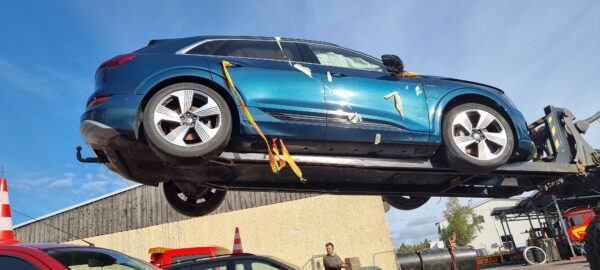
Oikea kylki autosta on täysin ehjä. Auto on siis 2019-mallia ja ajettu n. 45 000 km. Tuotu Suomeen käytettynä Saksasta. Autossa on hyvät varusteet, erilaisia ajoavustimia löytyy vaikka millä mitalla, Matrix-valot ja ylipäätään auto on isommalla akulla ja tehoilla varustettu 55-malli.
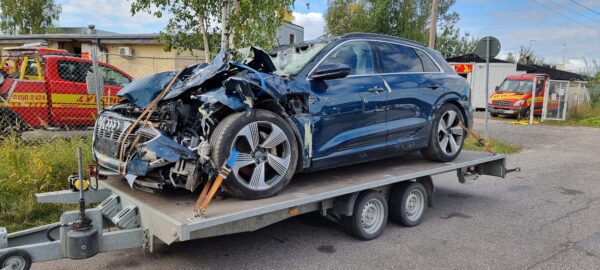

Hirvi lasille tullessaan oli painanut katon etureunaaki sisään. Toinen ikävä asia oli se, että auto oli seissyt käytännössä koko elokuun taivasalla ja sisään oli satanut vettä aikalailla. Voisi toivoa, että vaikka nämä tavallaan romuja ovat, niin toisten romut ovat toisten aarteita – voisi tällaisen lasin edes teipata sen verran, ettei kaikki vesi sada sisään. Onneksi sisään päässyt vesi ei ollut rikkonut mitään.
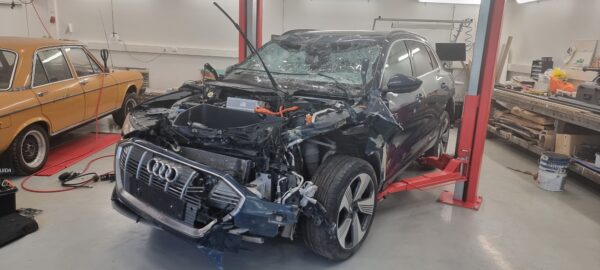
Osaltaan ostopäätökseen vaikutti se, että eBayssä sattui samaan aikaan olemaan myynnissä täydellinen keulapaketti puretusta autosta ja vielä saman värinen. Jahka e-tronin vaurioita oli tutkittu sen verran, että päätettiin pitää auto, laitettiin keulapaketti Saksasta välittömästi tilaukseen.
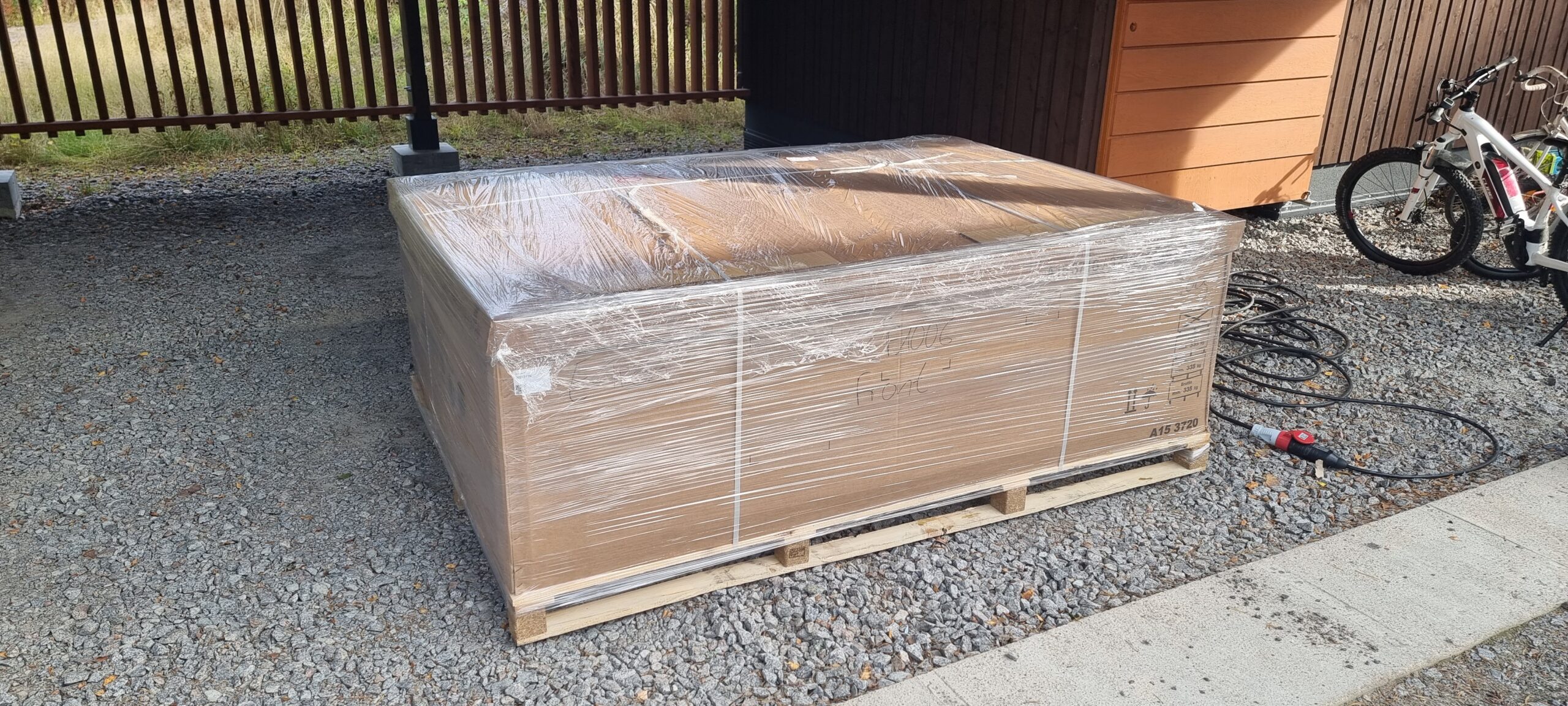
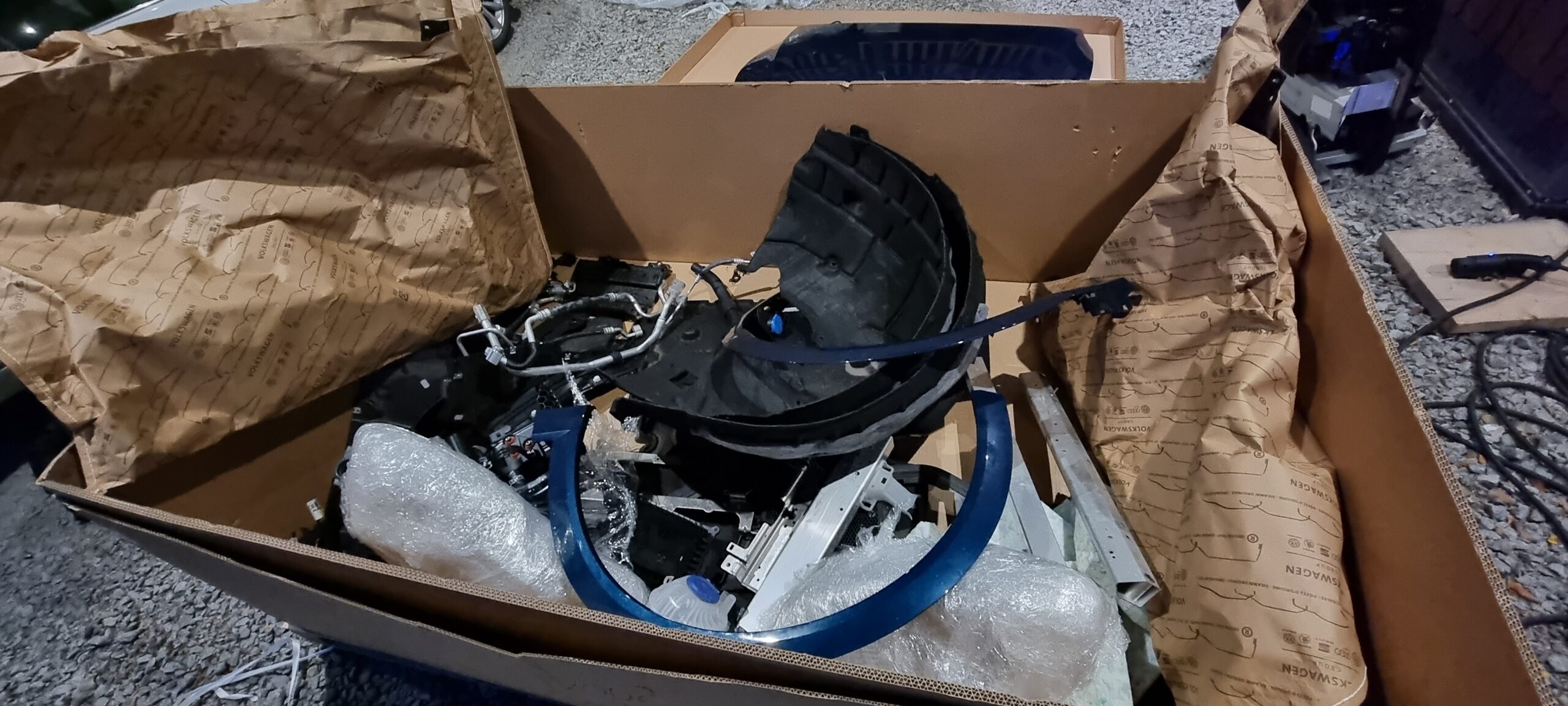

Paketissa tuli lähes kaikki, mitä keulan korjaamiseen tarvitaan. Myöhemmin tuli tilattua vielä muutama pikku juttu lisää samasta paikasta, mutta tämä paketti helpotti projektin läpiviemistä huomattavasti. Hyvin paljon työläämpää olisi ollut alkaa metsästää osia yksi kerrallaan. Keulapaketti maksoi 7500 euroa. Paketti oli purettu vain muutama kymmenen kilometriä ajetusta tehtaan testiautosta. Myöhemmin paljastui, että kyseinen auto oli varustettu Kiinan markkinoiden mukaisesti, eli siinä oli mm. vääränlainen rekisterikilven tausta.
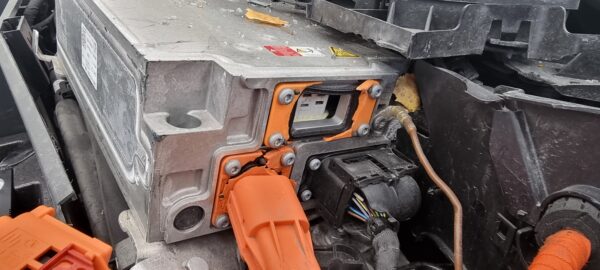
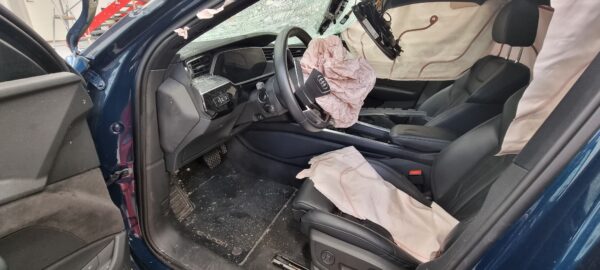
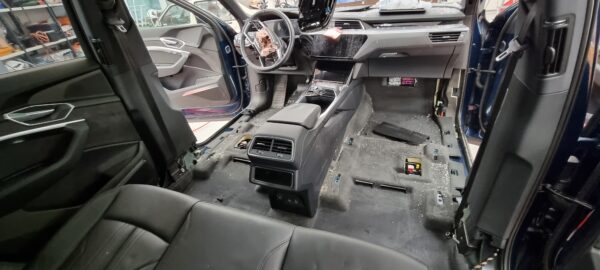
Ihan aluksi päätettiin purkaa sisusta, jotta saadaan lattiamatto kuivumaan. Matto oli litimärkä elokuun sateiden jäljiltä. Oli myös jo tiedossa, että katon oikominen tulee aiheuttamaan sen verran paljon sotkua, että sisusta on muutenkin parasta purkaa pois, ettei vahingoitu. Myös bägien ja vöiden uusimisen takia sisustaa joutuisi hyvin paljon purkamaan myöhemmin.
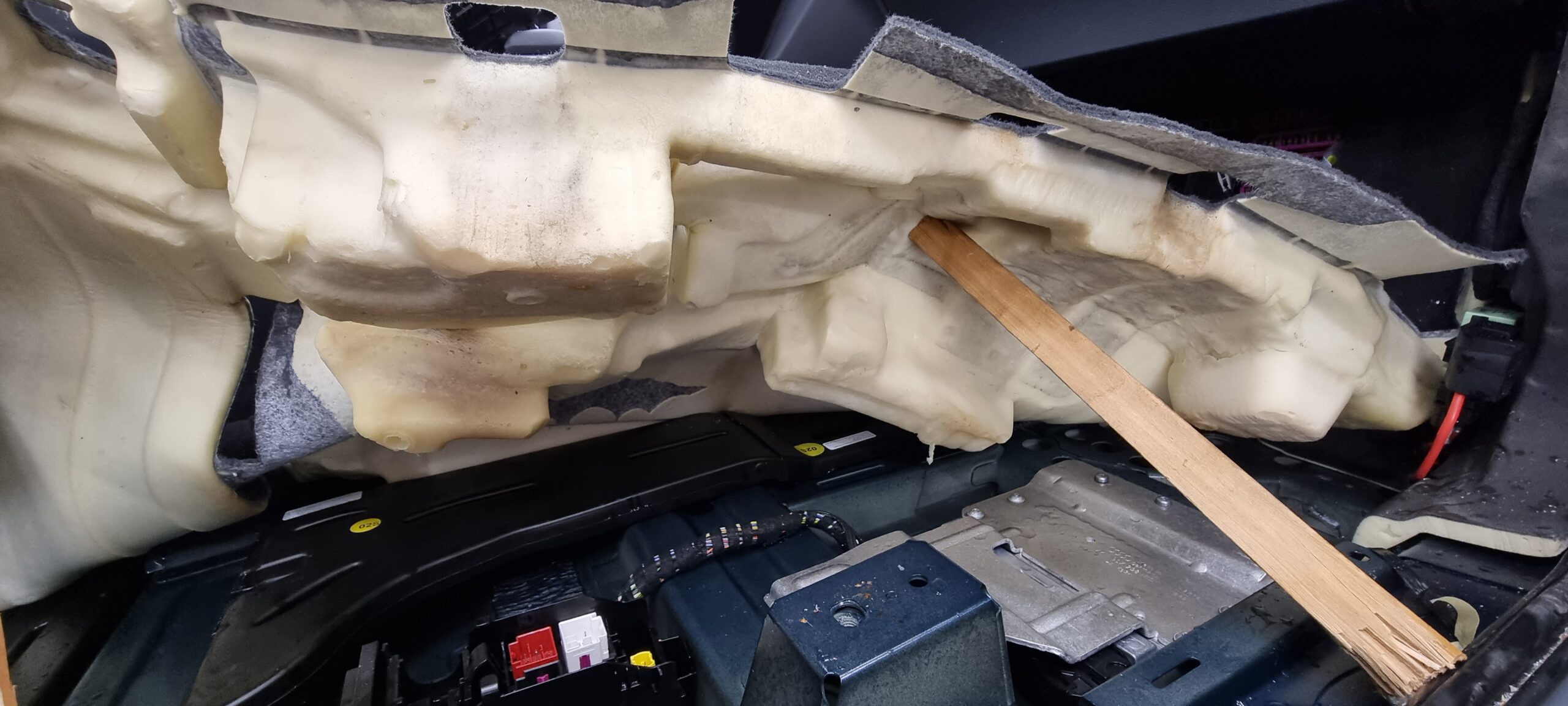
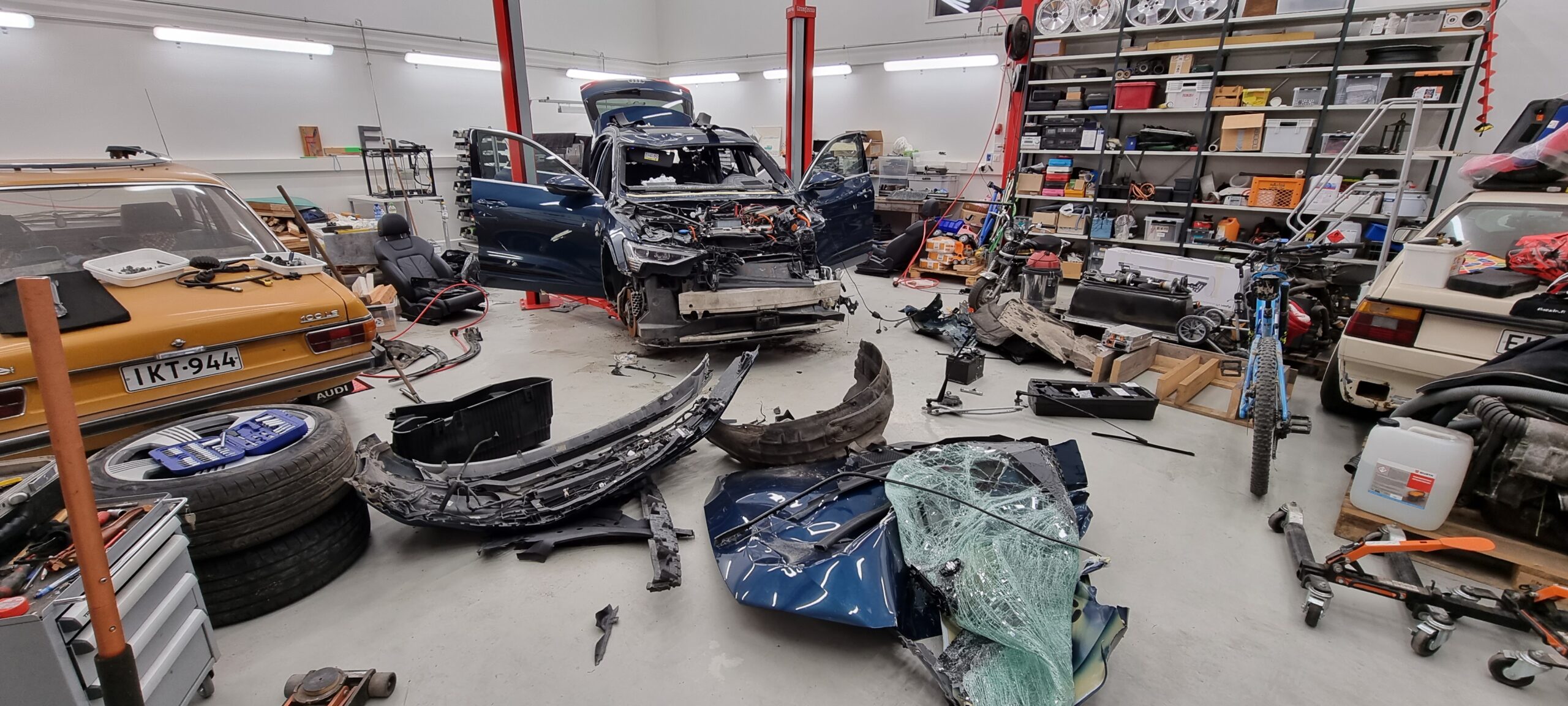
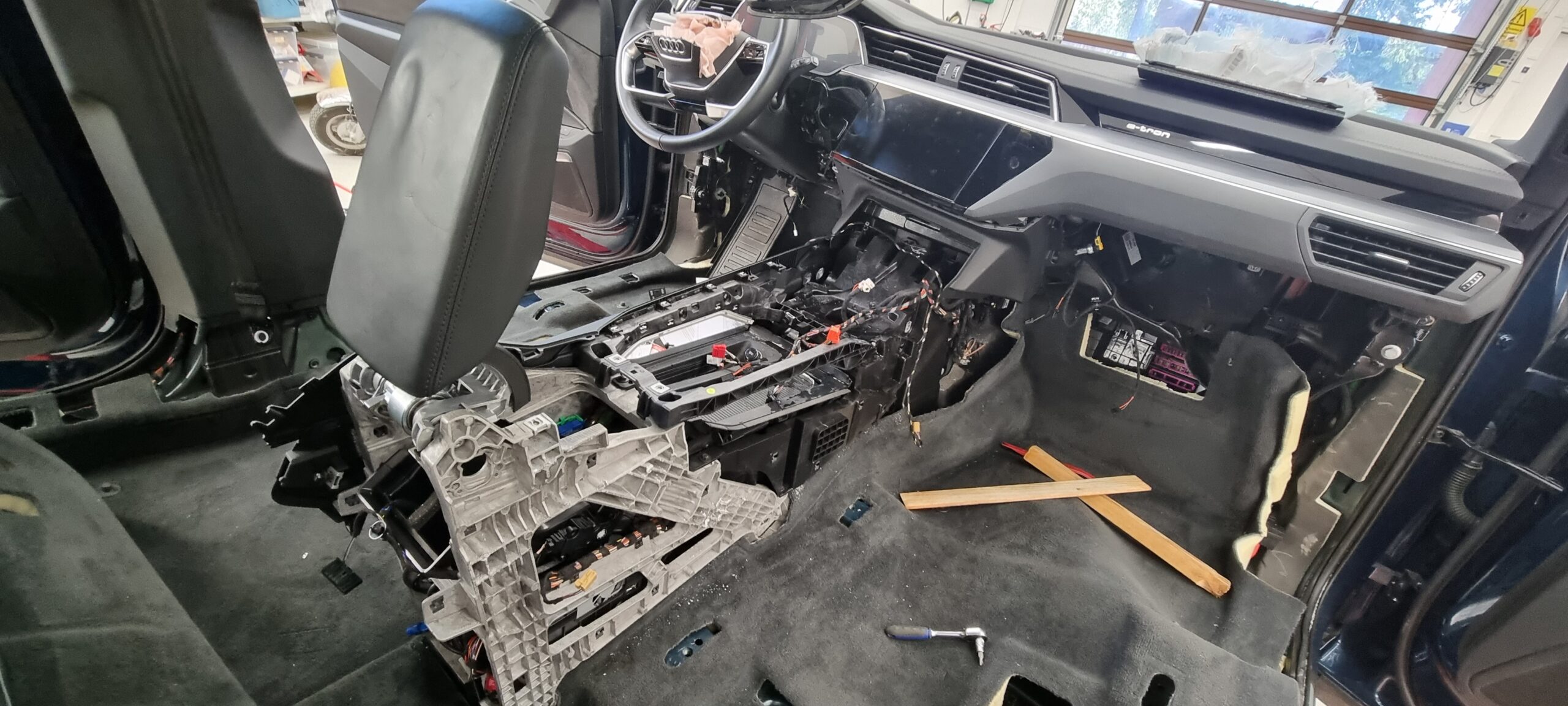
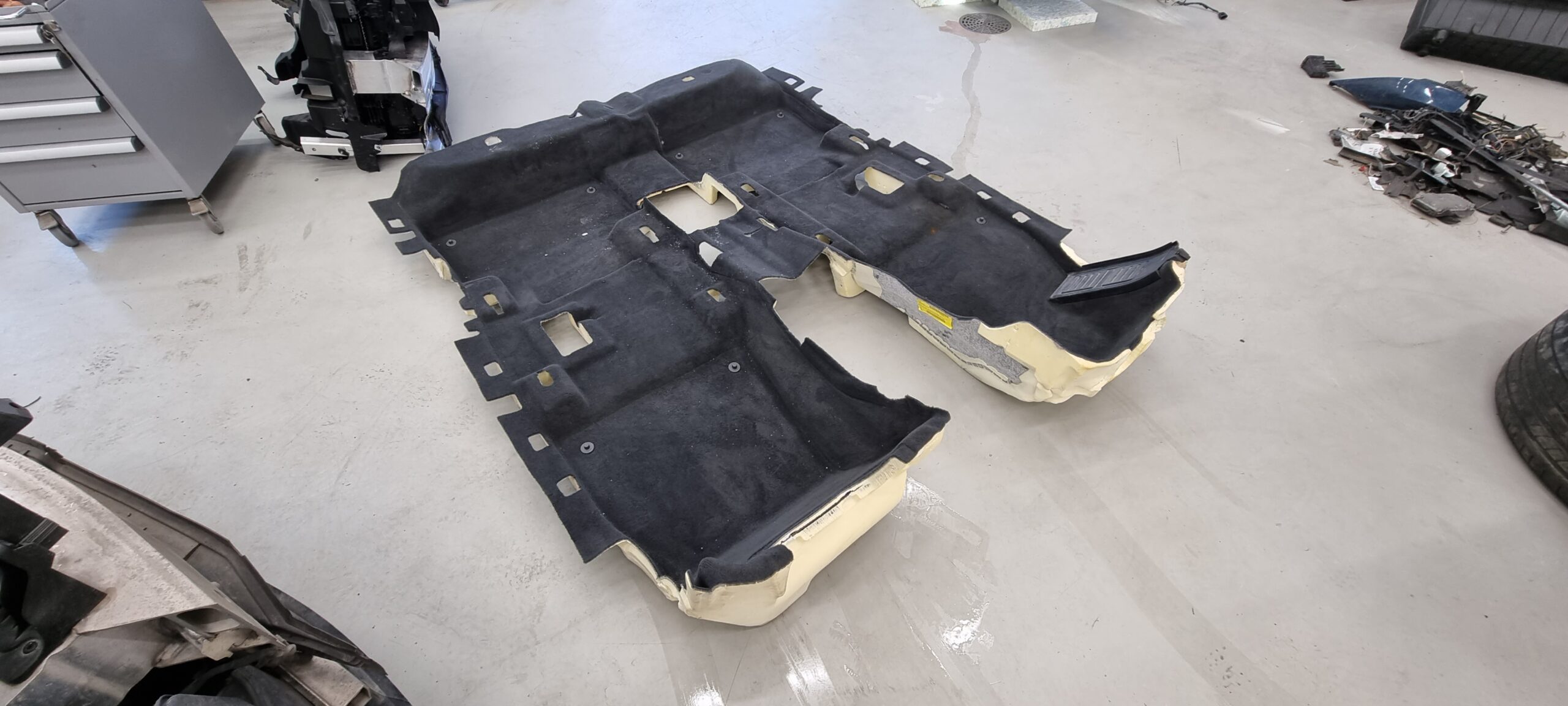

Talli alkoi hiljalleen täyttyä purkuosista. Keskikonsoli oli oikein saksalaisen insinöörityön taidonnäyte. Luultavasti ainakin puoli päivää purin pelkkää keskikonsolia, kun ensikertalaisena piti aika varovasti edetä, ettei riko mitään. ErWinistä ostetut ohjeet tulivat tällä kertaa todella tarpeeseen. Jos joku ei tiedä, niin erWin on Audin oma palvelu, mistä alle kympillä saa ostettua tunniksi käyttäoikeutta latailla erilaisia ohjeita, sähkökaavioita jne. Tunnissa ehtii ladata käytännössä kaiken, mitä tällaisessa projektissa tarvitsee. Esimerkiksi kaikki sisustan purku- ja kasausohjeet saa yhtenä isona PDF-tiedostona.

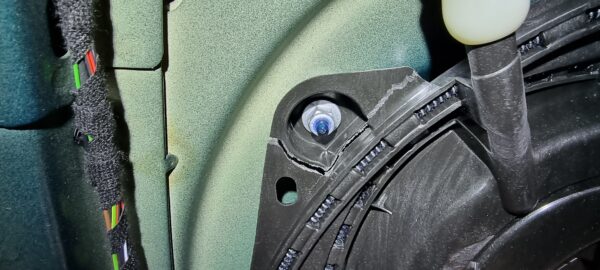
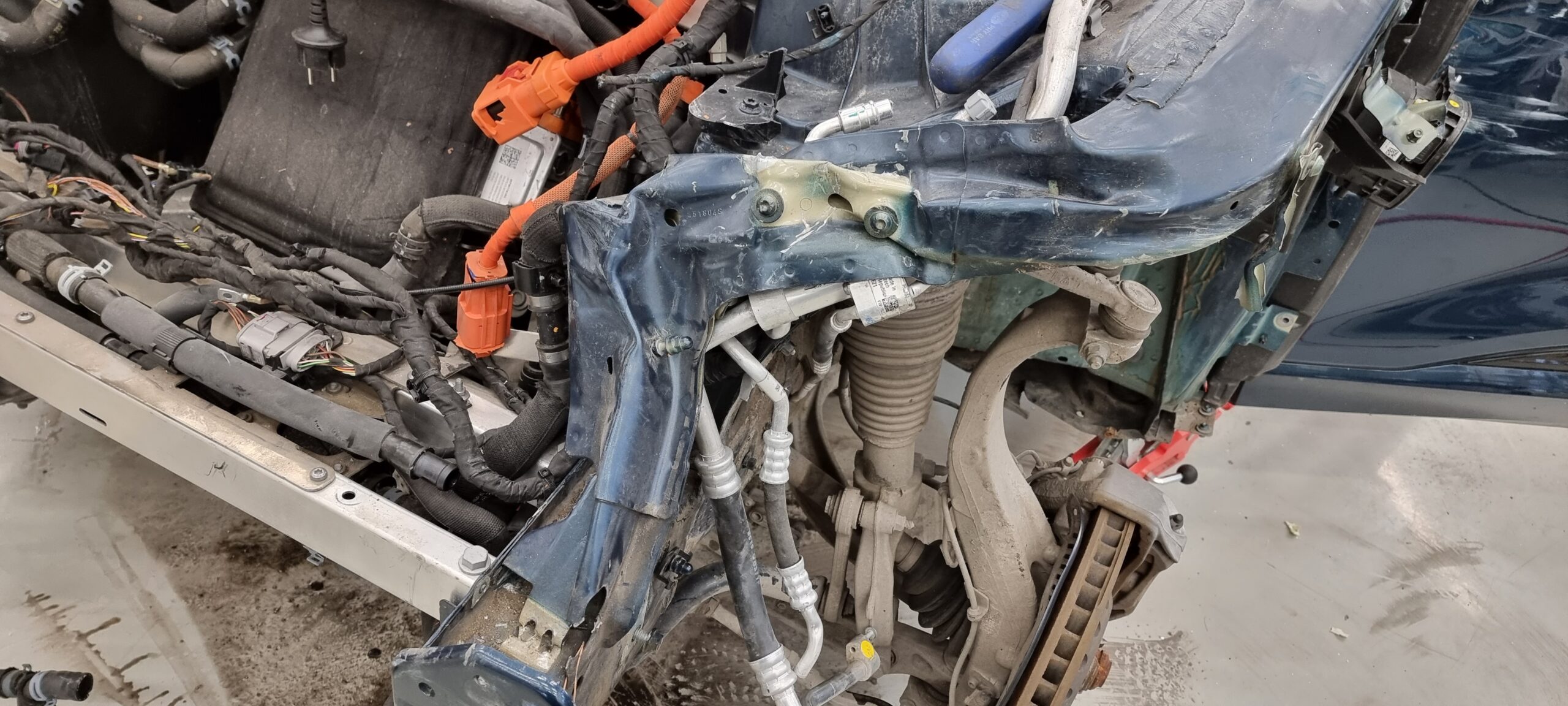
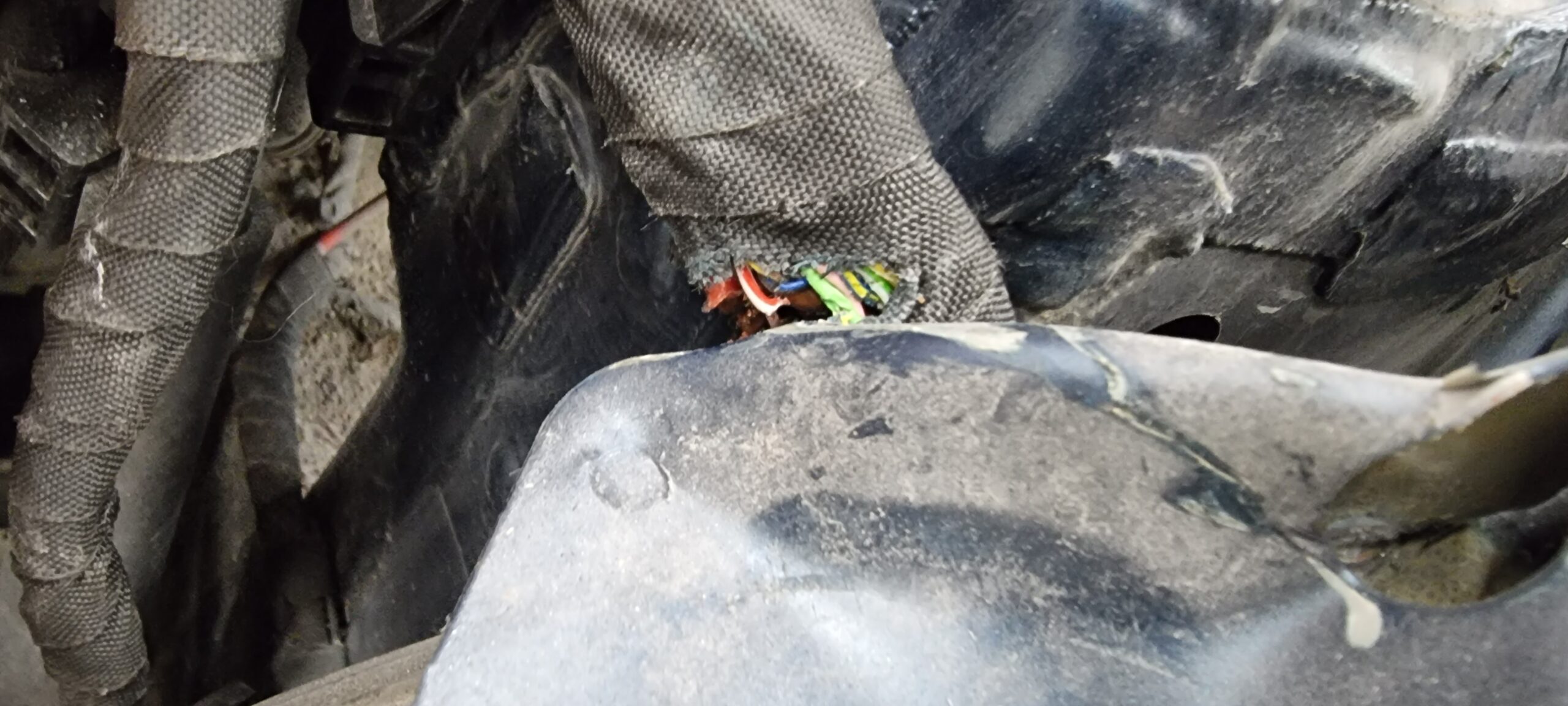
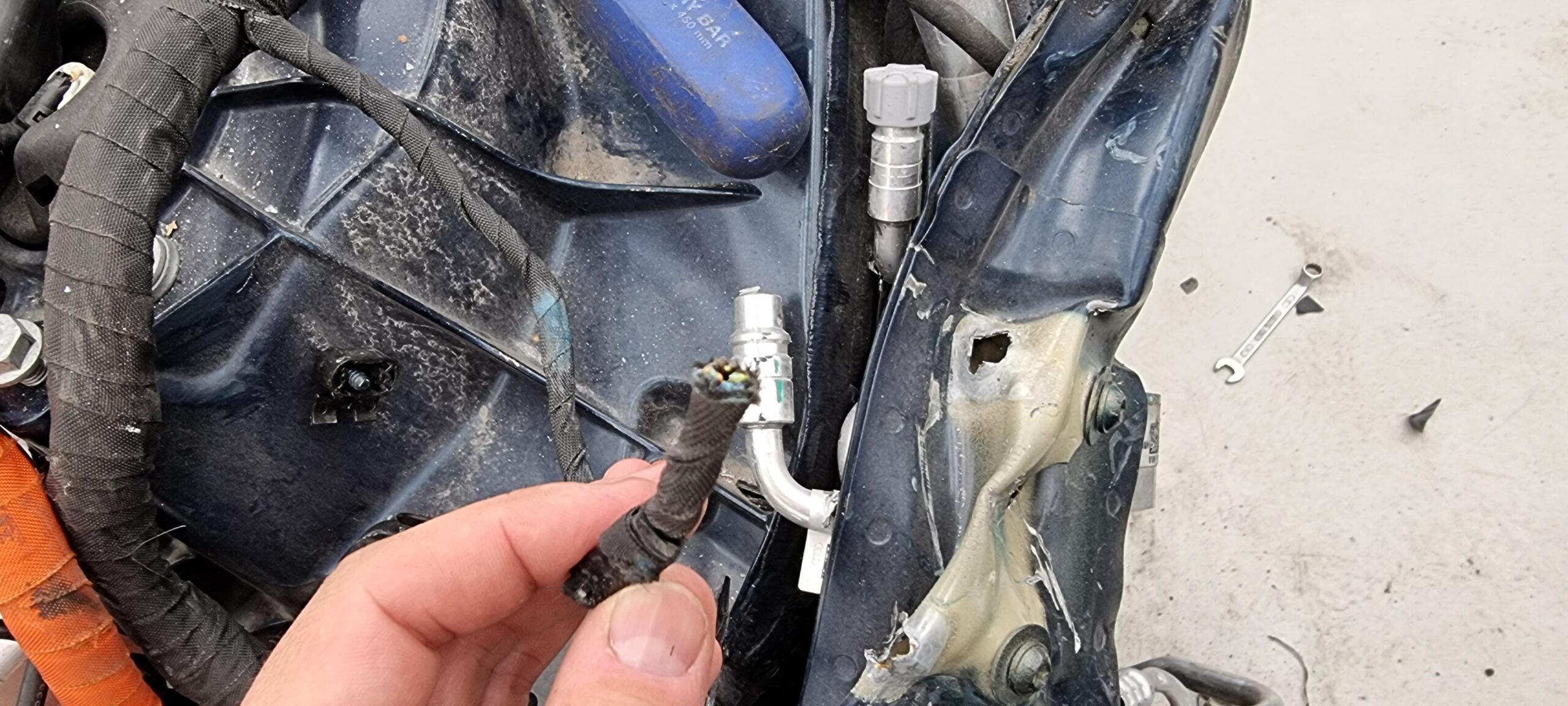

Vasemmasas etunurkassa yläaisa oli reilusti vääntynyt ja vääntyessään rikkonut joitakin sähköjohtoja. Heti alkuun mitattiin, että iskarin yläpää on paikallaan, eli isoja muodonmuutoksia ei ole onneksi tullut.
Ainoa isompi negatiivinen yllätys paljastui vasta päiviä purkamisen aloittamisen jälkeen. Ihmettelin, kun rengas ei nosturilla pyöri kunnolla ja aloin selvitellä asiaa. Selvisi, että auton oikealla puolella vetarin laippa heilui epämääräisesti. Vetarin irrottamisen jälkeen laippa jäi ns. käteen. Ei auttanut muu kuin tiputtaa tekniikka etupäästä pois.
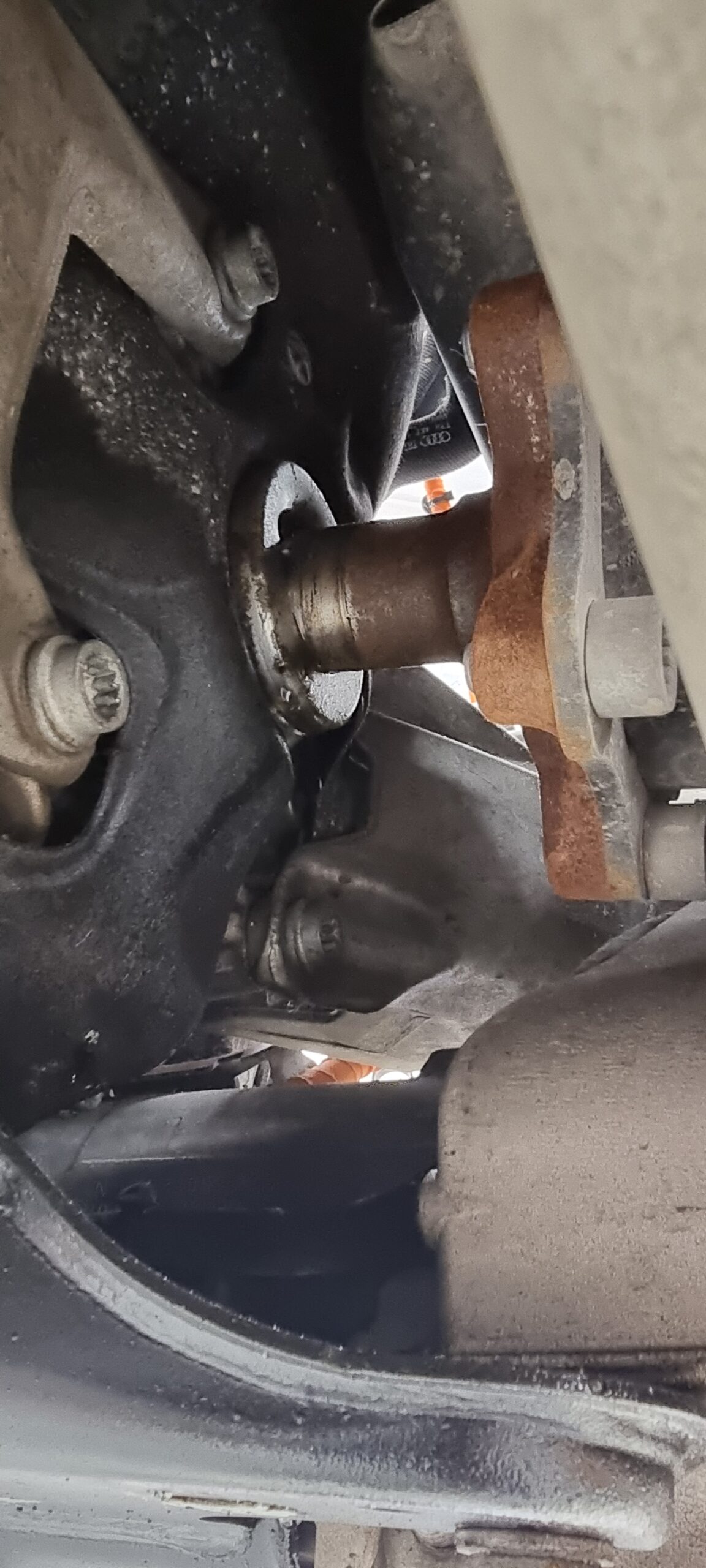



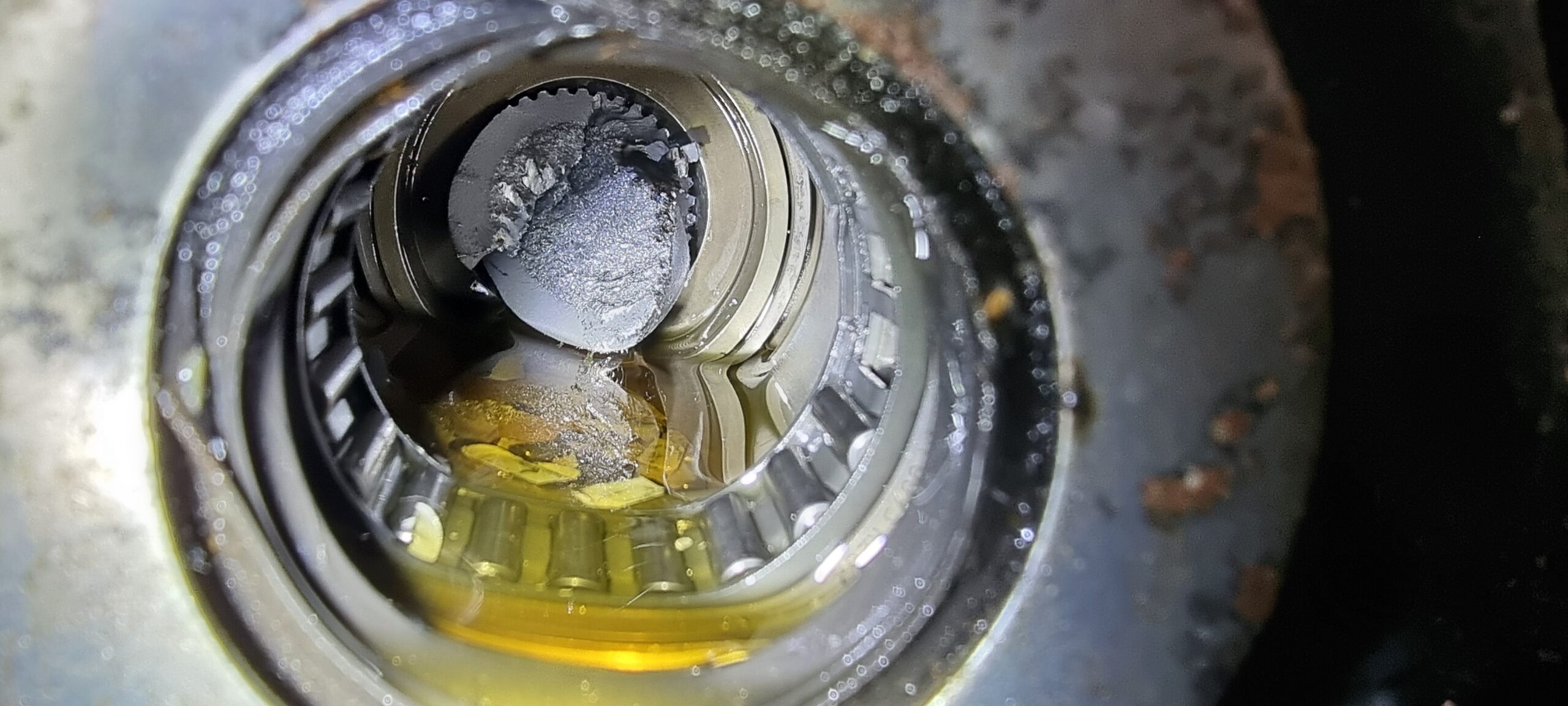
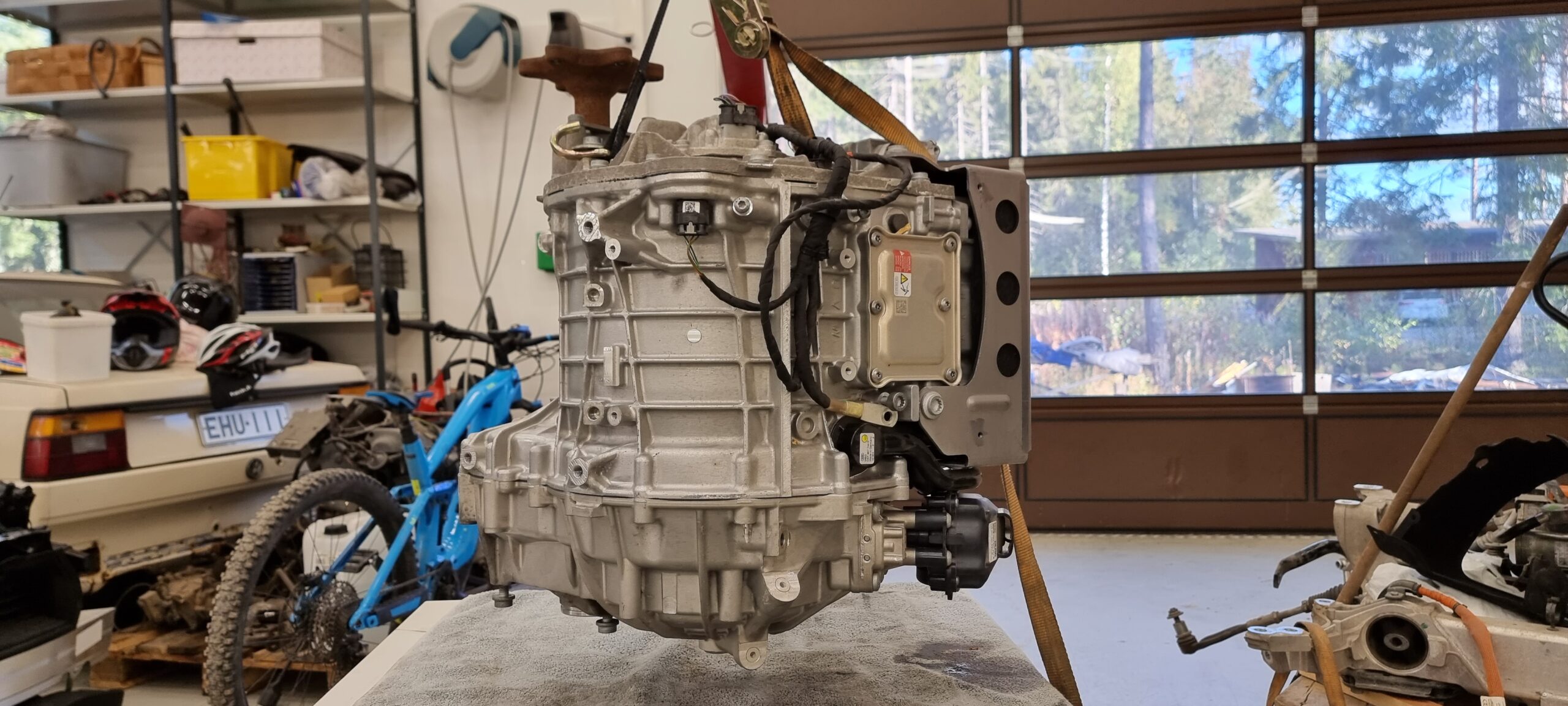
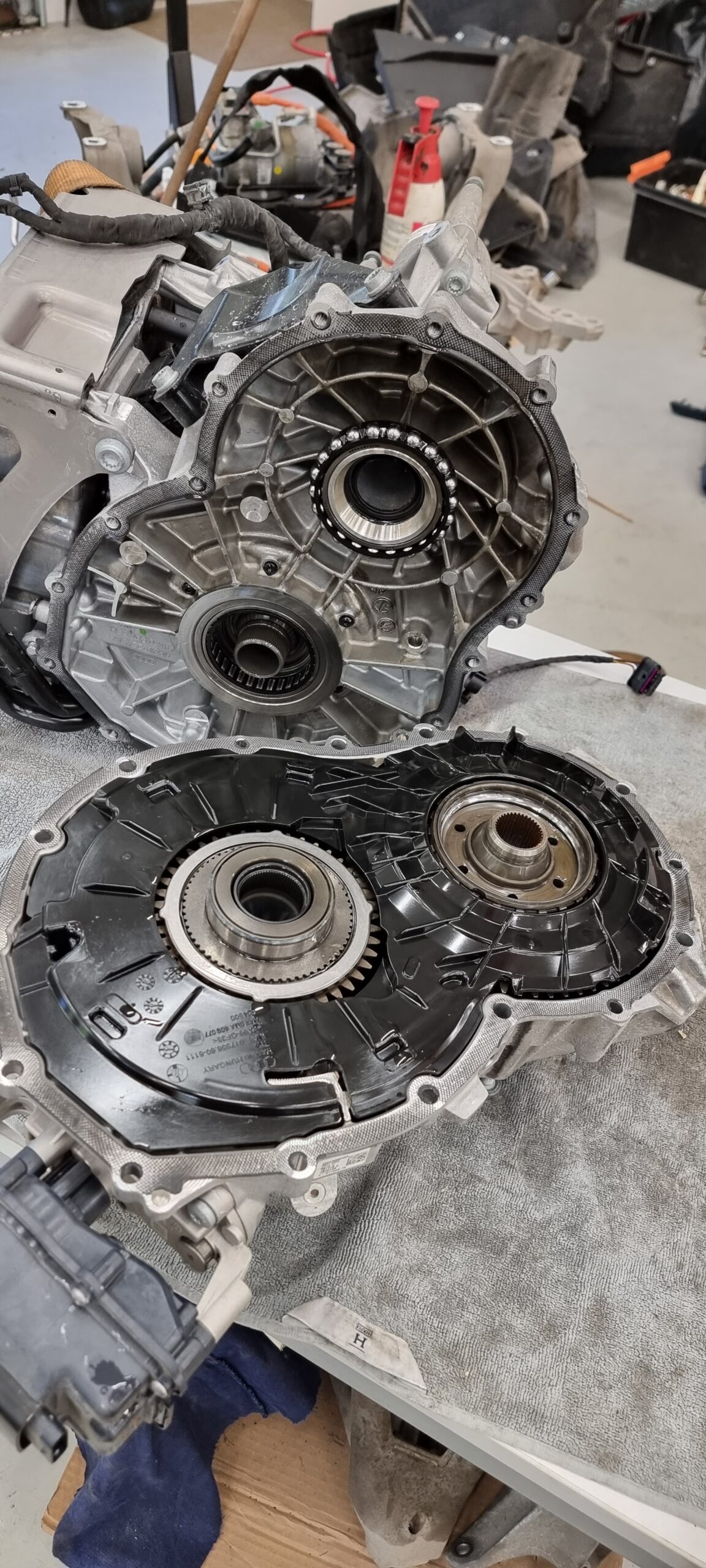

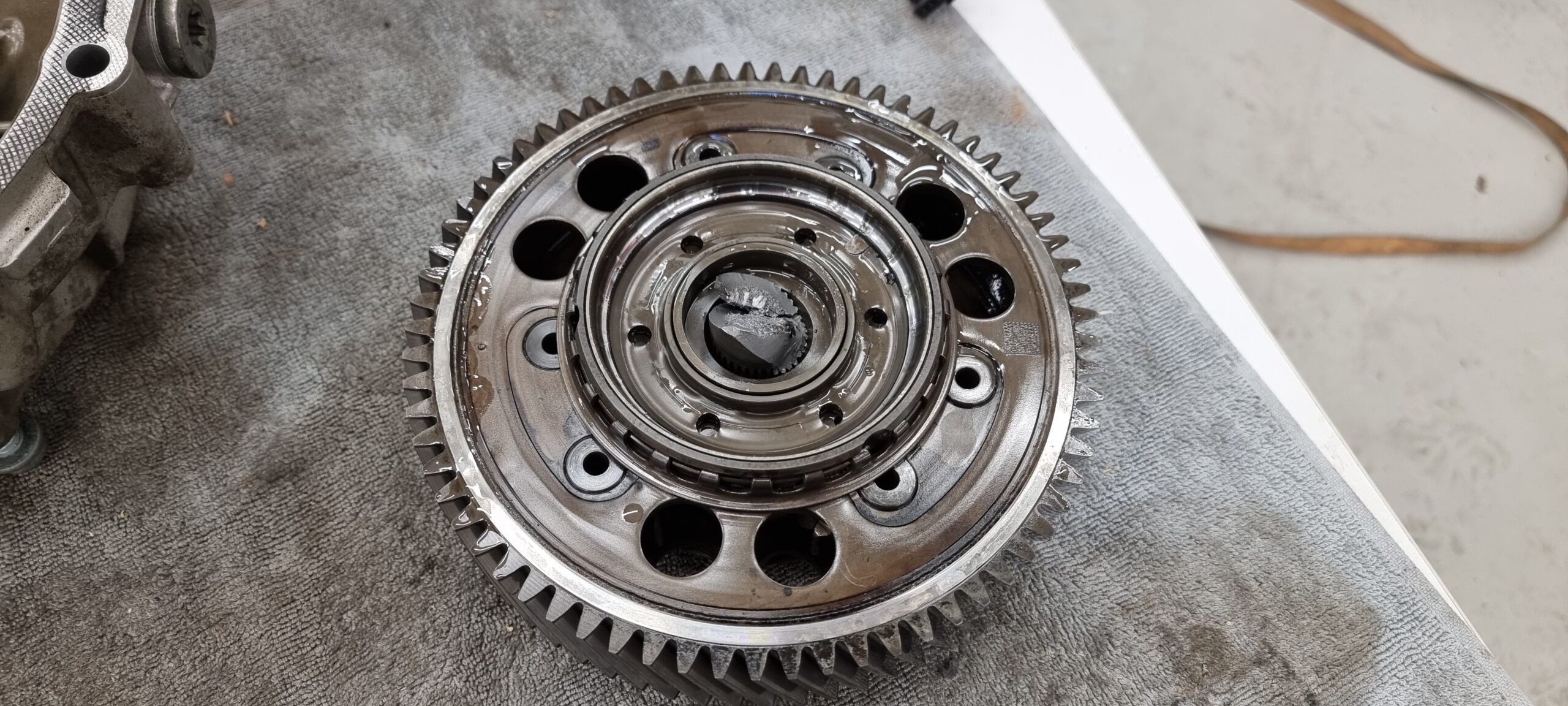

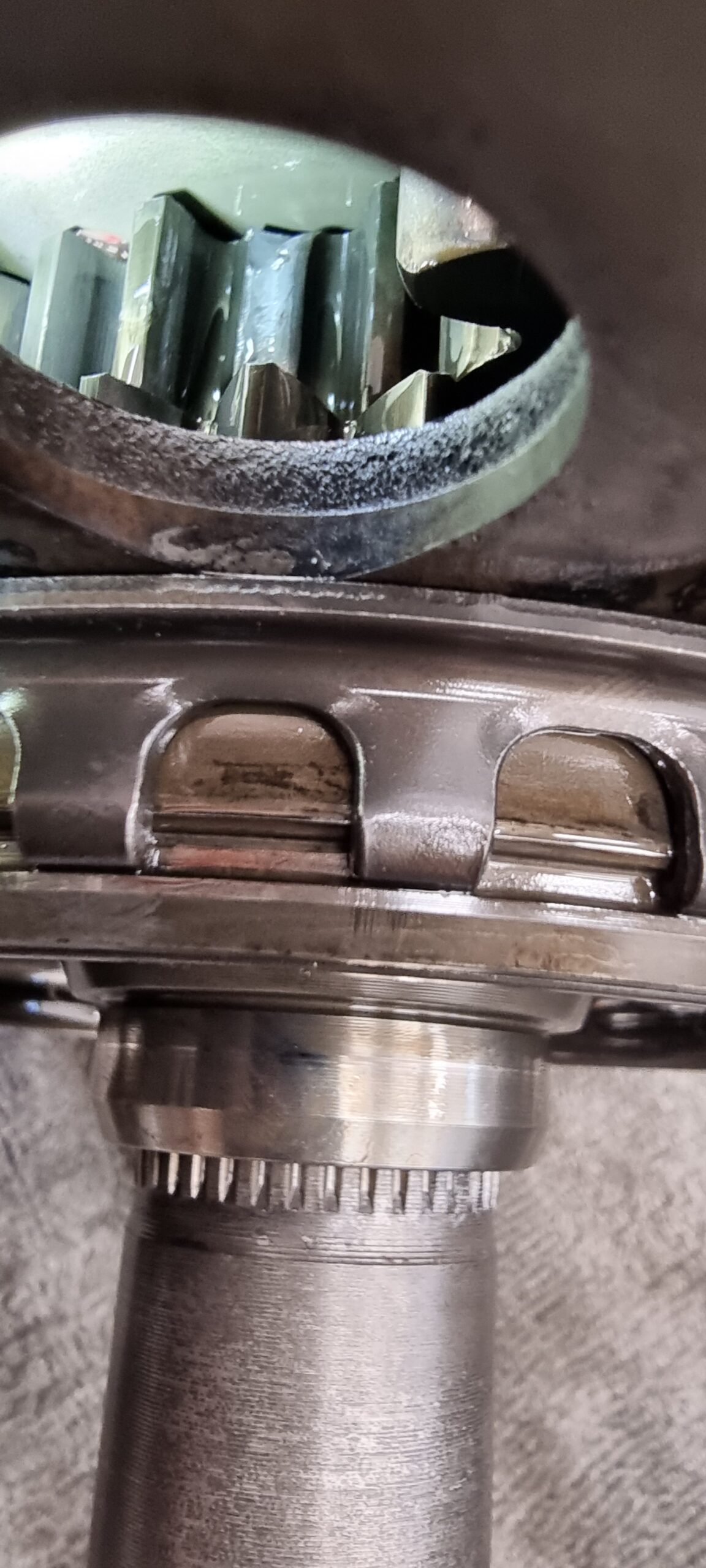


Sinänsä sähköauton tekniikan tiputtaa äkkiä pois. Ei tarvitse miettiä polttoainelinjoja tai pakoputkea. Muutamia liittimiä, vesiletkuja ja apurungon pultit irti ja paketti on melkein sillä irti.
Kun etuvoimansiirto oli purettu, paljastui katkenneen vetarin laipan lisäksi, että tasauspyörästöstä oli hampaita poikki. Siksi ei kuljettajan puoleinen pyörä pyörinyt, vaikka parkkilukko oli vapautettu. Erikoista oli se, miksi näi oli käynyt. Todennäköisesti motarin kaiteeseen osuessa kuljettajan pyörä oli äkillisesti lyönyt lukkoon, momentti oli siirtynyt voimansiirtoon ja heikoimmat kohdat löytyivät sitten toisen puolen laipasta ja tasauspyörästön hampaista.
Pelkkää perää ei tietenkään saanut varaosana mistään. Onneksi koko loota maksoi uutenakin vain n. 1400 euroa, joten tästä ei isoa lovea projektin budjettiin lopulta tullut – ylimääräistä vaivaa toki.
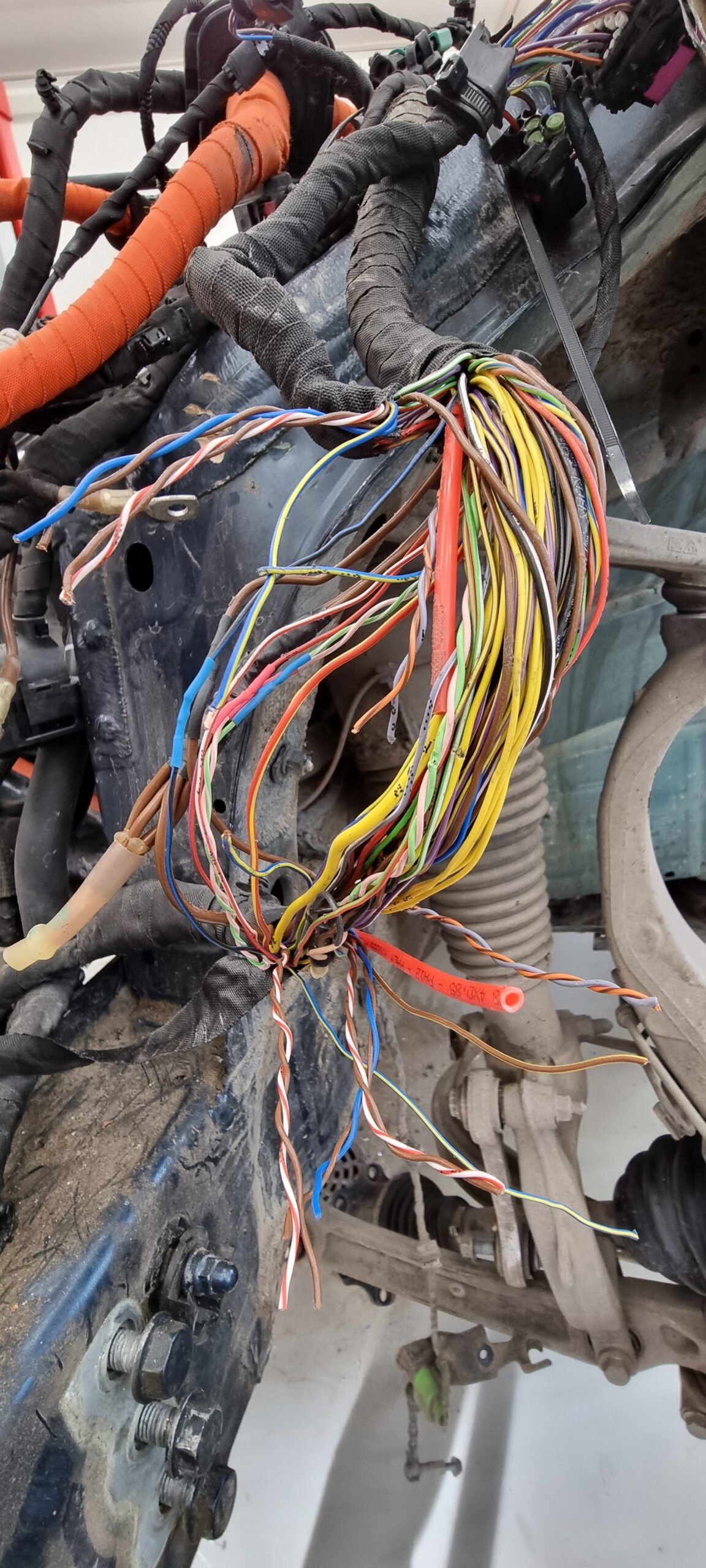
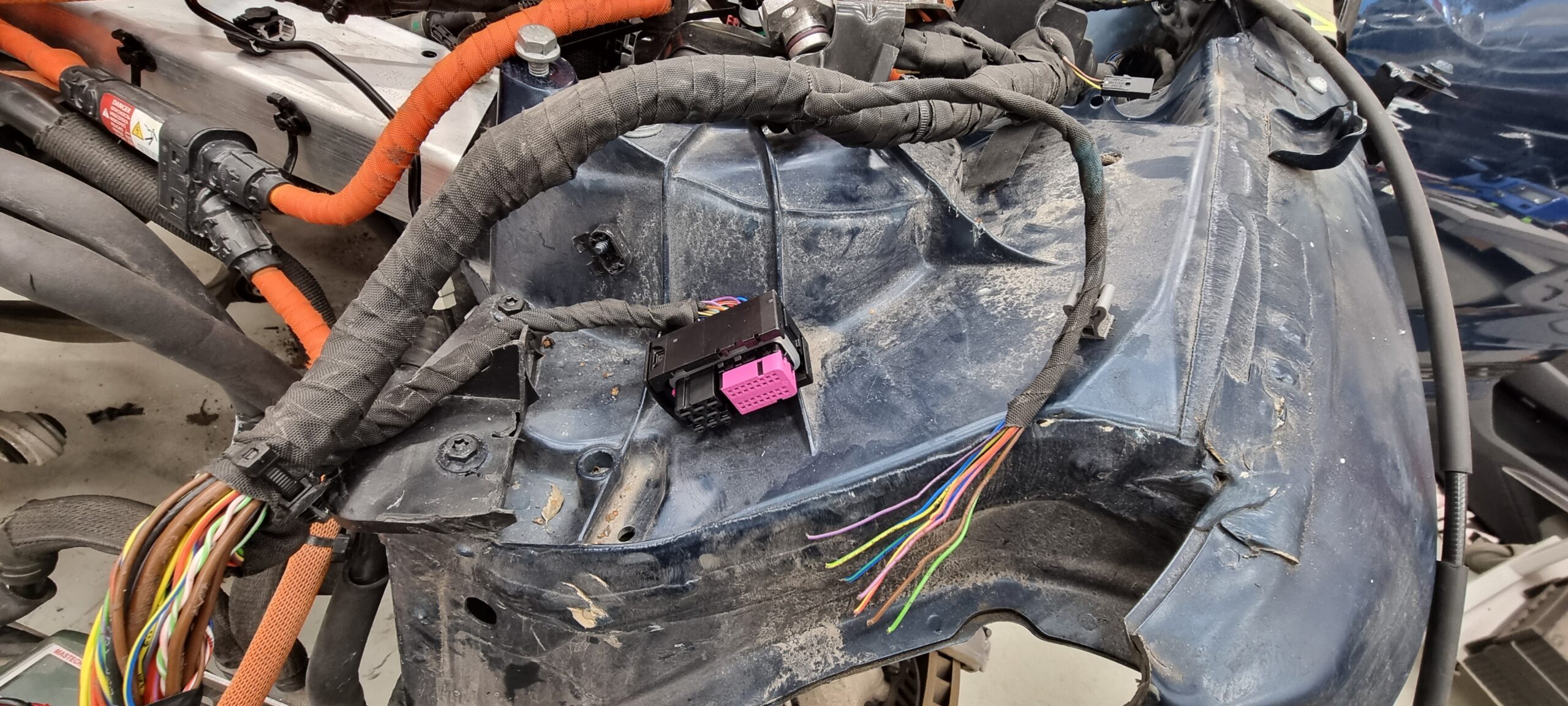
Johtosarjan korjailujumppaa sai harrastaa useita tunteja. Muutaman liittimen joutui uusimaan – mm. kuvassa näkyvä lämmönhallinnan ohjainlaitteen liitin sisälsi ”muutaman” pinnin ja olivat työläitä irrottaa ja siirtää uuteen liittimeen. Koko johtosarjan vaihtaminen uuteen olisi ollut aivan järjetön homma, tällöin auto olisi pitänyt purkaa aivan kokonaan. Korjaamalla tuli oikein hyvä ja toimiva paketti. Ilmajousituksen paineputkeen piti tehdä ylimääräinen jatko.
Sitten katon kimppuun. Kattoluukku oli tiputettu pois. Ensin katon etureuna tunkattiin suurin piirtein paikalleen. Mietittiin mitä tehdään. Yksi vaihtoehto olisi ollut irrottaa kattopelti kokonaisuudessaan. Päätettiin hylätä tämä vaihtoehto ja lähestyä ongelmaa alta päin. Porasimme katon etureunan vahvikkeet irti, jotta kattopeltiä pääsi oikomaan kunnolla vasaroiden ja vastinten kanssa.

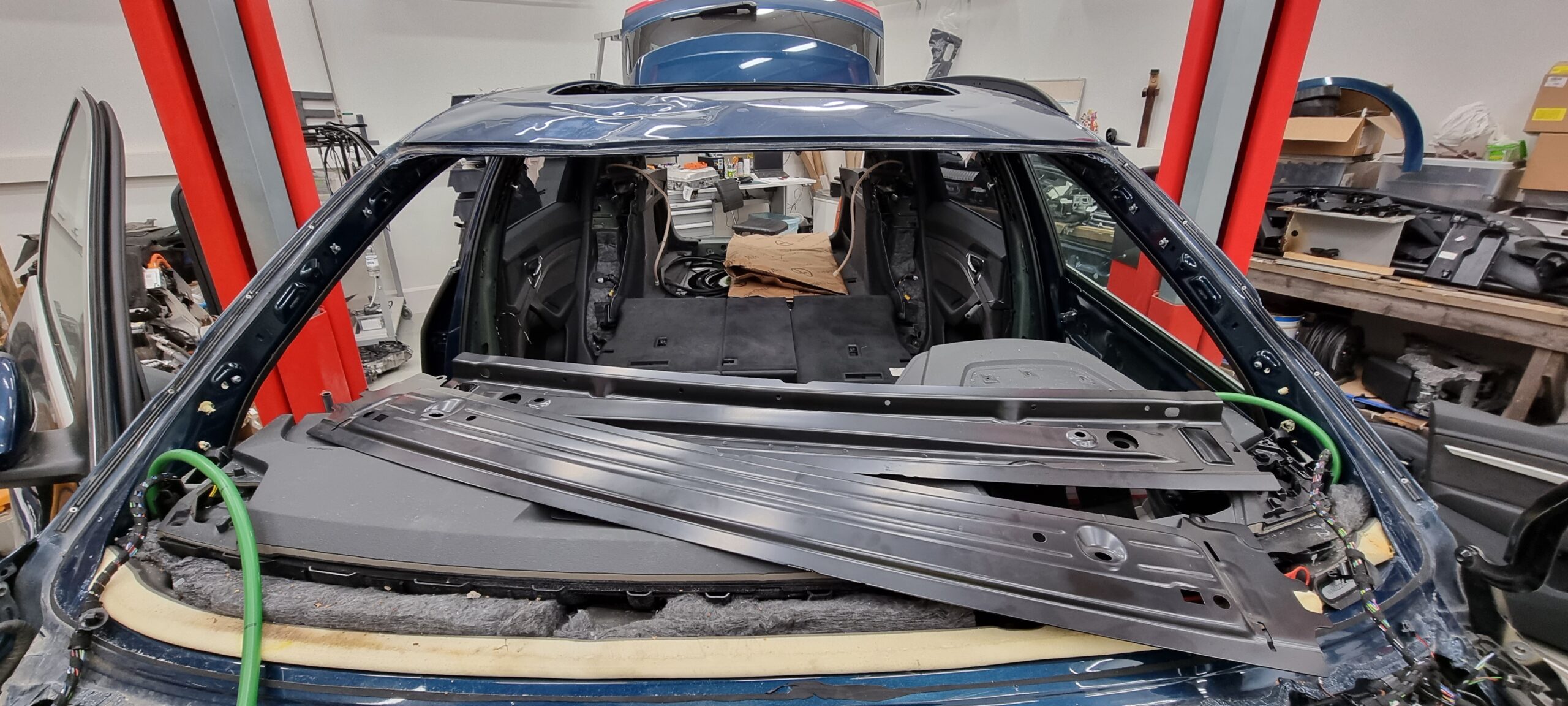
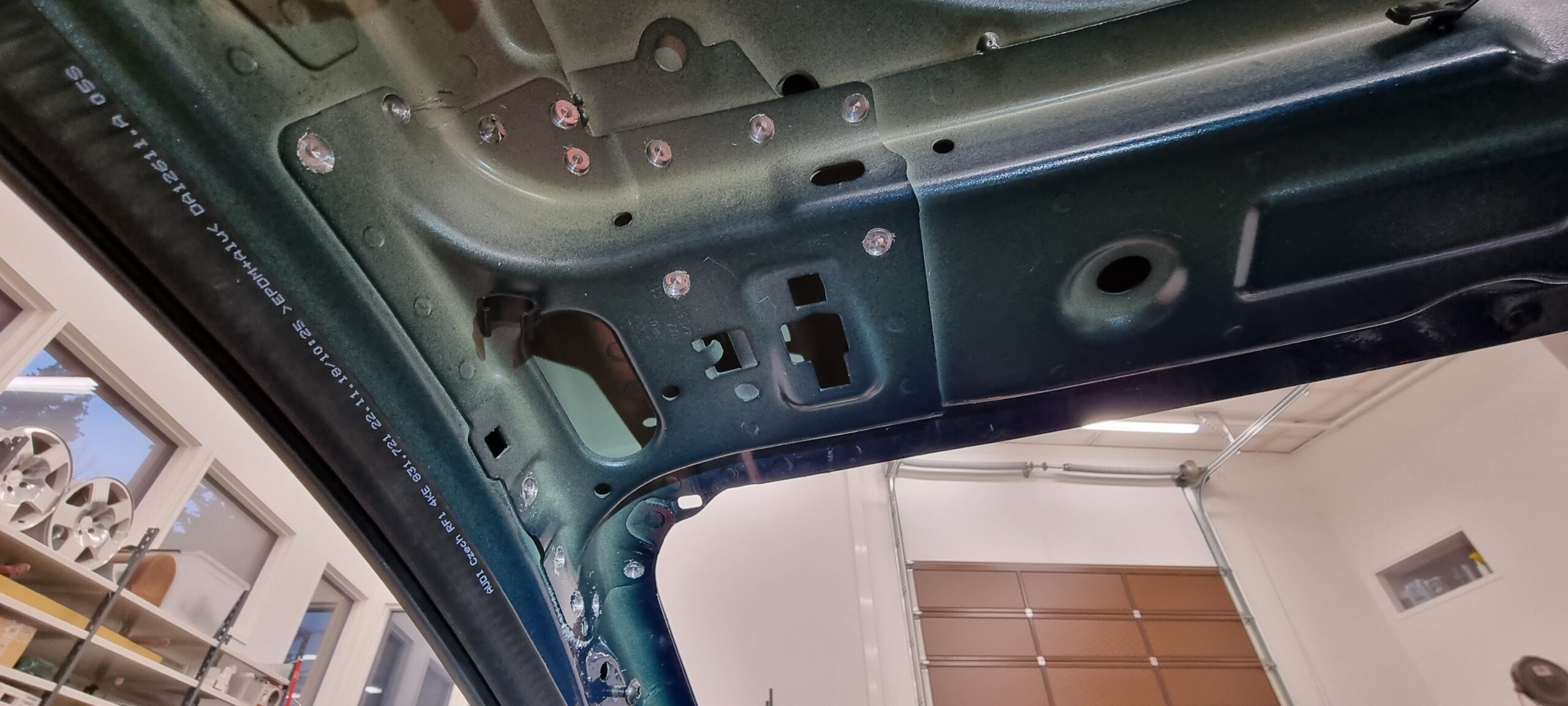

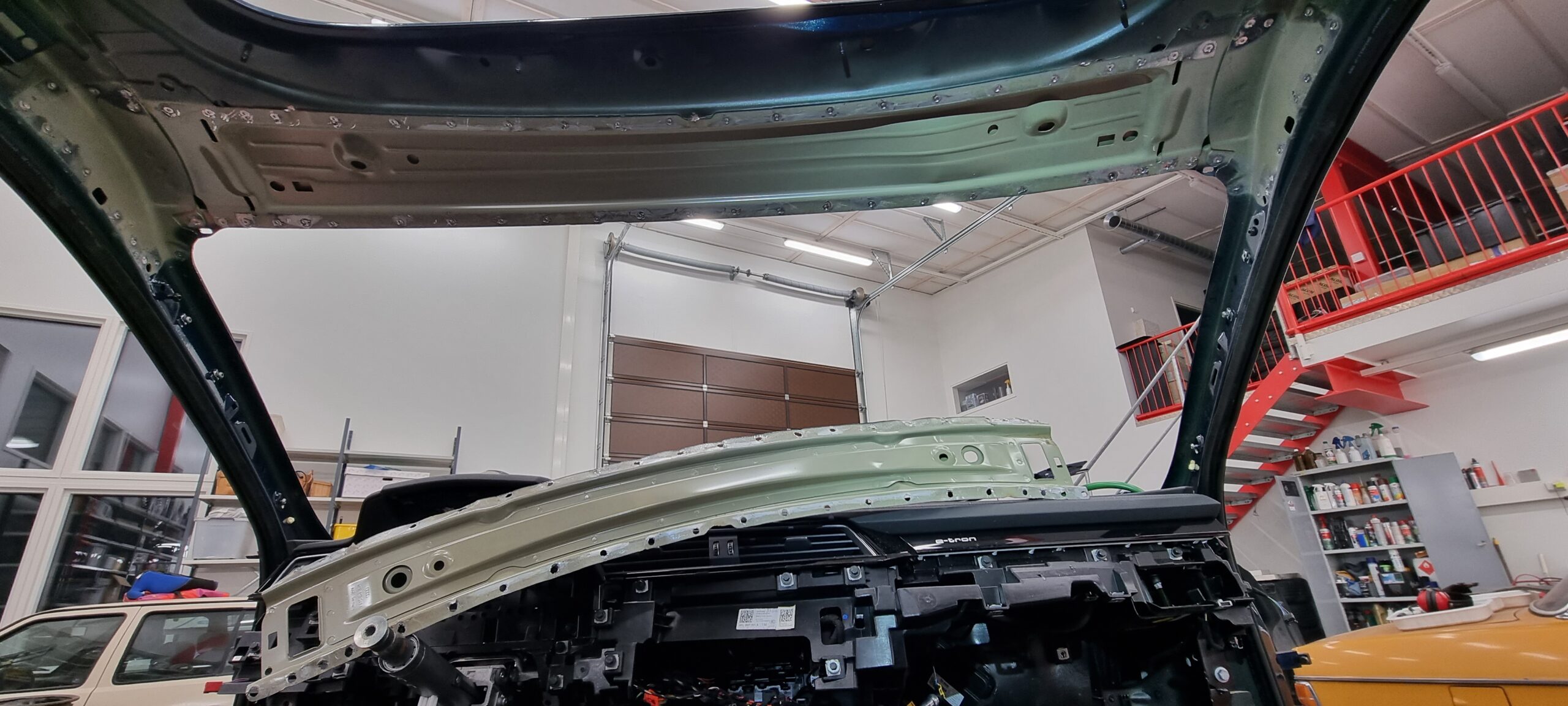
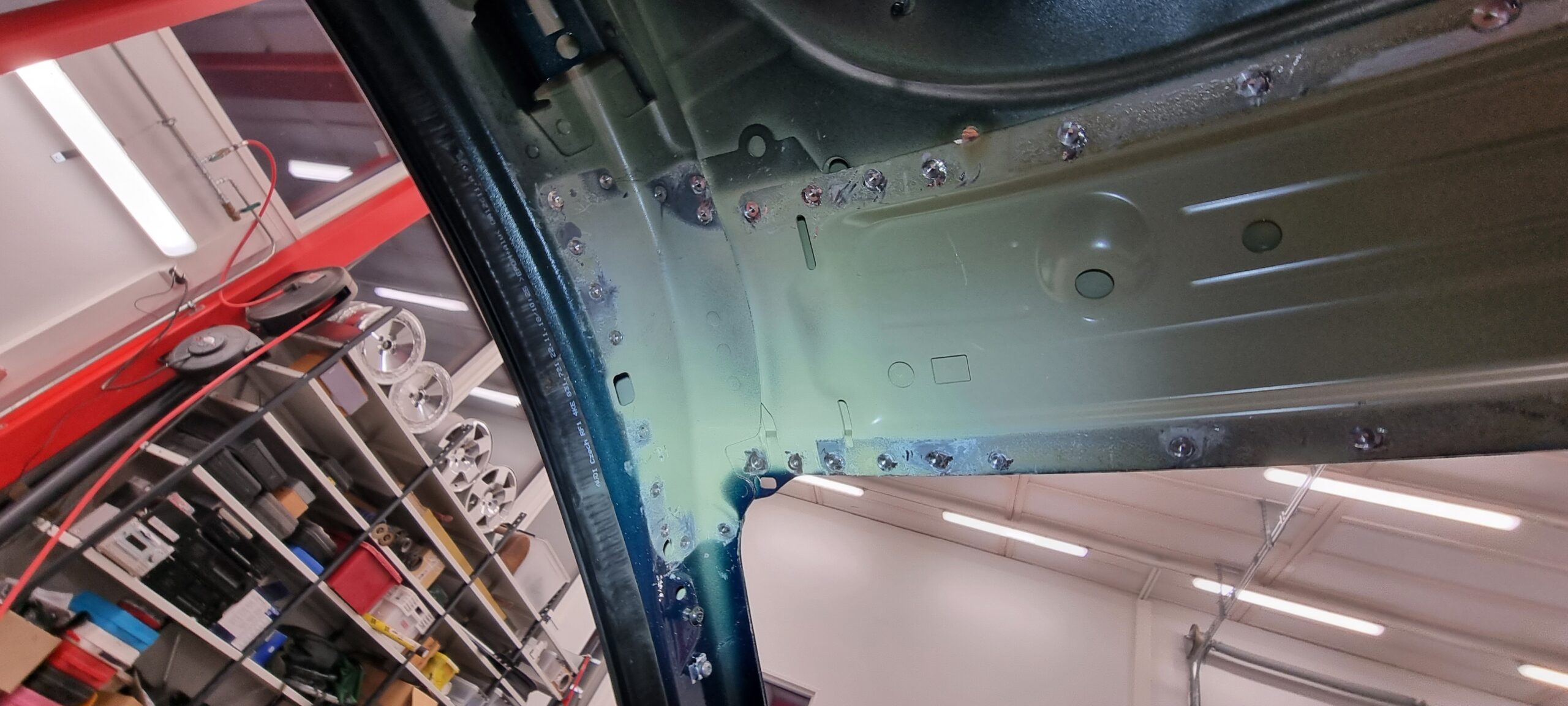
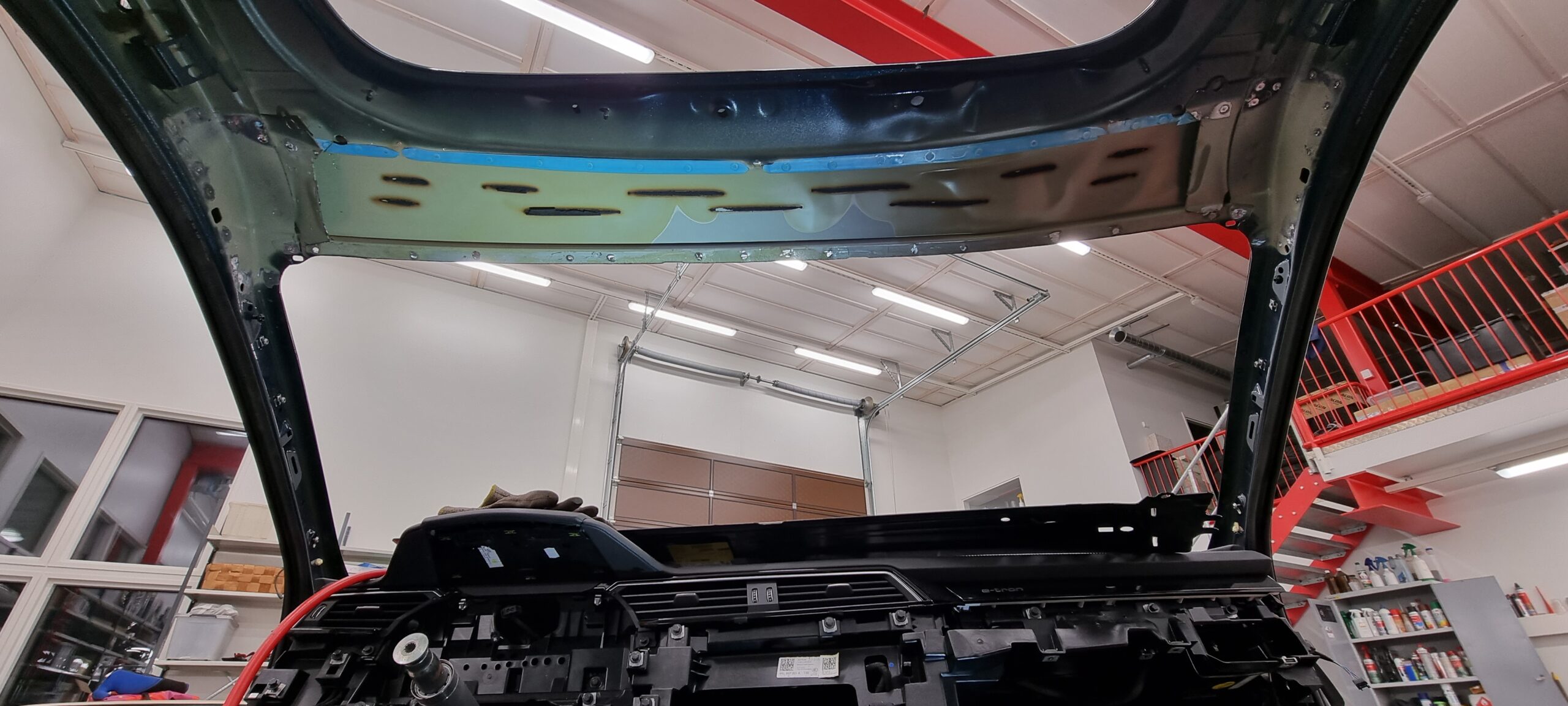
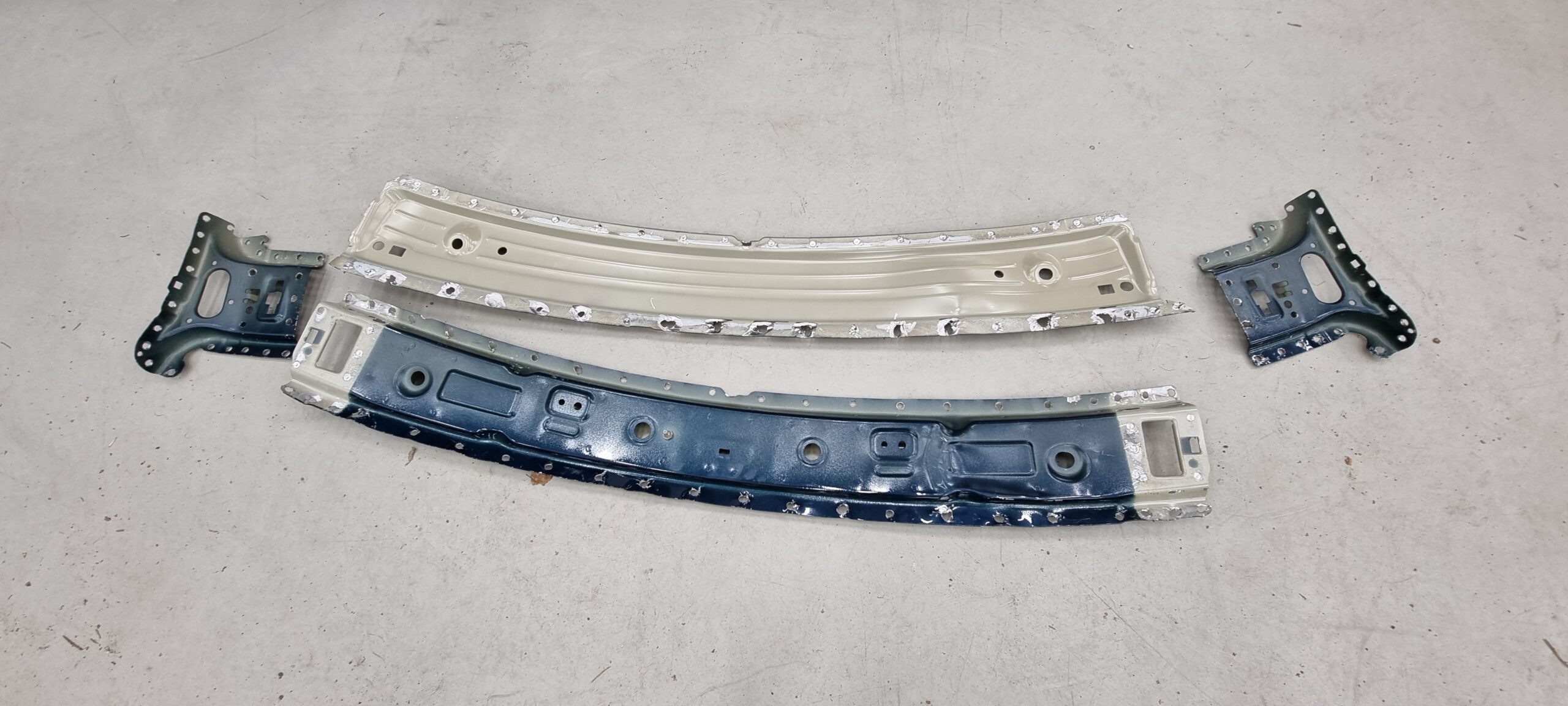
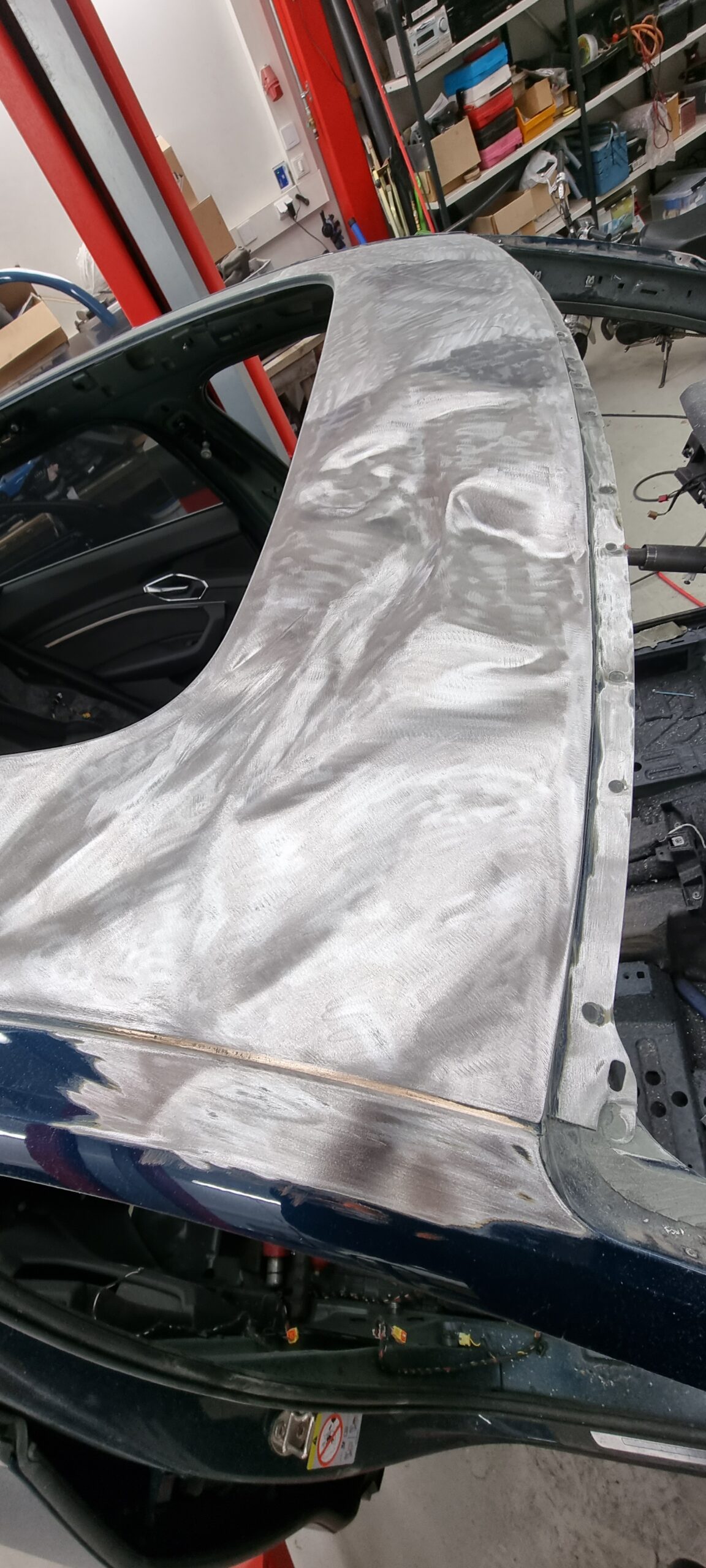
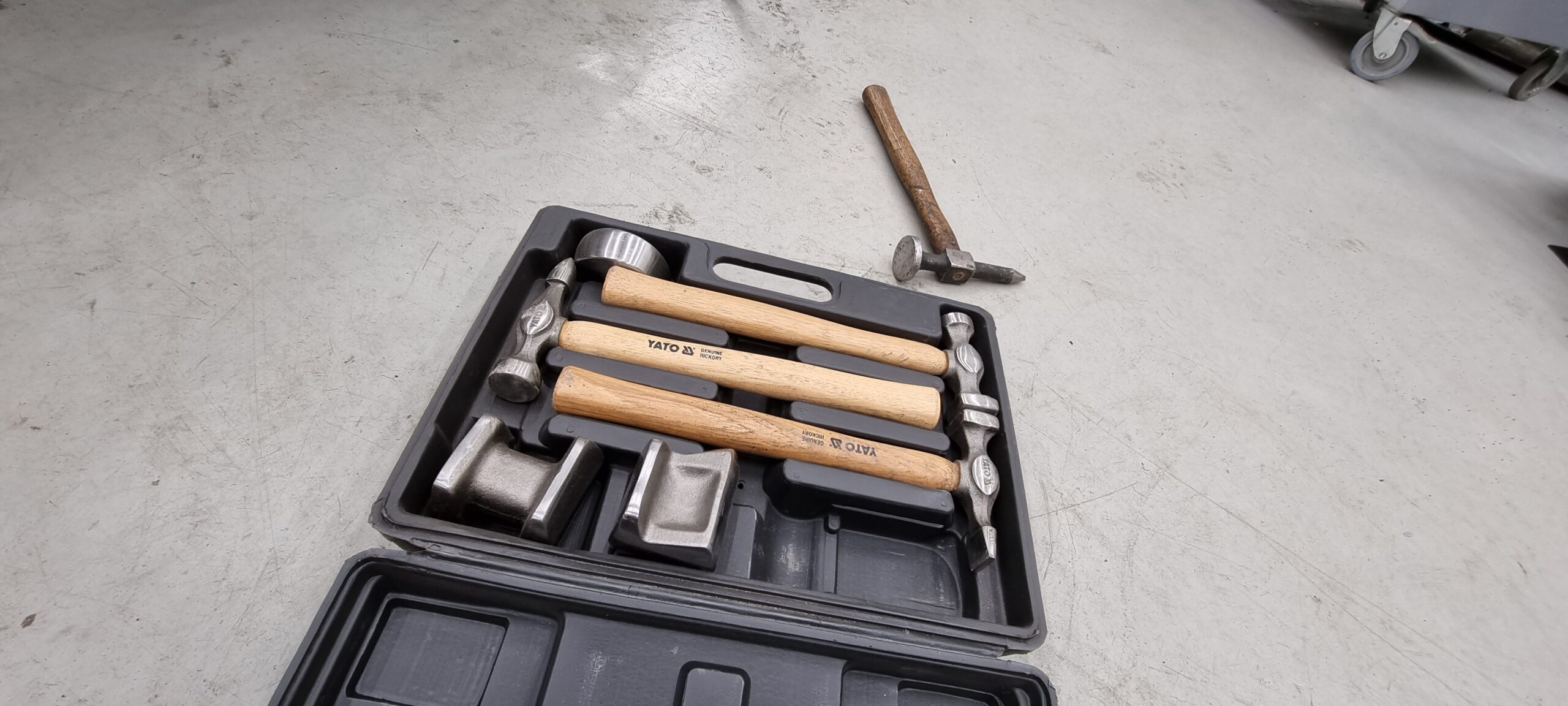
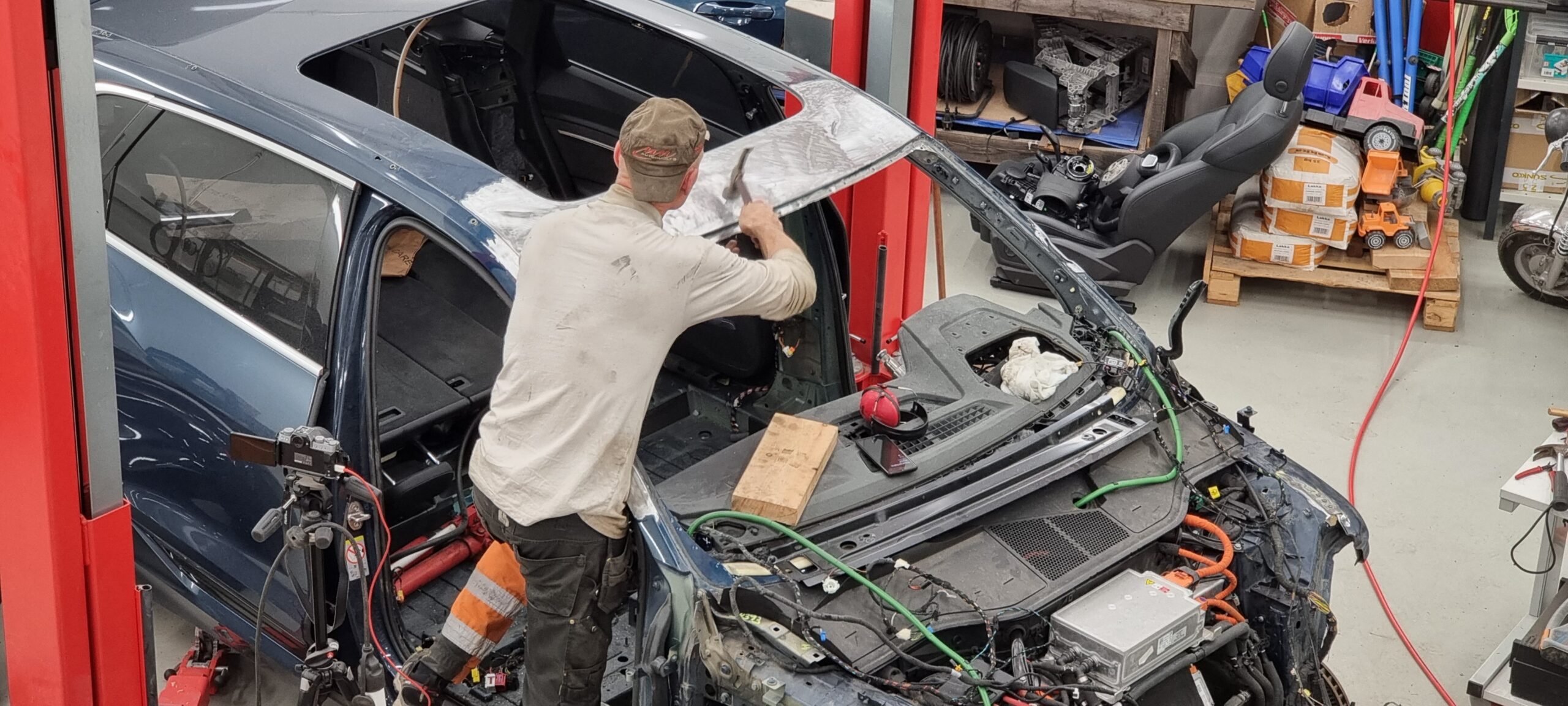
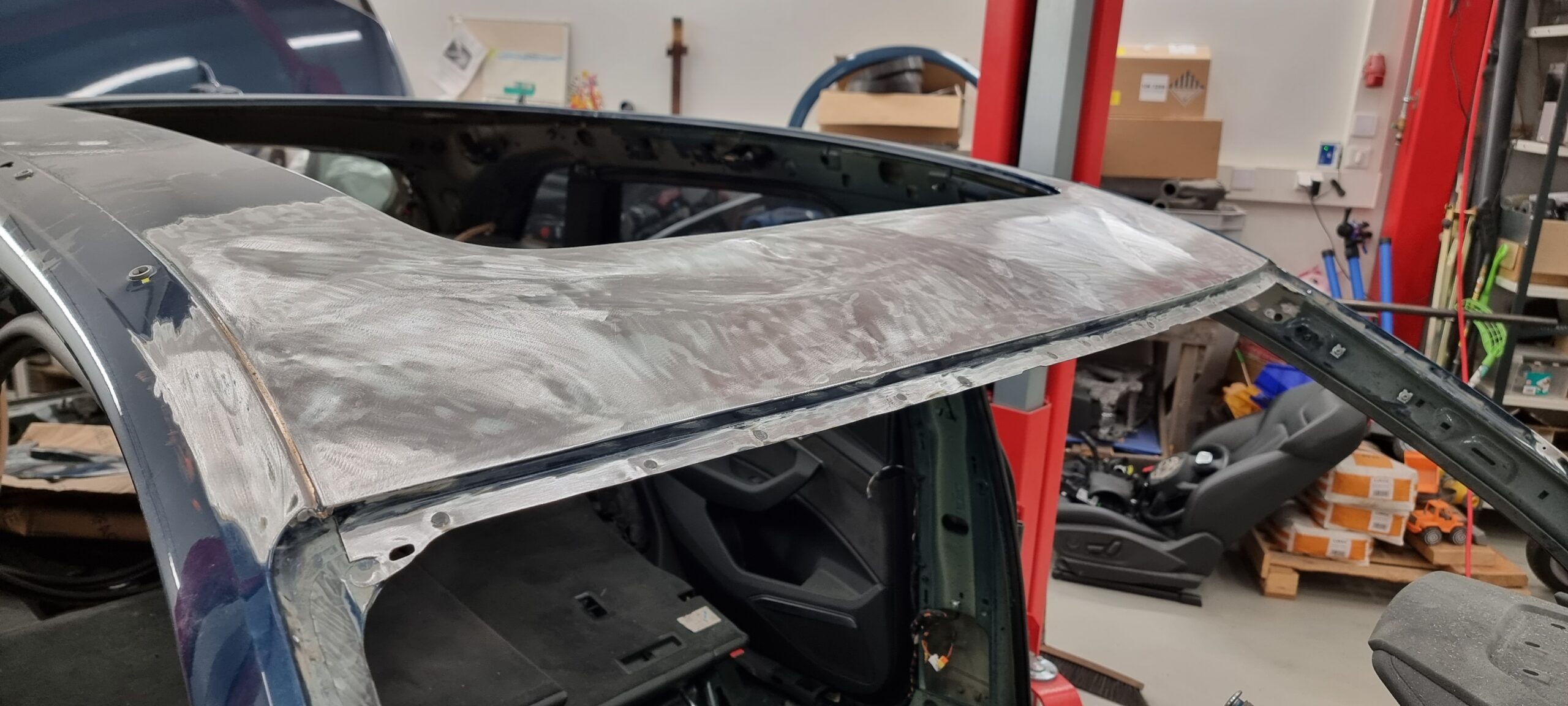
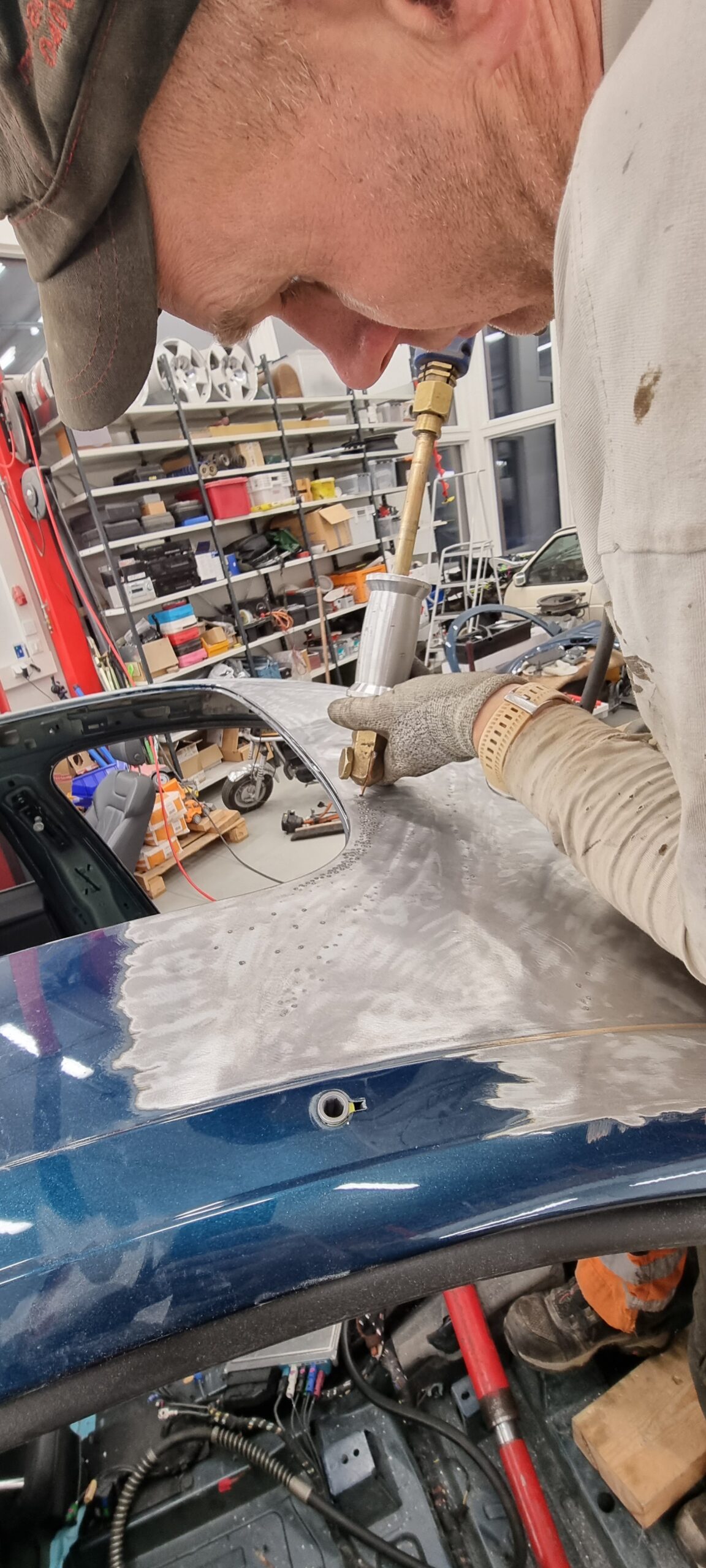
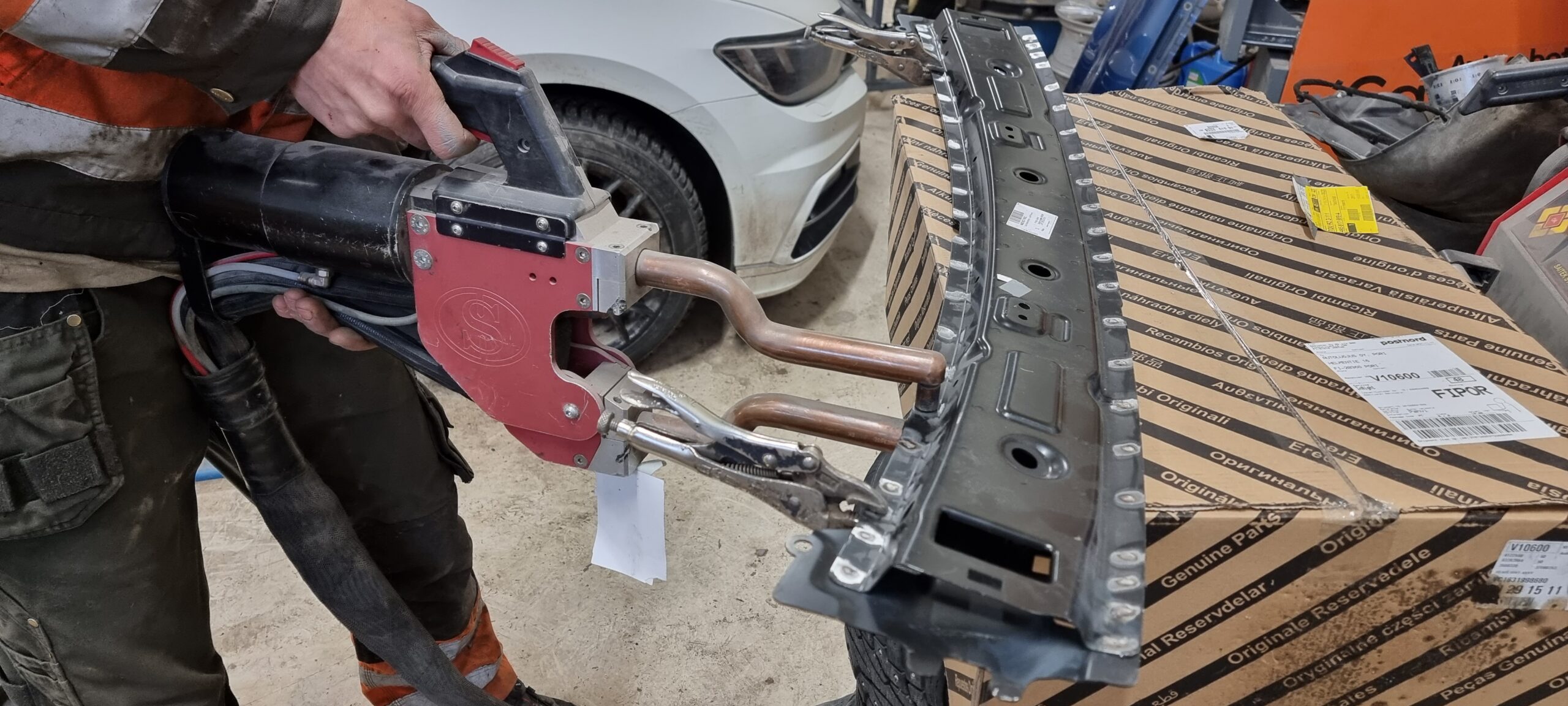
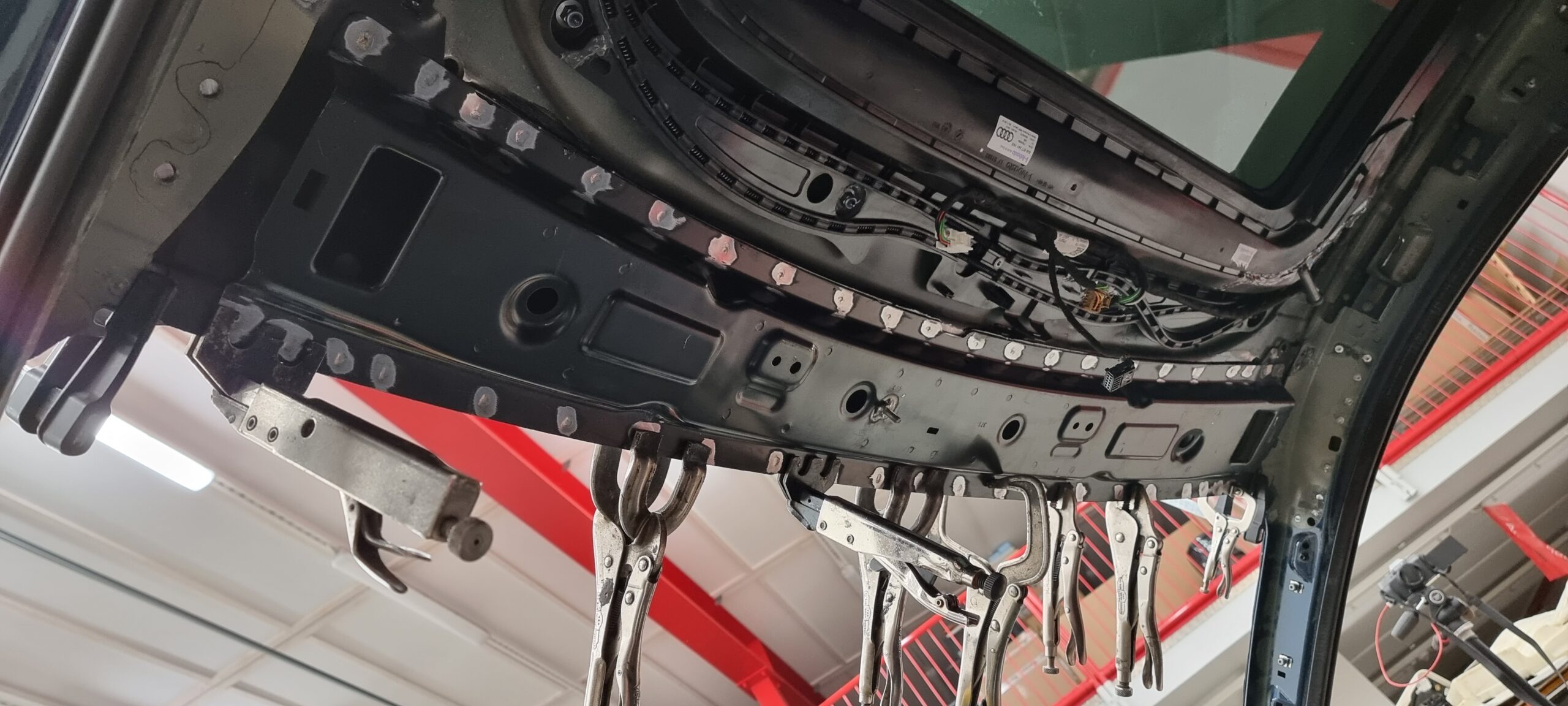
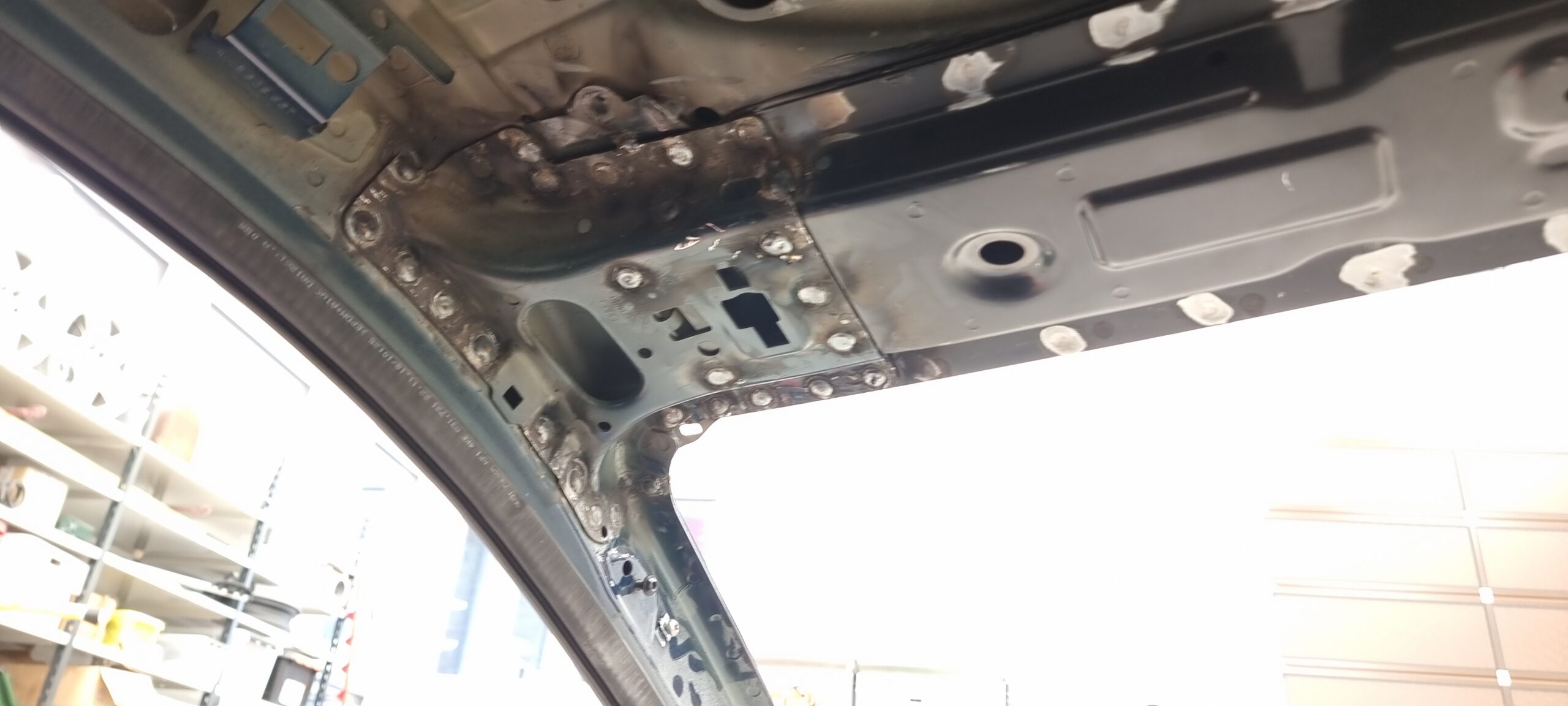
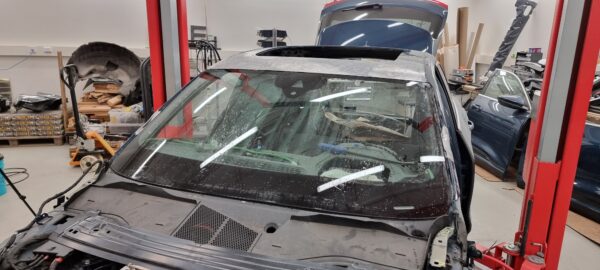
Etureunaan tuli uudet vahvikkeet, jotka pistehitsattiin toisiinsa kiinni ja vahvikepalkki liimattiin ja hitsattiin takaisin paikalleen. Tästä tuli oikein hyvä.
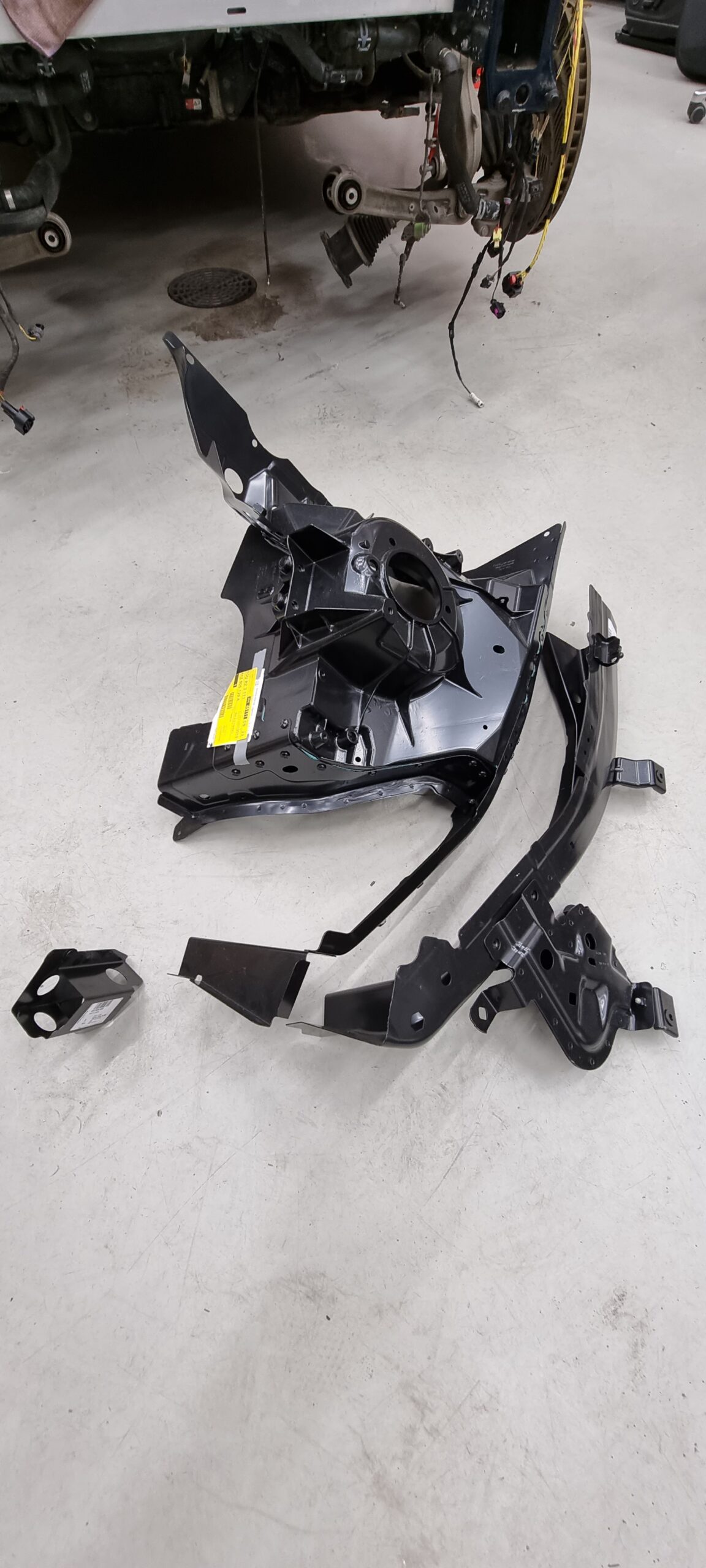
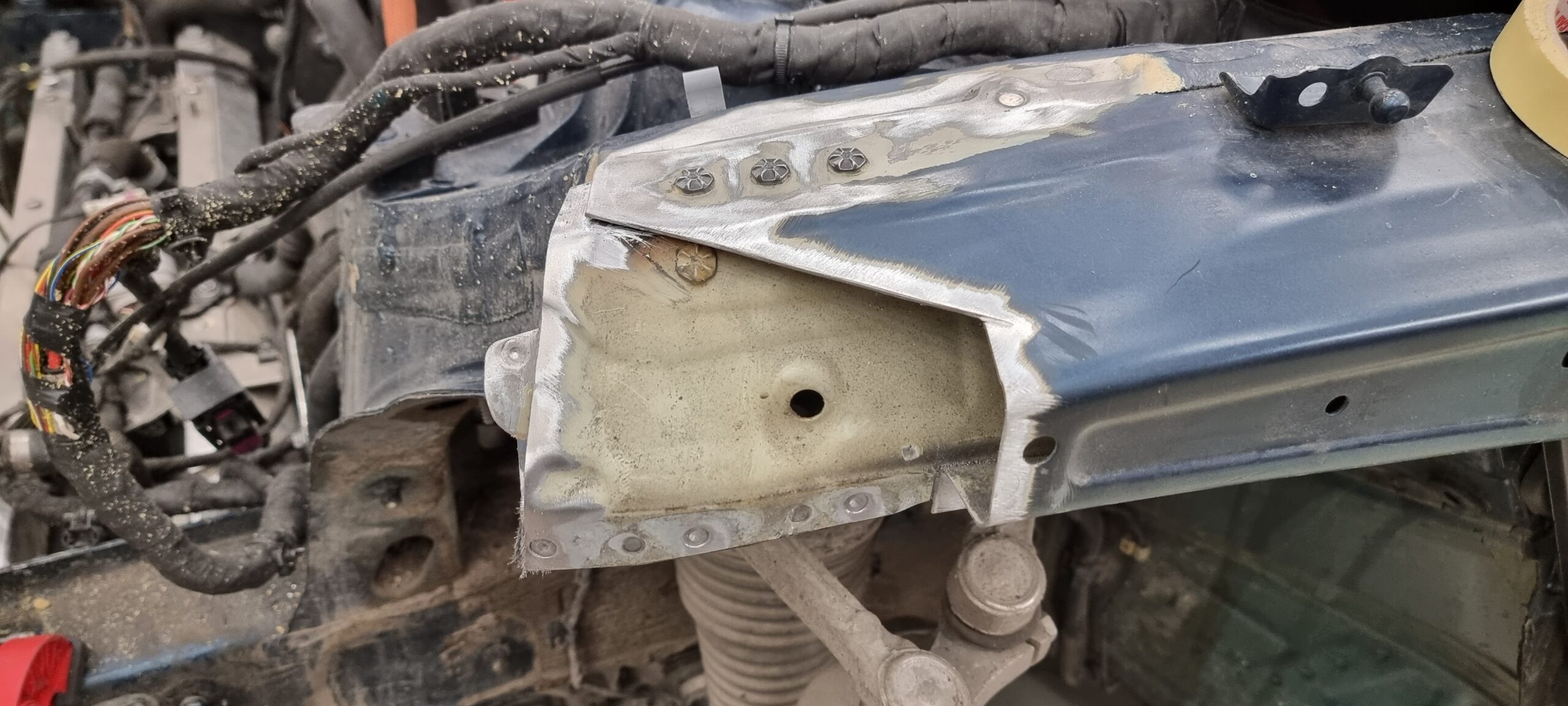
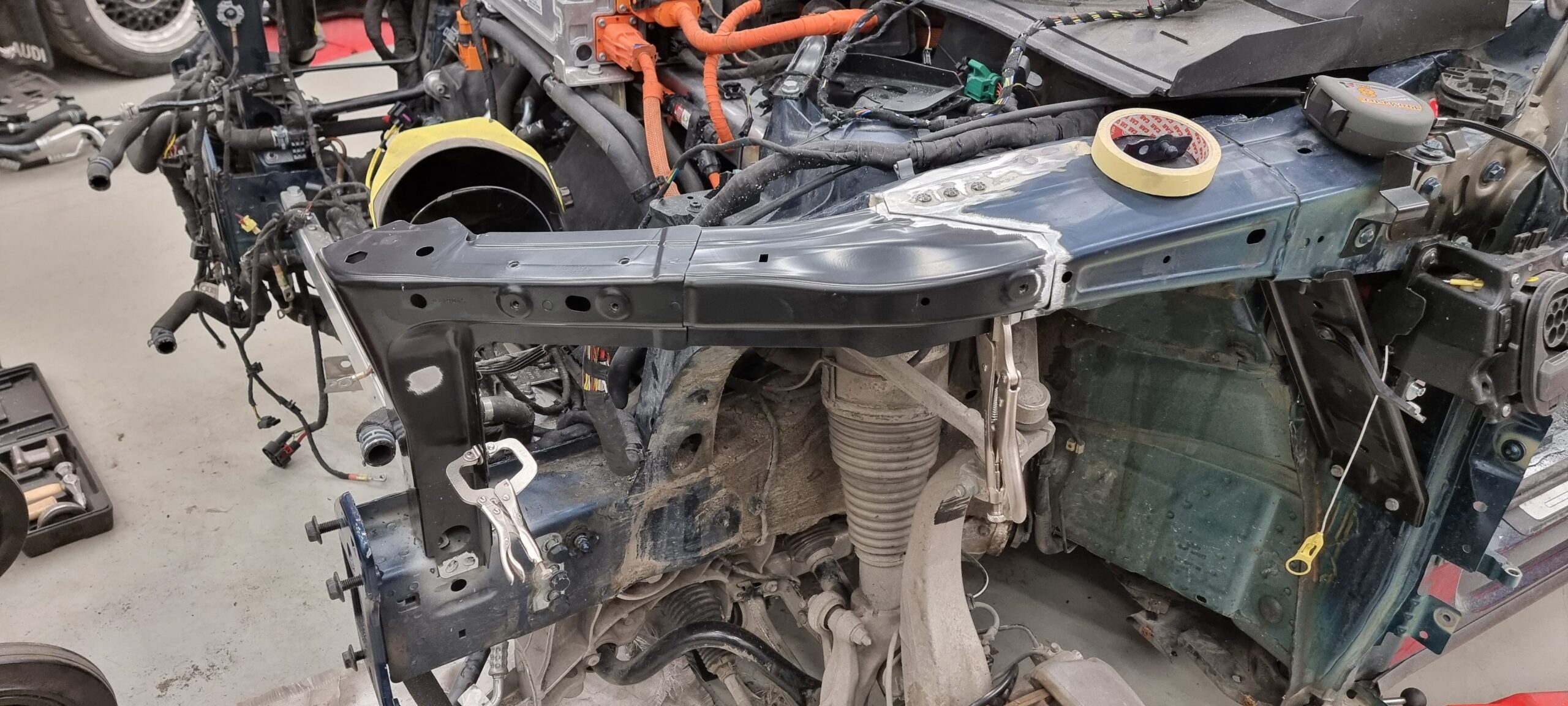
Myös etunurkkaan tuli kaikki yläaisaan liittyvät osat uusia osia. Koska iskaritorni oli täysin paikallaan, vaihdettiin vain itse yläaisan osat. Sen viimeistely jäi myöhäisempään ajankohtaan, kun pistehitsauskone lähti huoltoon.
Autoa katsellessa alkoi pistää silmään, että kuljettajan puolen pyörä on taaempana kuin toinen pyörä. Tämä ei voinut tarkoittaa muuta kuin vääntynyttä tukivartta, joka löytyi jälleen eBaystä ja vaihtui ripeästi.
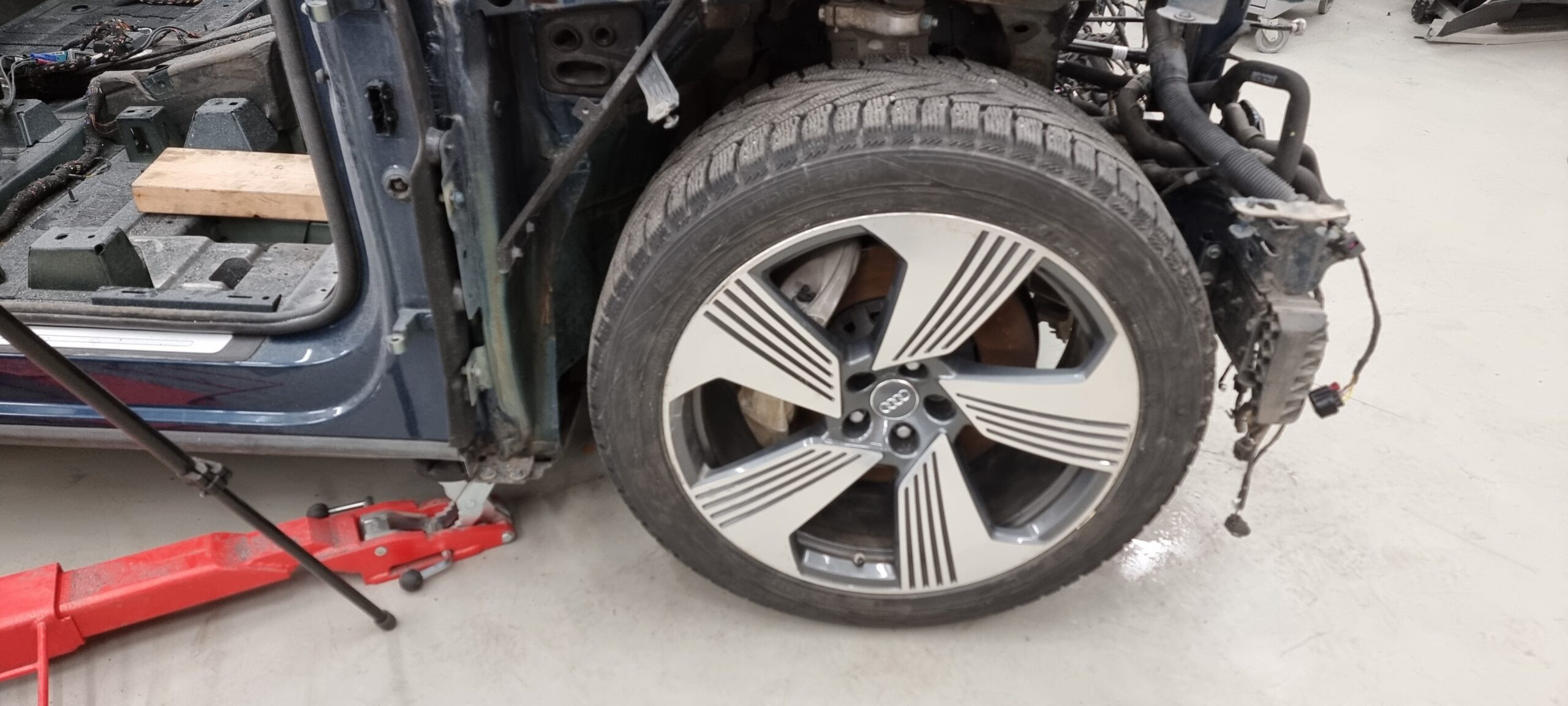
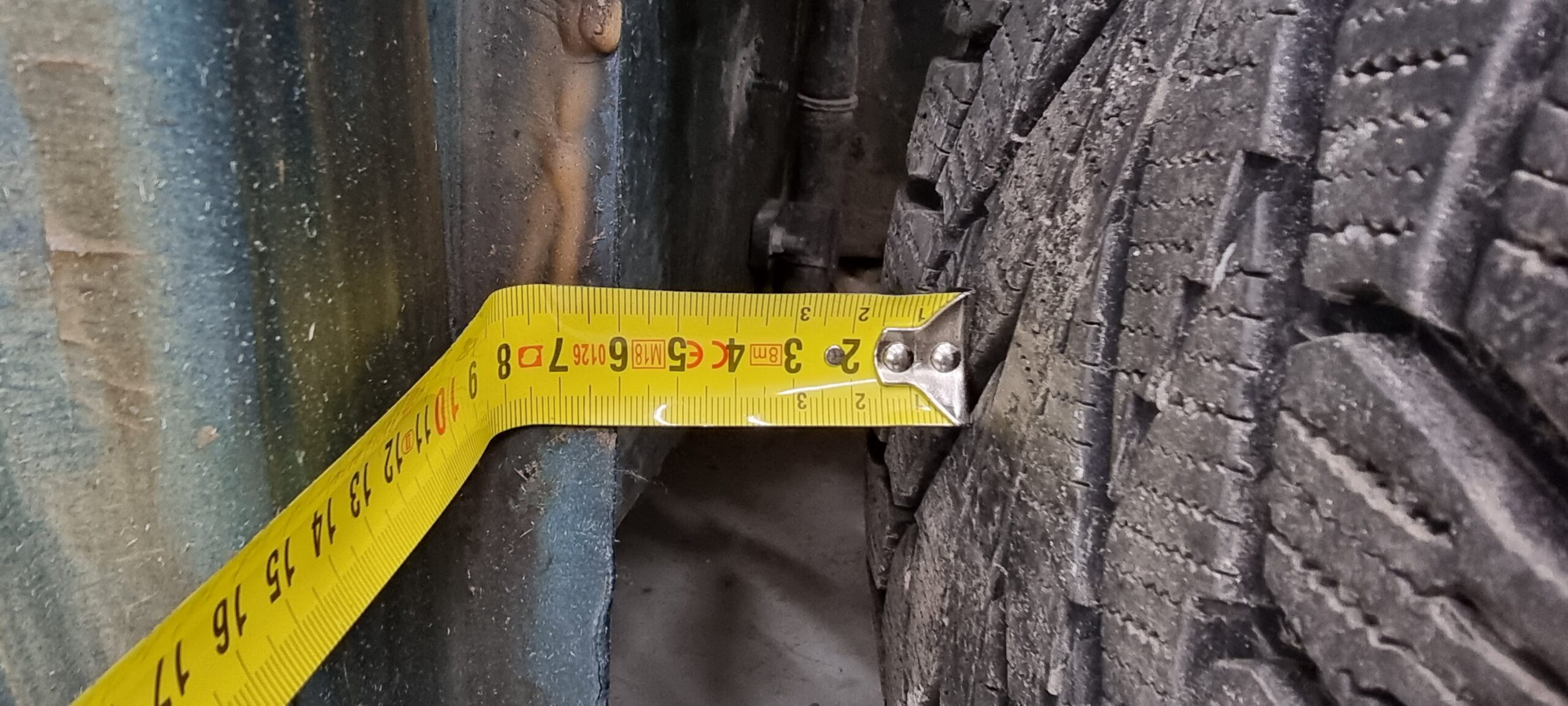
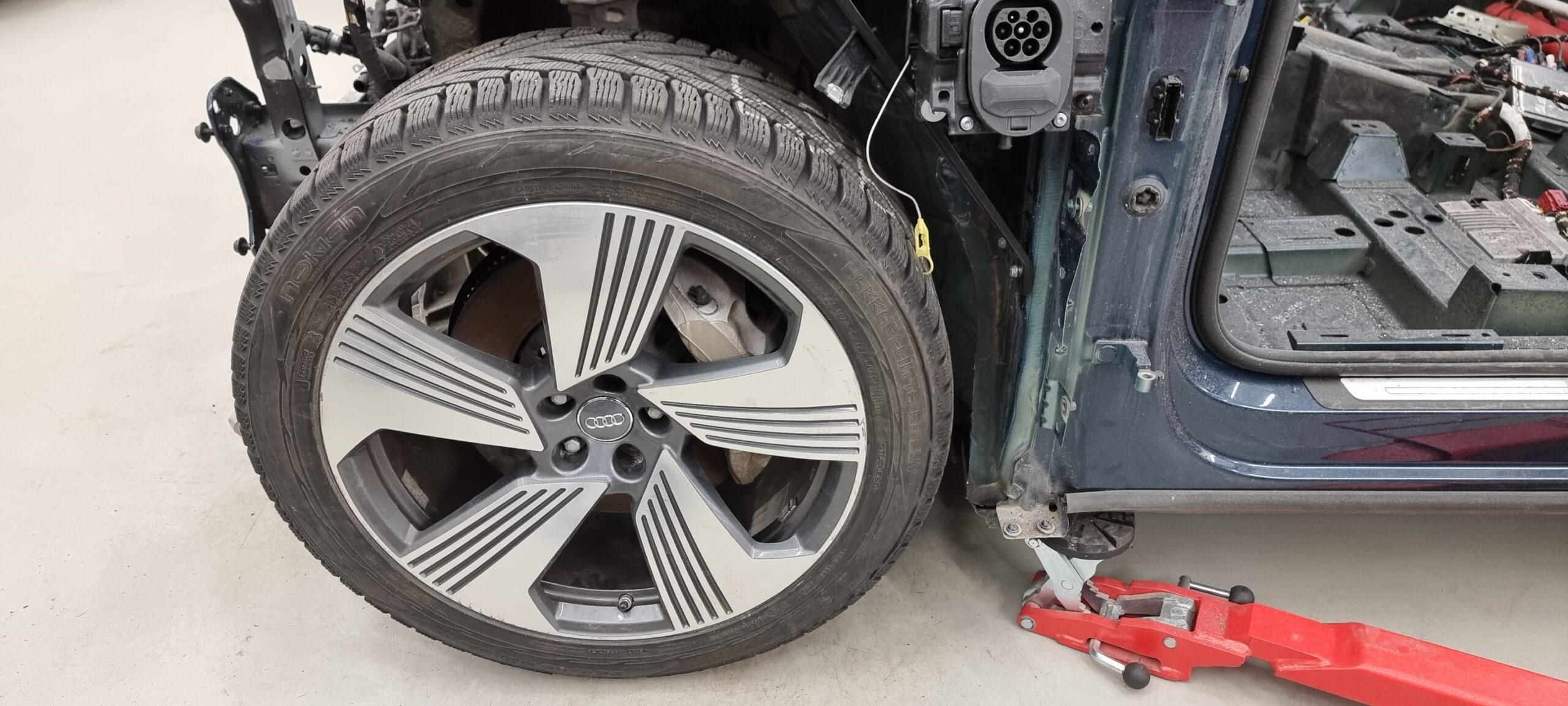
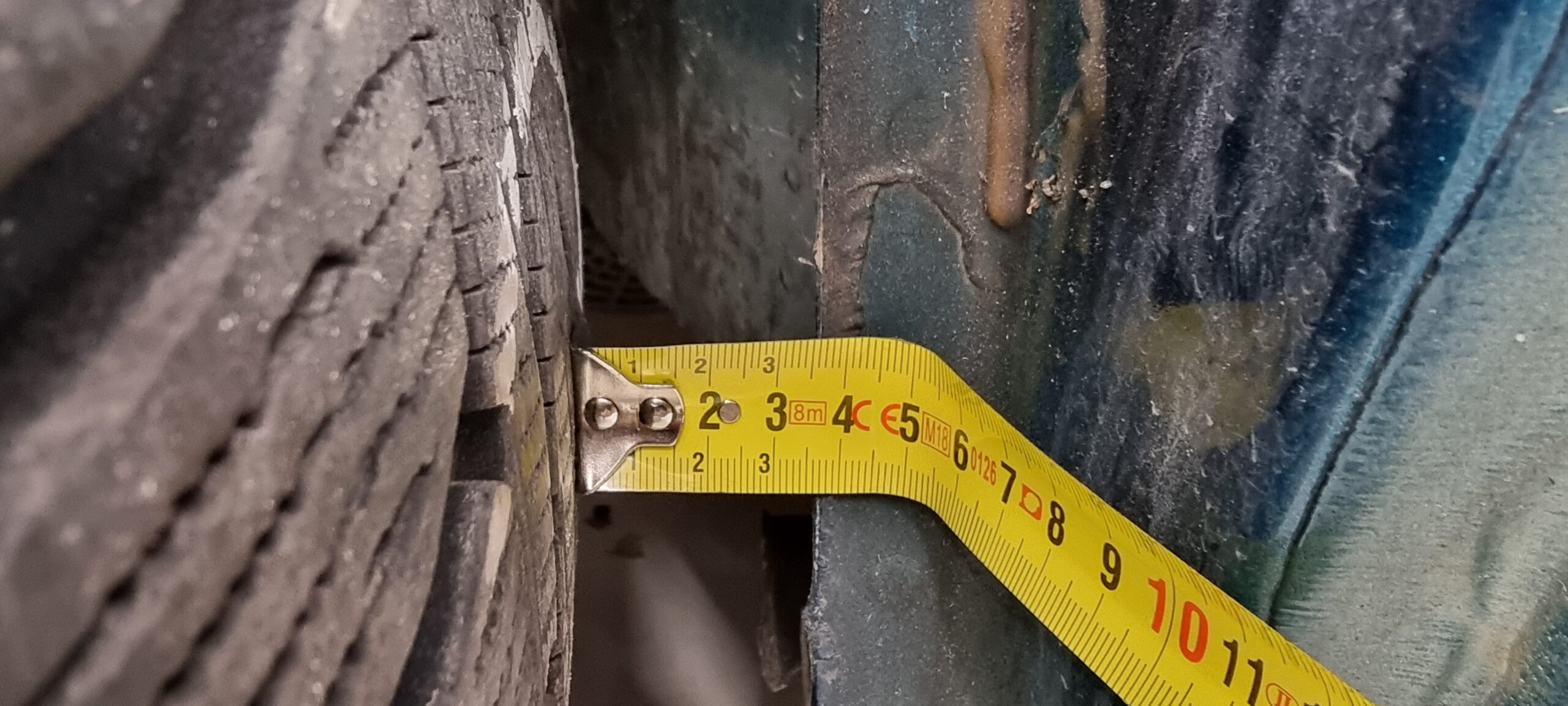
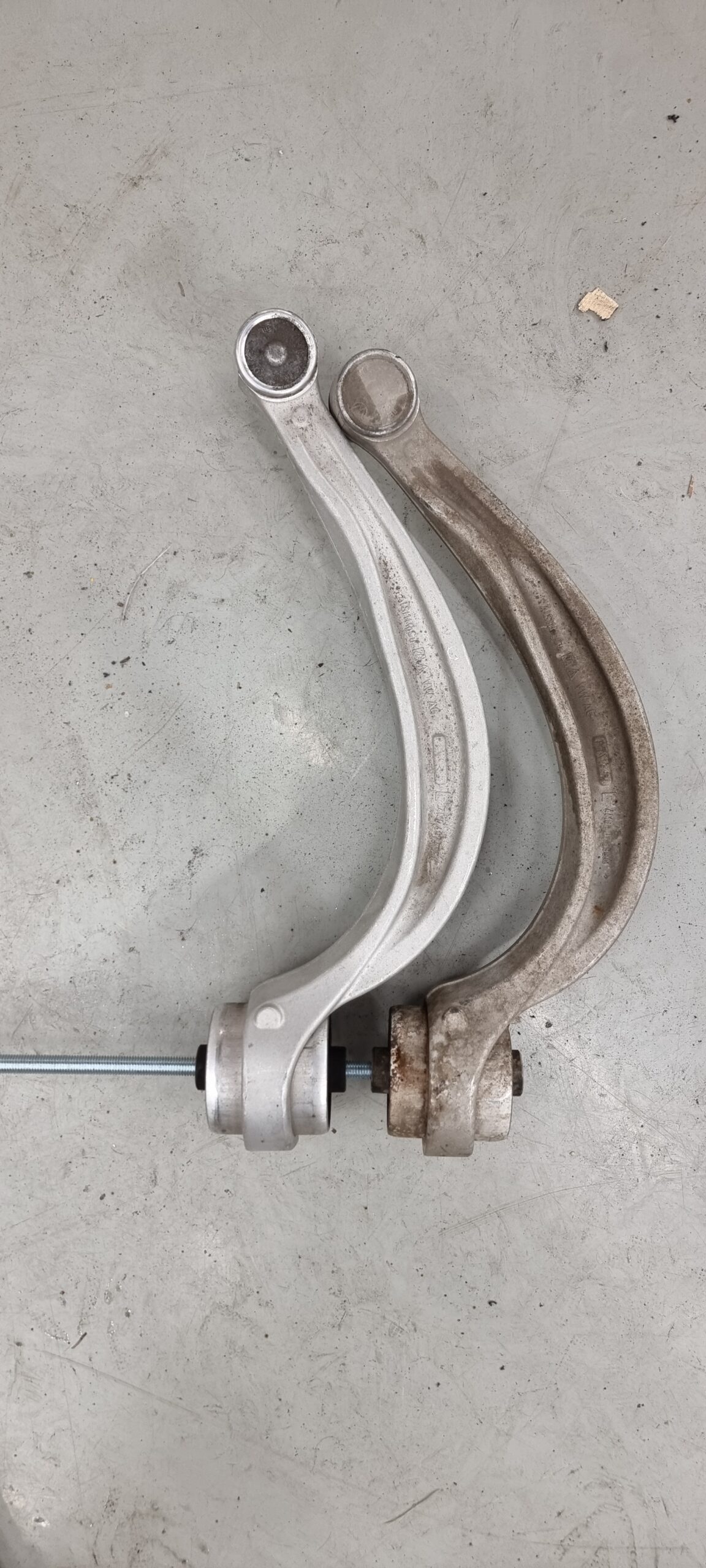

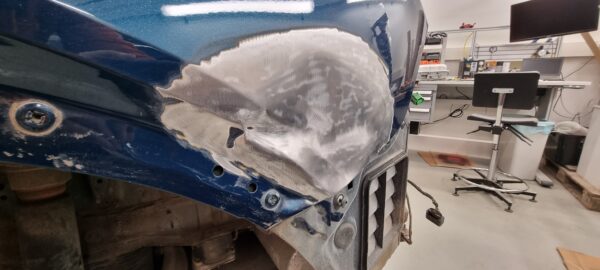

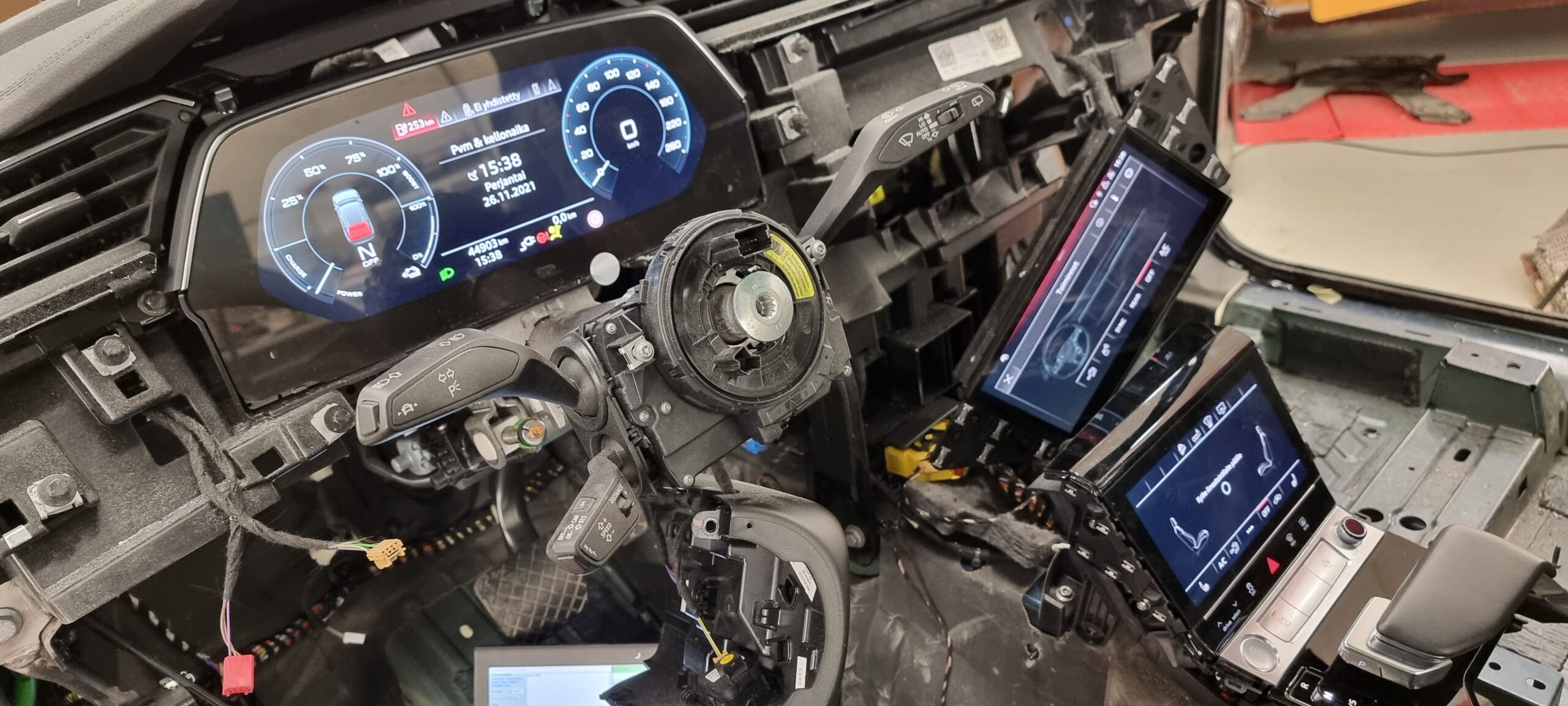
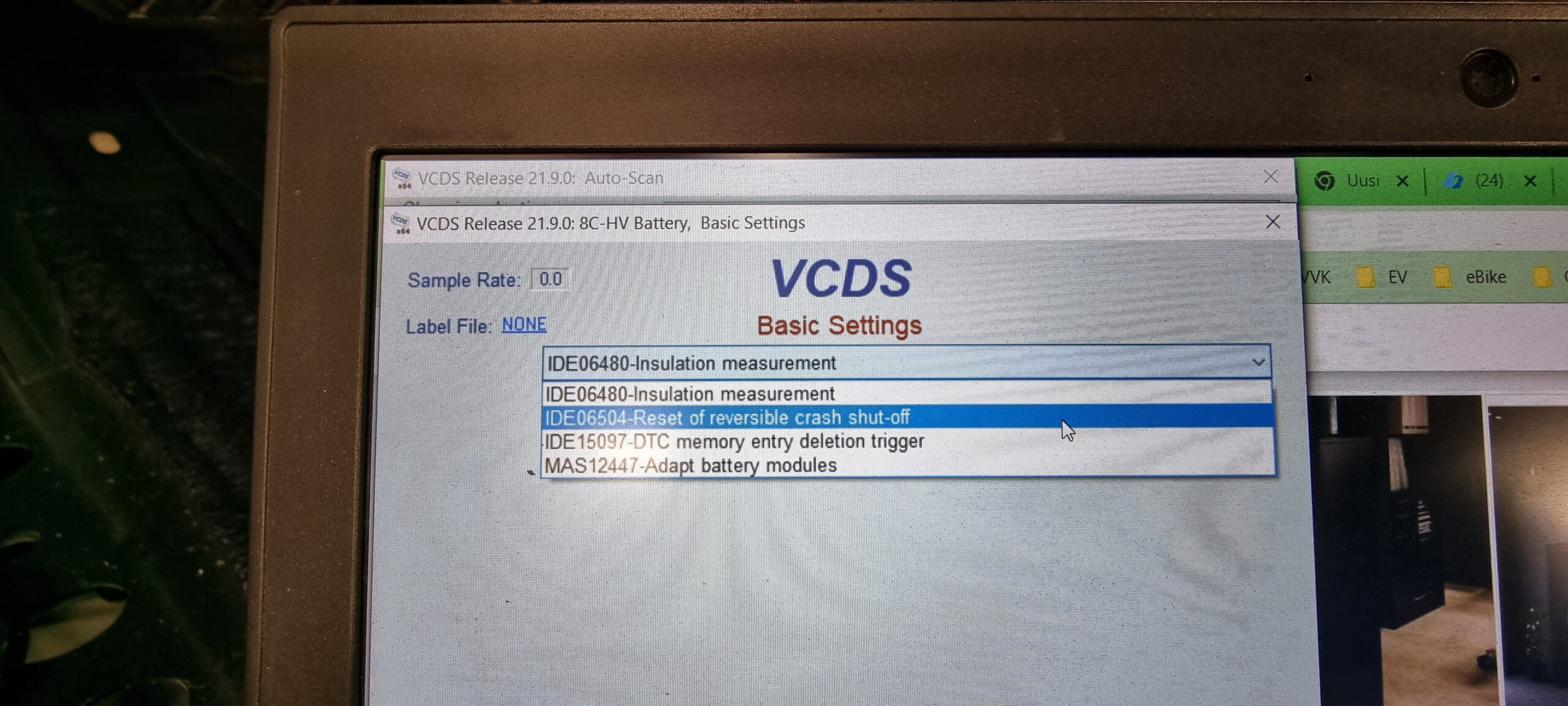
Välillä ihmeteltiin vikakoodejakin. Piti kasata sen verran moduuleita paikalleen, että sai auton eloon ja tavoitteena oli saada auto liikkumaan omin voimin. VCDS:llä pystyi HV-akulta poistamaan kolariin liittyvät vikakoodit, mutta auto ei sillä kuitenkaan suostunut käynnistymään.
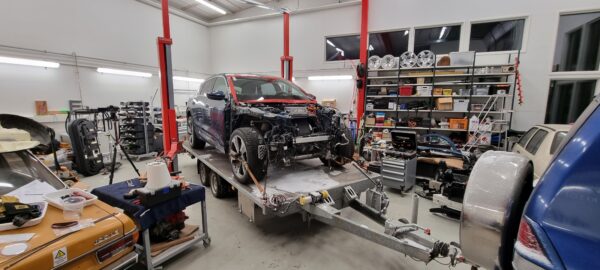
Niinpä joulukuun alussa lähdettiin sitten kohti Kolarikorjaus P. Gullans maalaamoa jälleen suoraan nosturilta trailerikyydillä.



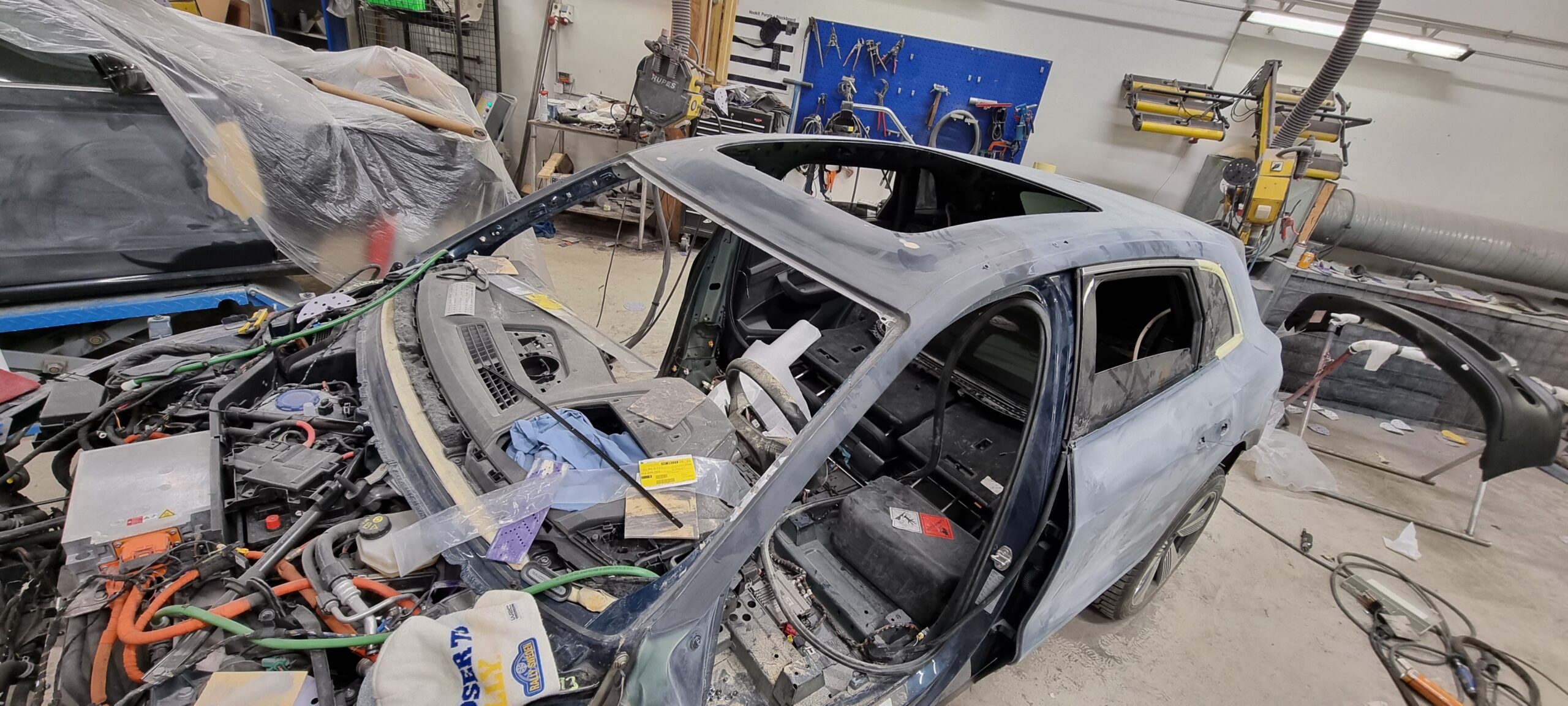
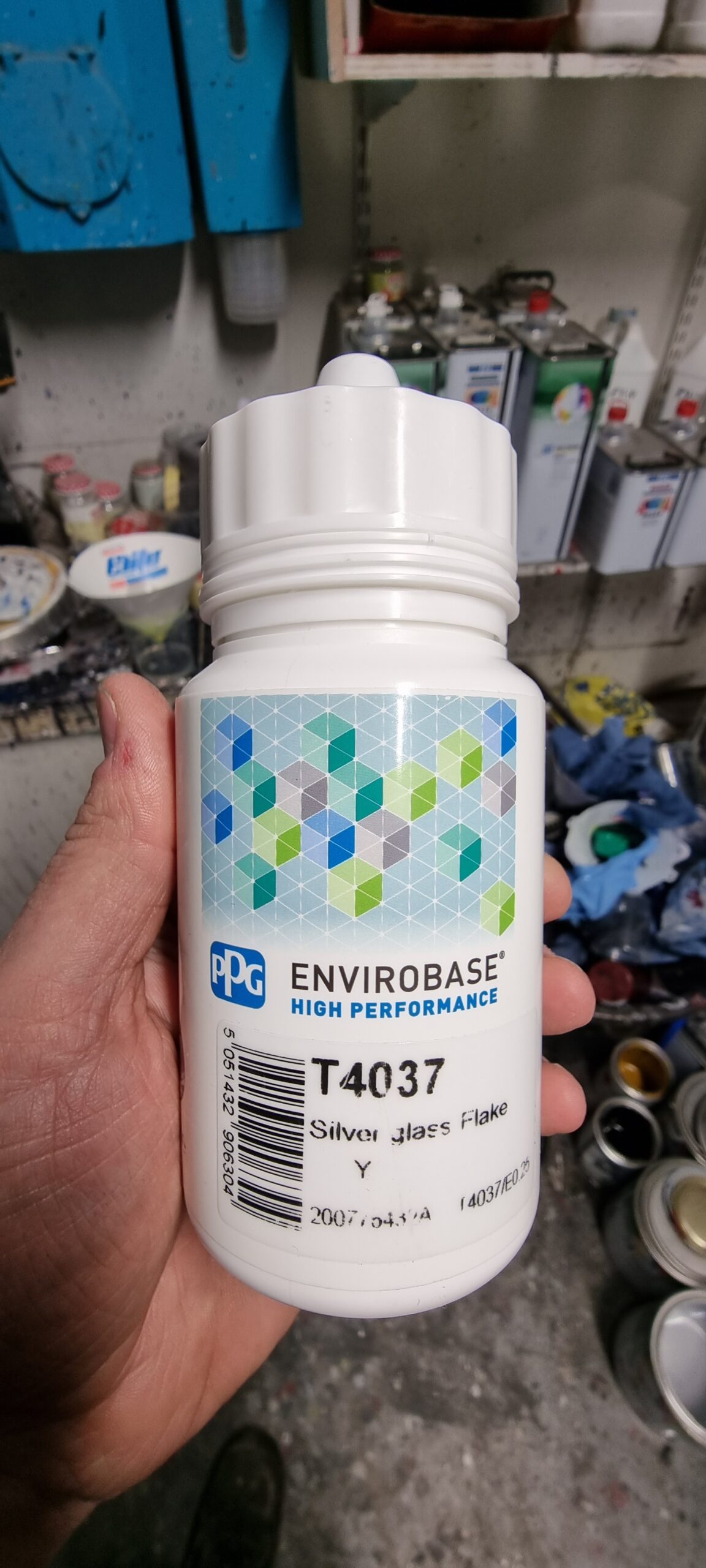
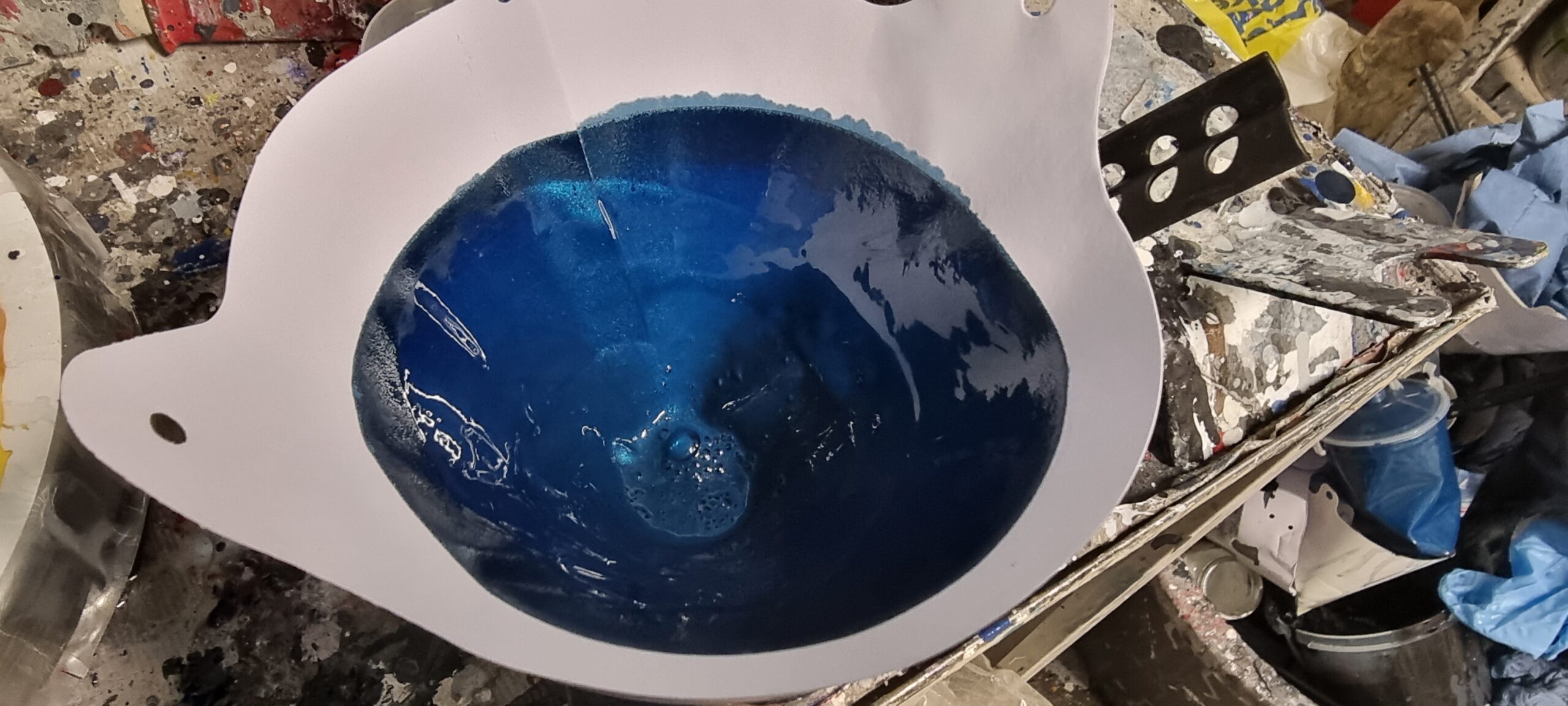
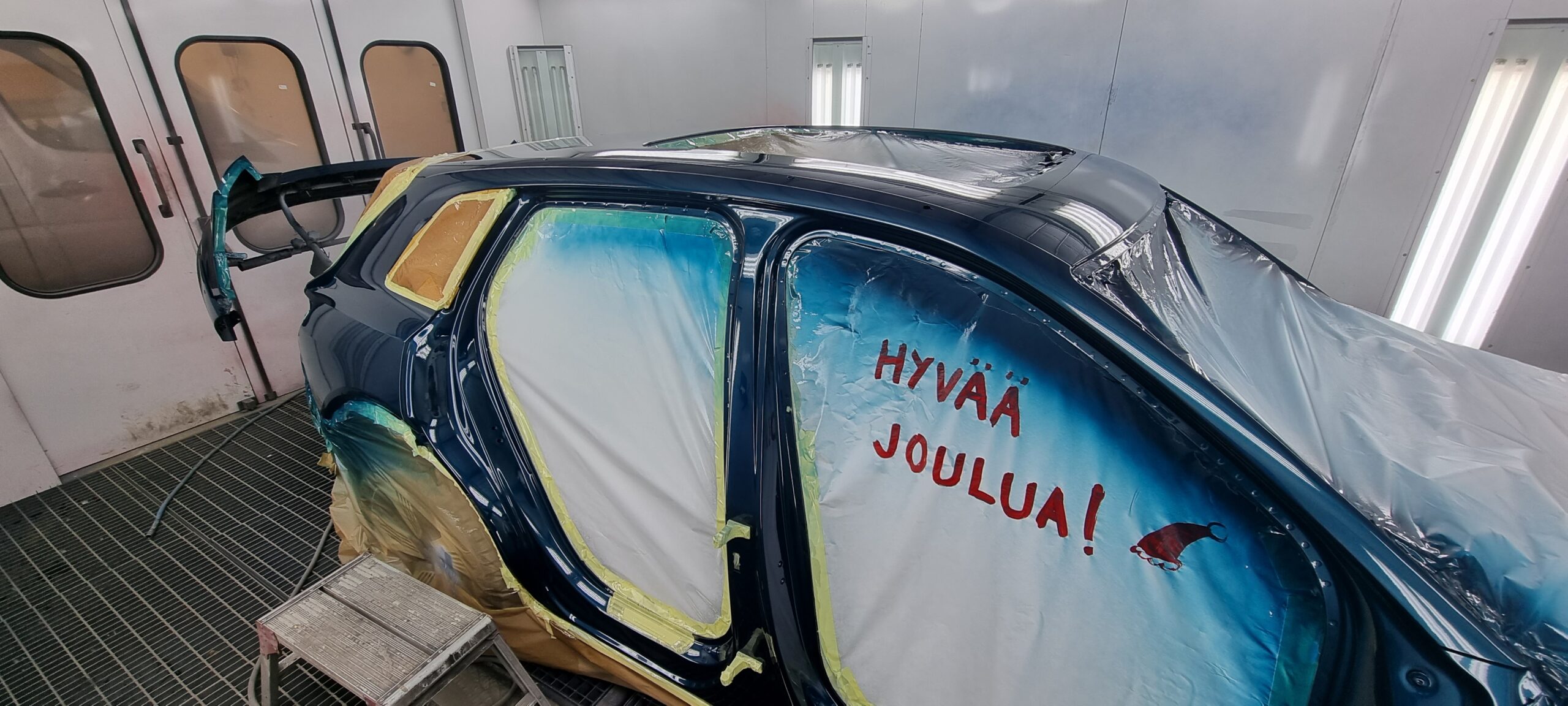
Maalaamolla tehtiin loput viimeistelyt. Katto kitattiin, A-pilareita kunnostettiin ja takakulma oiottiin ja kitattiin maalausvalmiiksi. Väri on Galaxyblau, joka oli sen verran haastava väri, että ensimmäisen maalitoimittajan sävyt eivät täsmänneet ja jouduttiin hankkimaan väriä toiselta toimittajalta. Maalin sekaan tulee hienoa lasimurskaa, joka saa siihen aikaan hienon kimaltelun sopivassa valossa.
Maalari lupasi auton jouluksi maalata ja aatonaattona se tosiaan värin sai pintaansa. Hyvä tuli!

Tapahtui myös joulun ihme. Maalausuunin jälkeen pientä kasailua ja kun auto piti siirtää takaisin trailerille, auto suostuikin liikkumaan omin voimin! Lopulta ymmärsimme, että syy miksi se ei aiemmin näin tehnyt oli se, että ovet eivät olleet paikallaan. Nämä konsernin sähkövatkaimet kun edellyttävät, että ovet ovat kiinni, jotta niillä pystyy ajamaan!
Myös kuljettajan ovi vaihtui samasta purkuautosta peräisin olevaan kuin keulakin. Hieman jännitti miten värisävyt täsmäävät. Takaovi ja -kylki maalattiin, etuovi on saksalaisesta purkuautosta, oikean puolen ovet alkuperäiset. Kaikki sävyt täsmäävät silti hyvin, vaikka joka paikkaan ei häivytyksiä tehtykään.

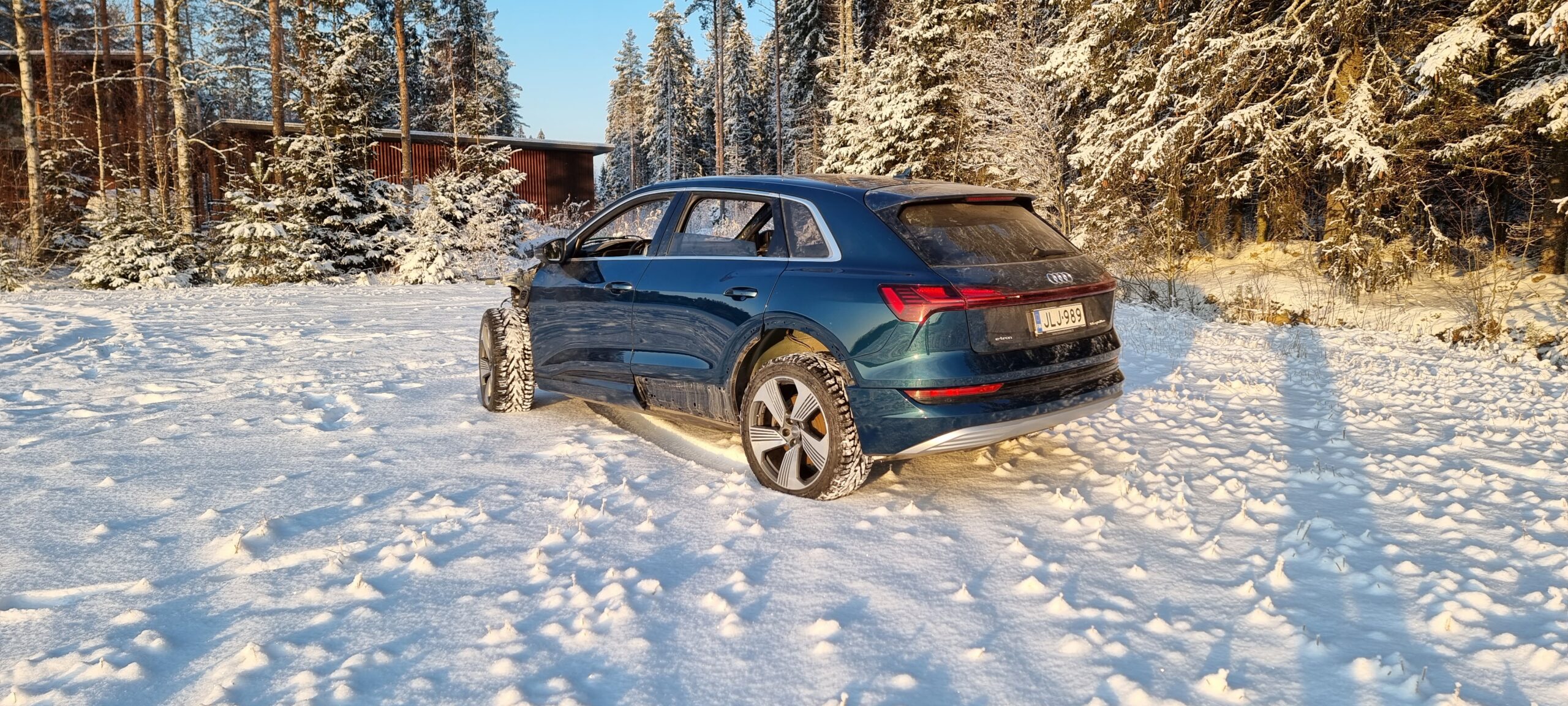
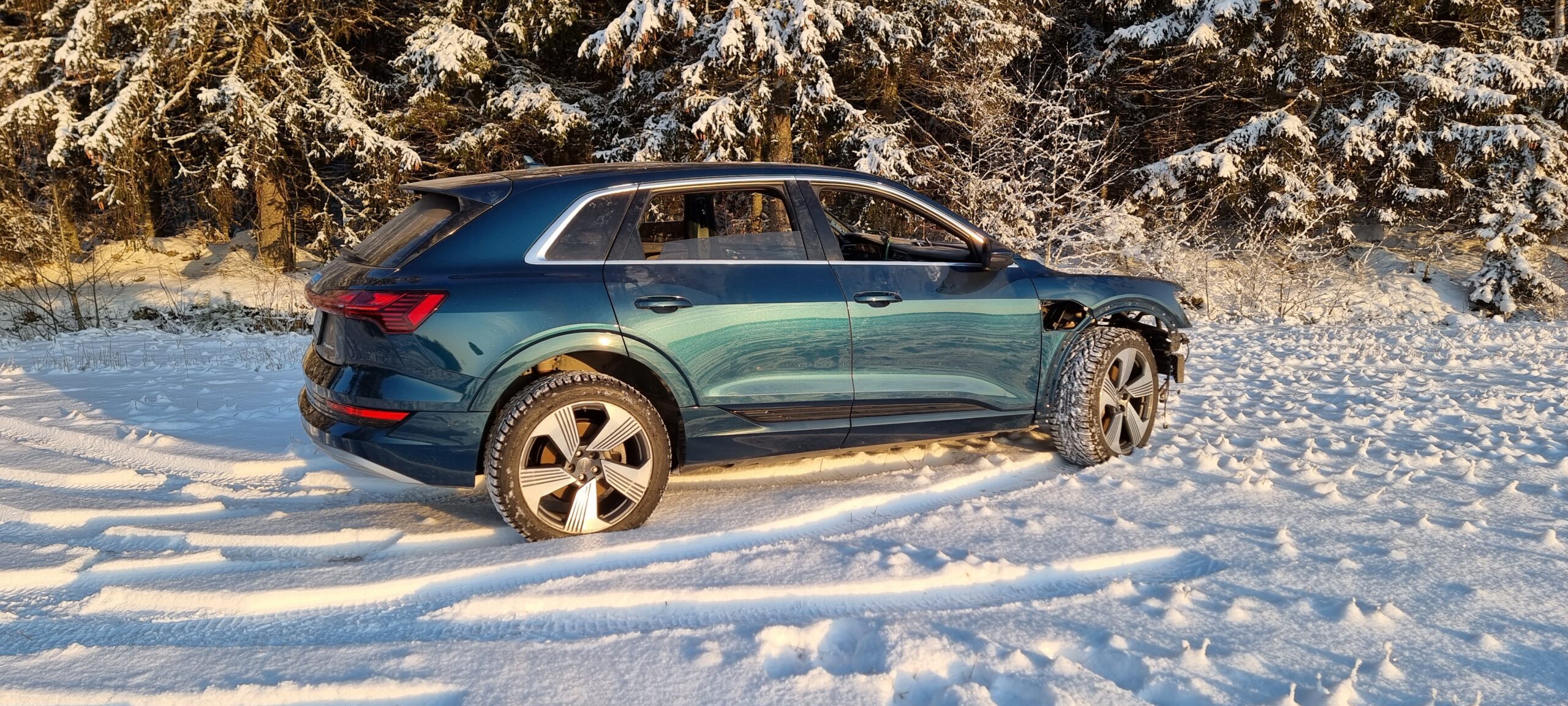
Joulun jälkeen auto sitten kuskattiin takaisin kotiin ja otettiin muutama kuvakin iltapäivän auringossa – nyt auto oli helppo siirrellä kuvauksen kannalta parempaan paikkaankin, kun sillä pystyi ajamaan.
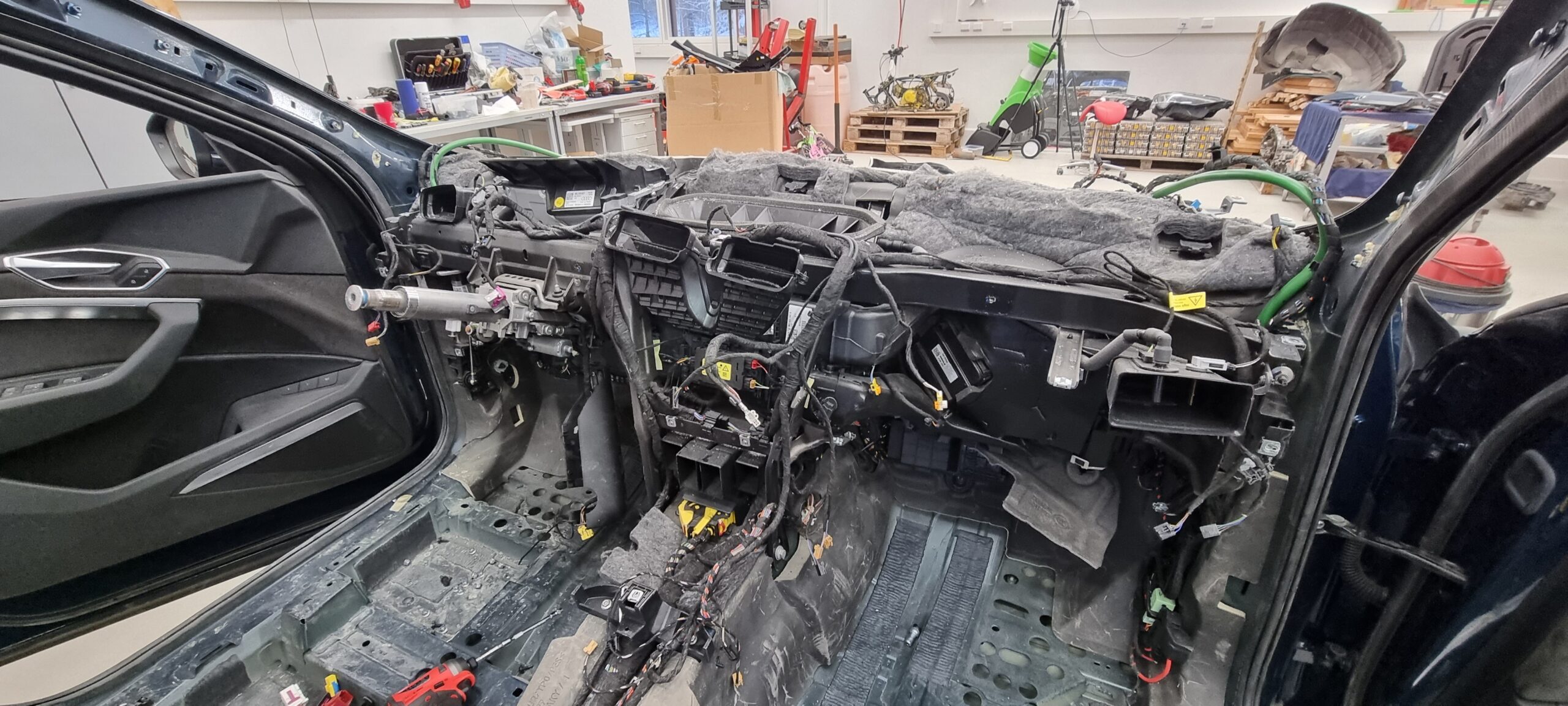
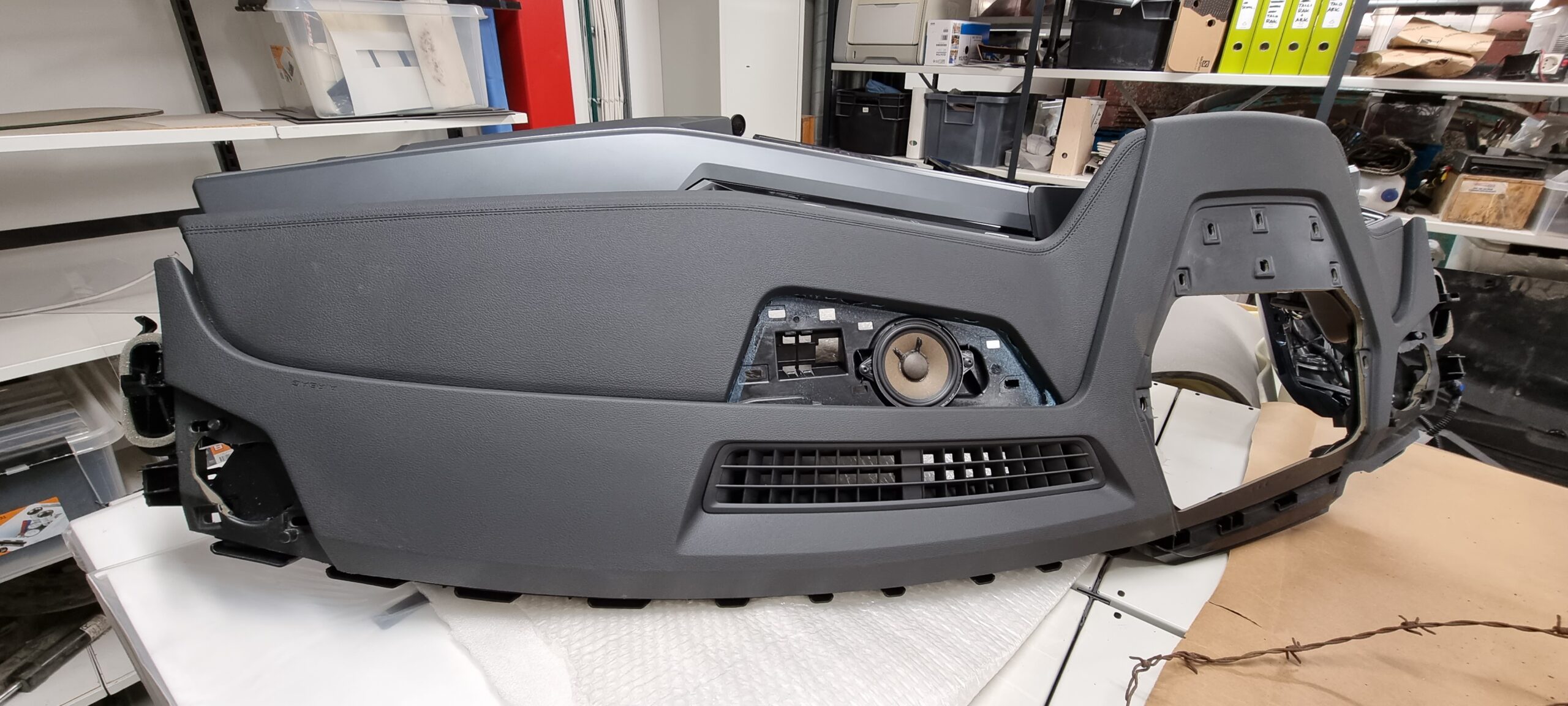


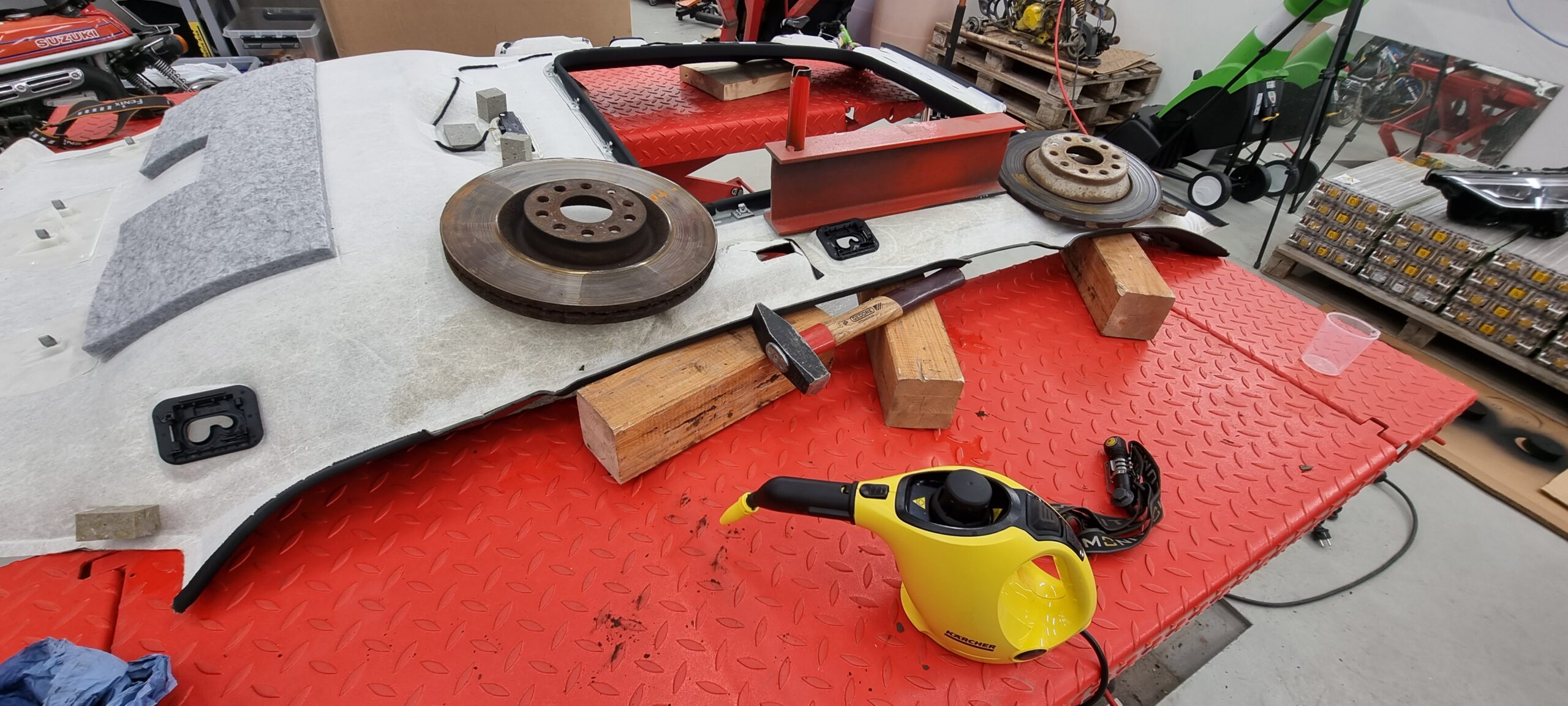
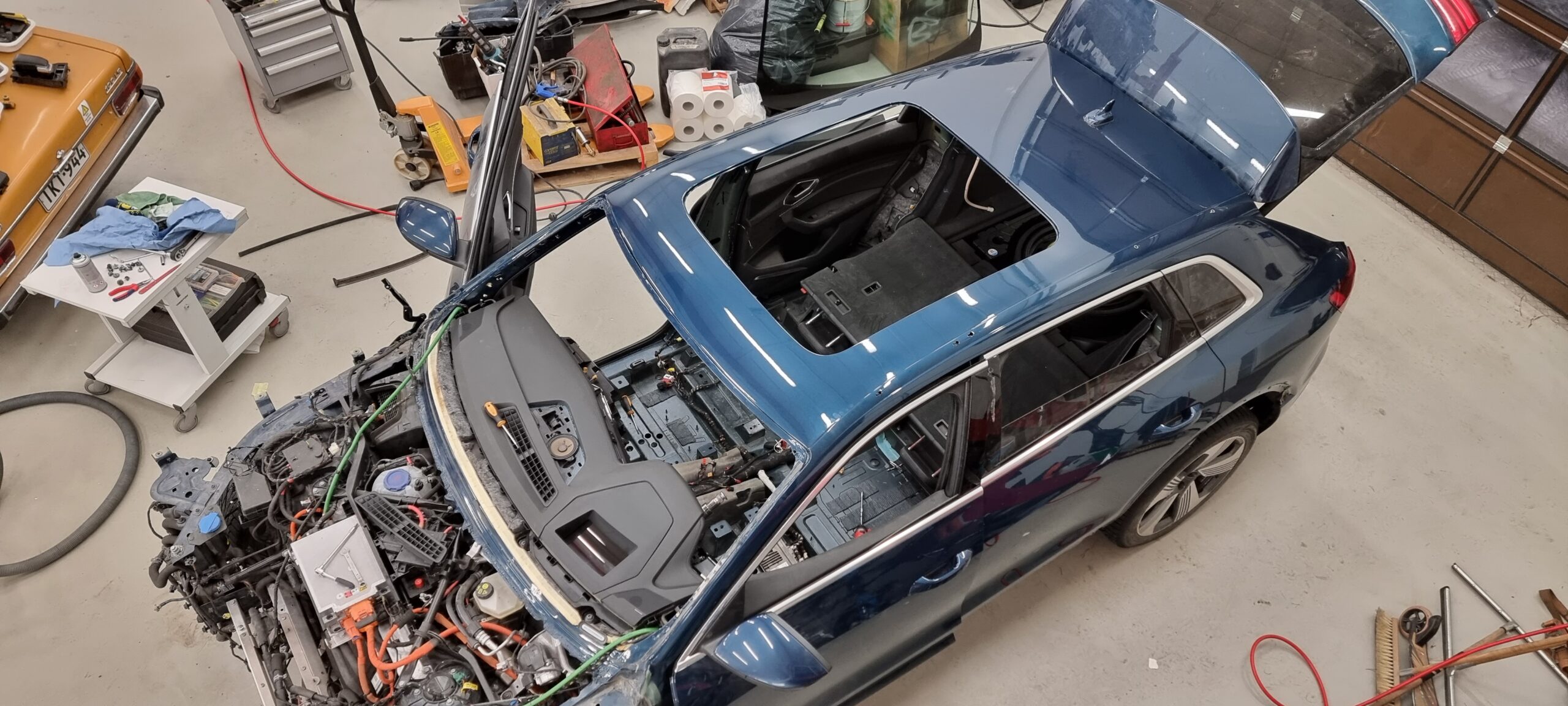

Sisustan kasailussa sai helposti kulumaan kokonaisen päivän, jos riittikään.
Pistehitsauslaite saatiin korjauksesta vasta tässä vaiheessa. 35A sulakkeet olivat lujilla, mutta etunurkka saatiin hitsattua kuntoon.
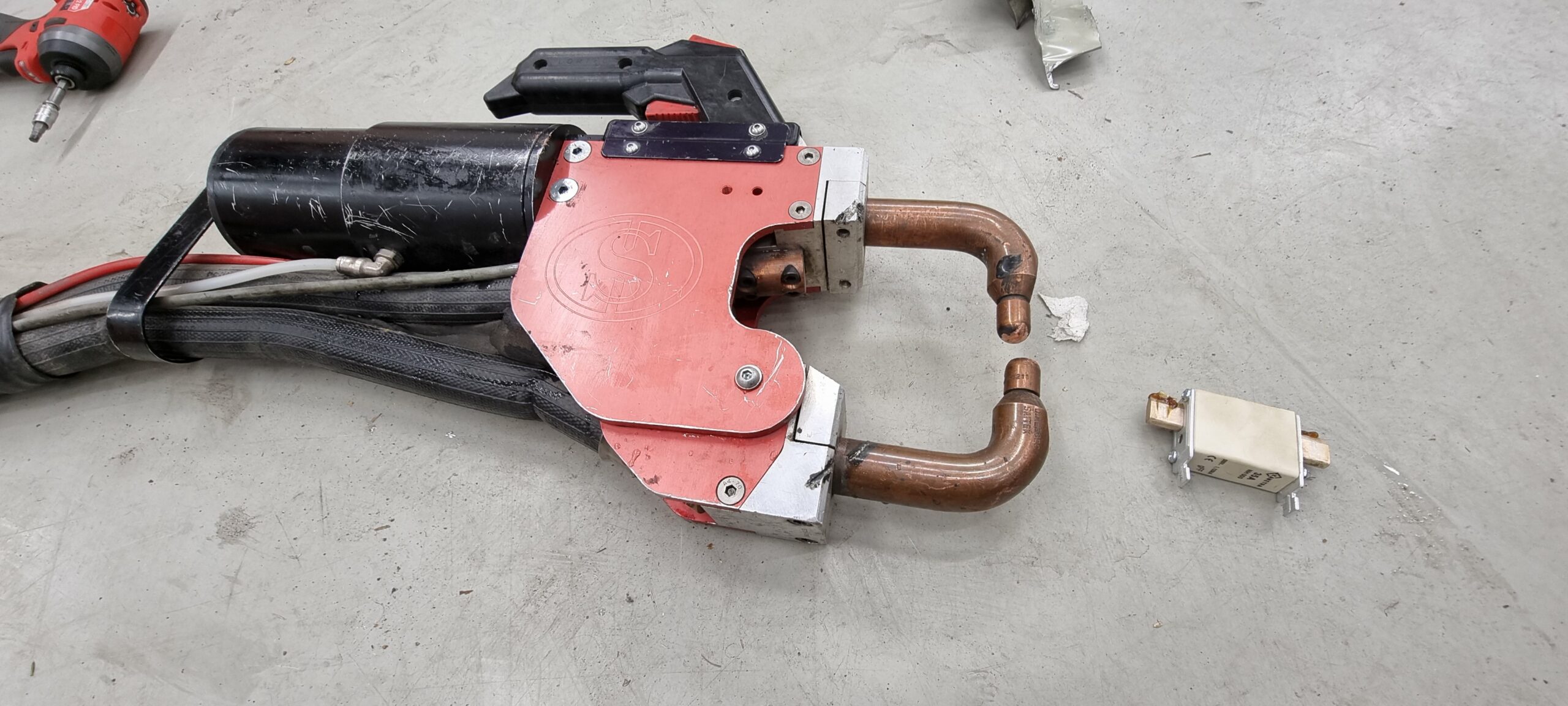
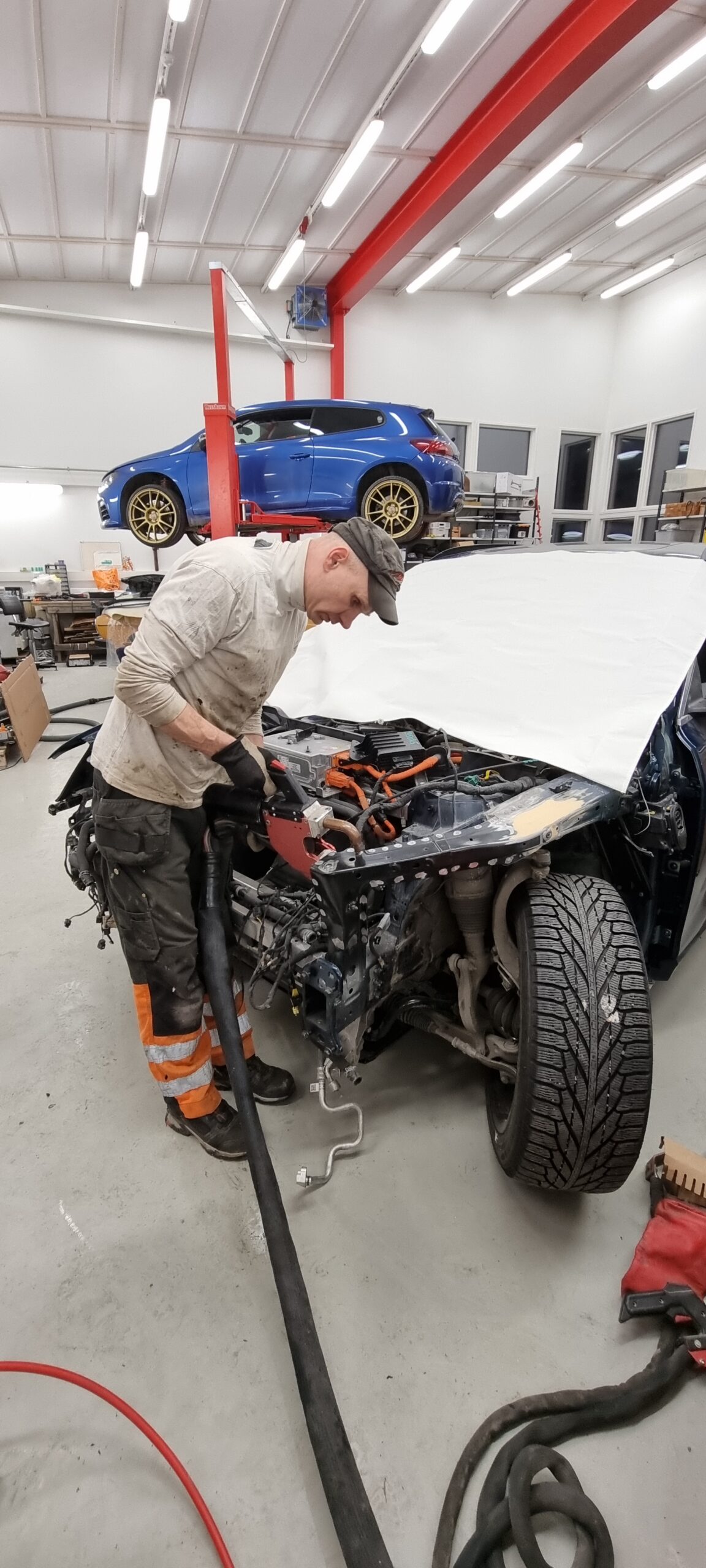
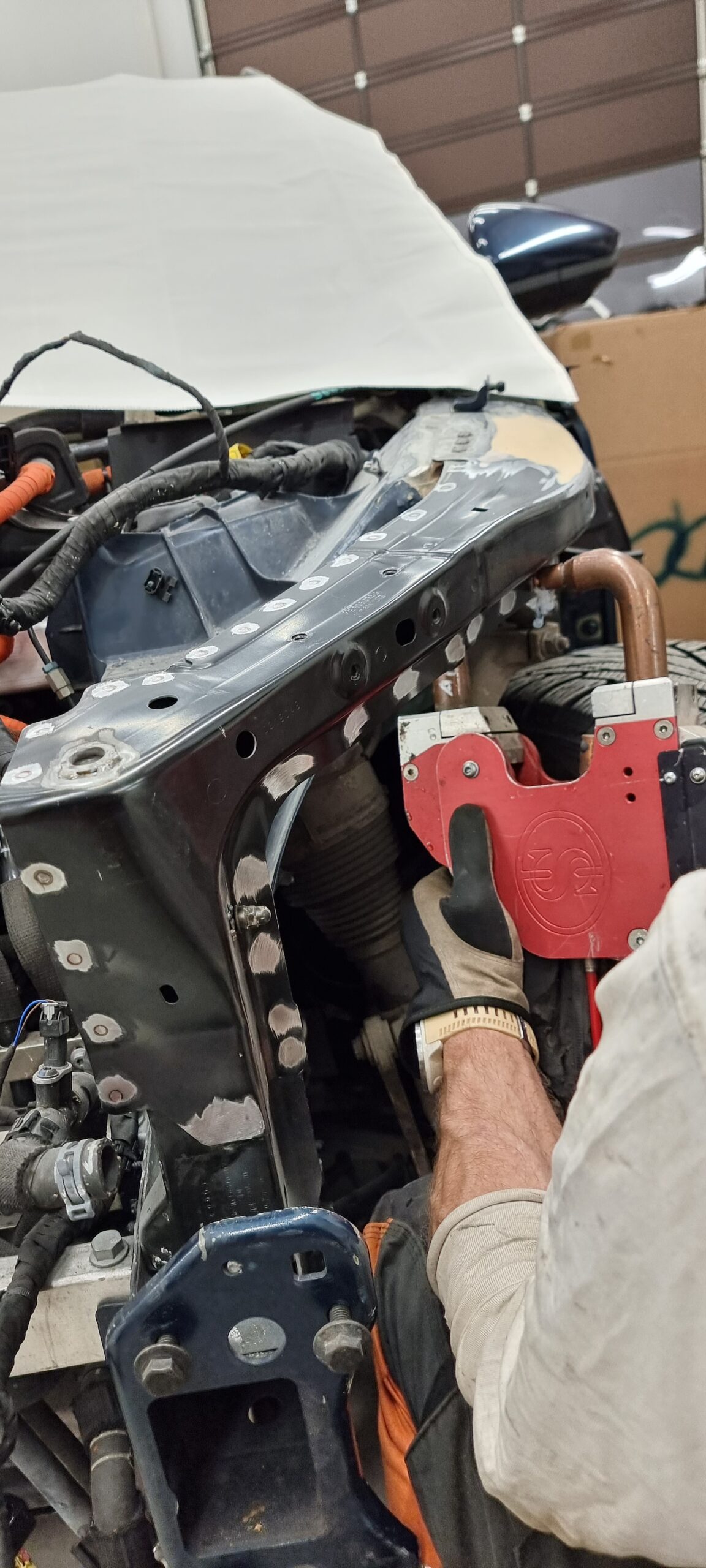
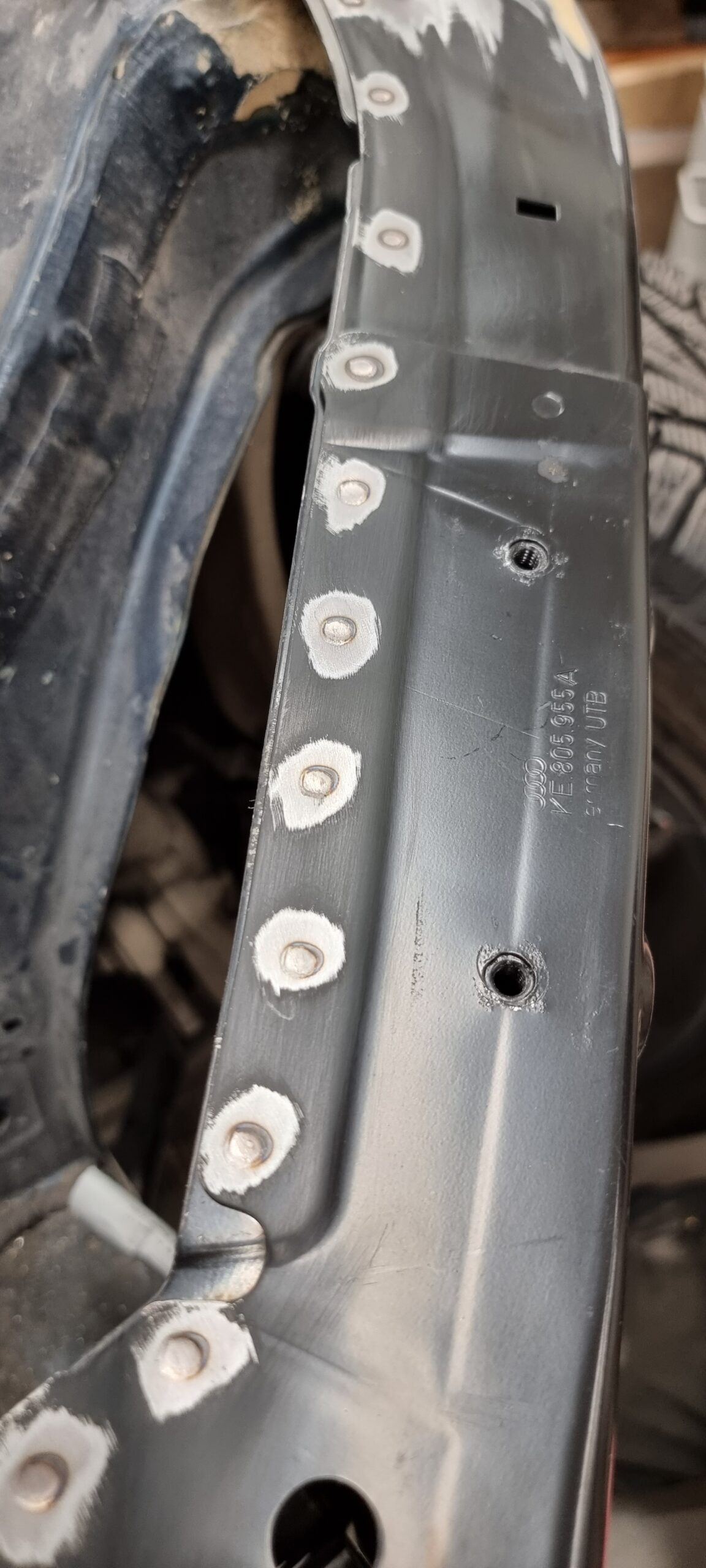
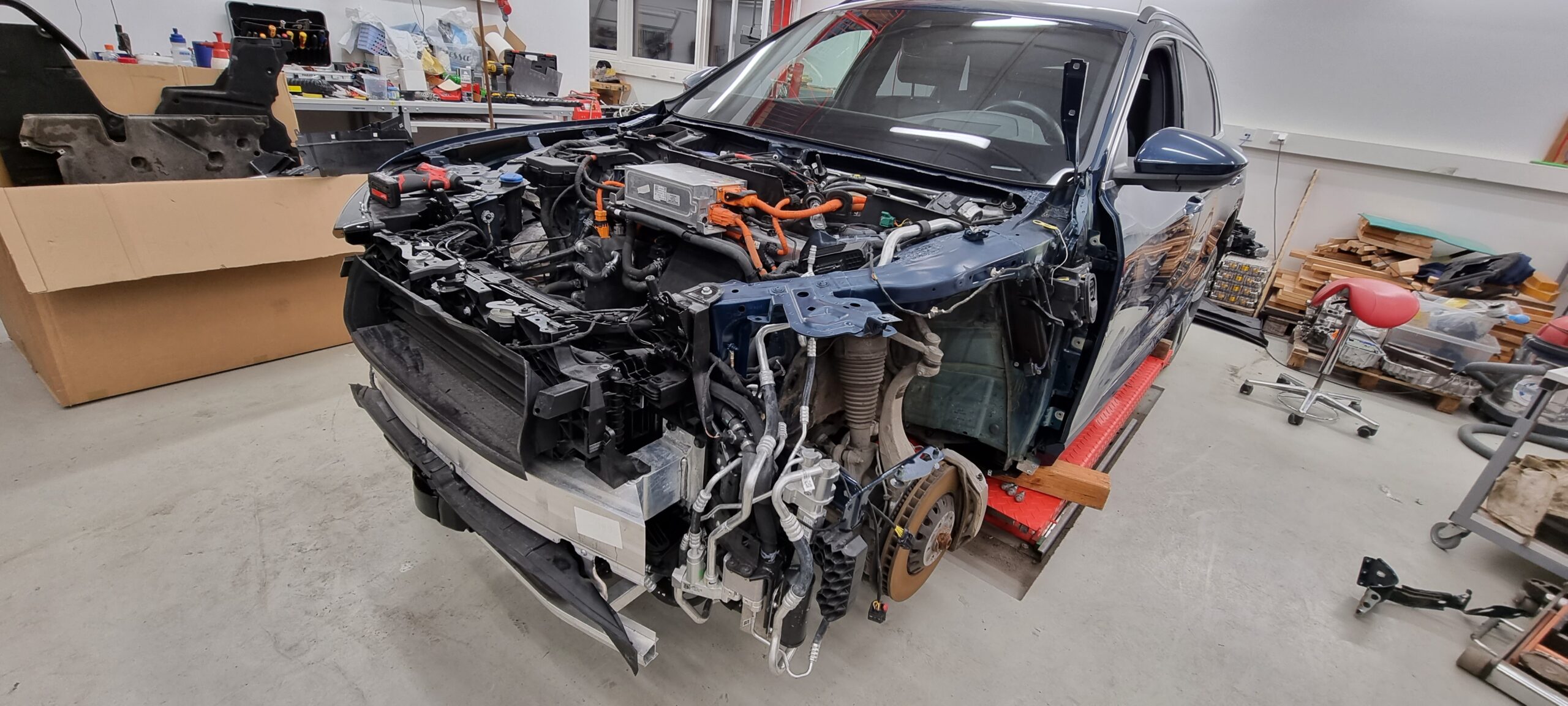
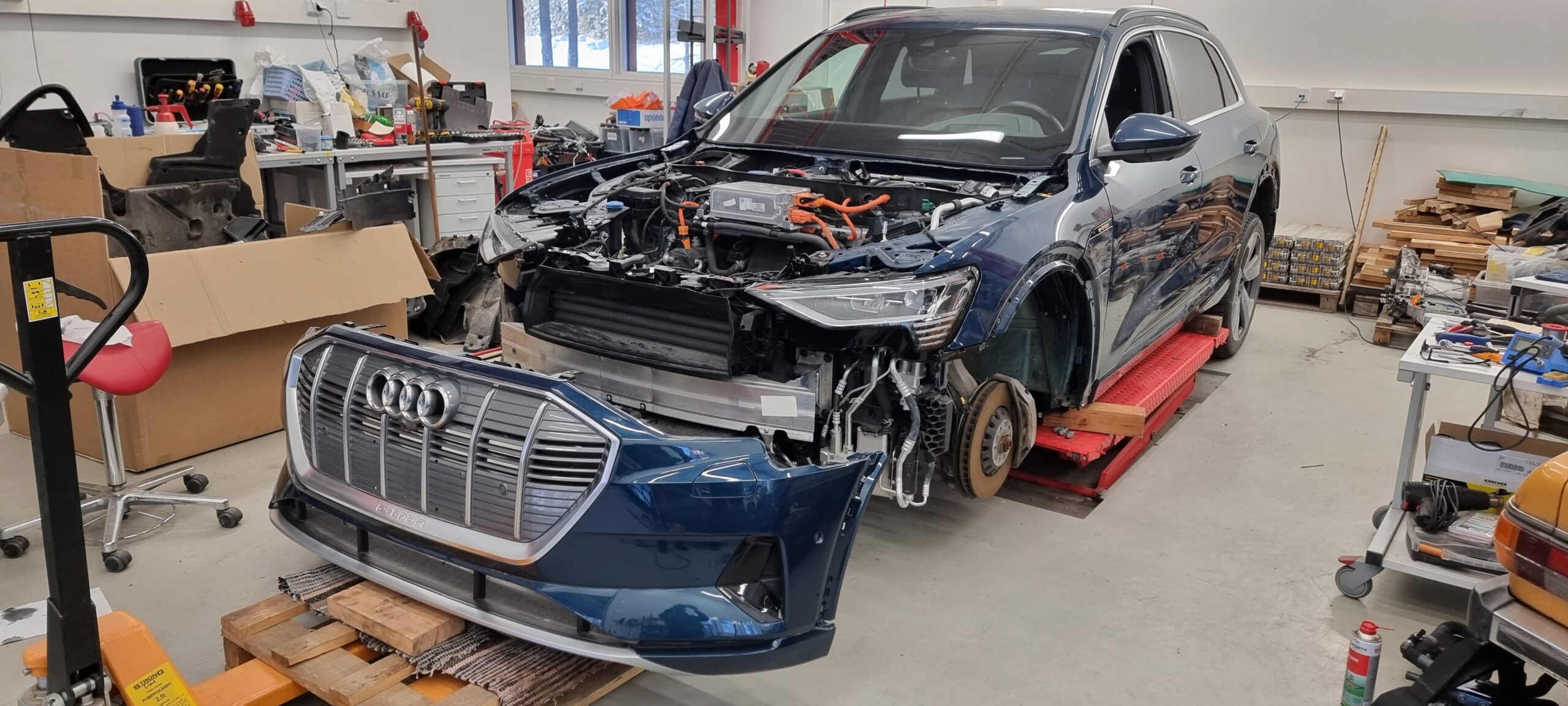
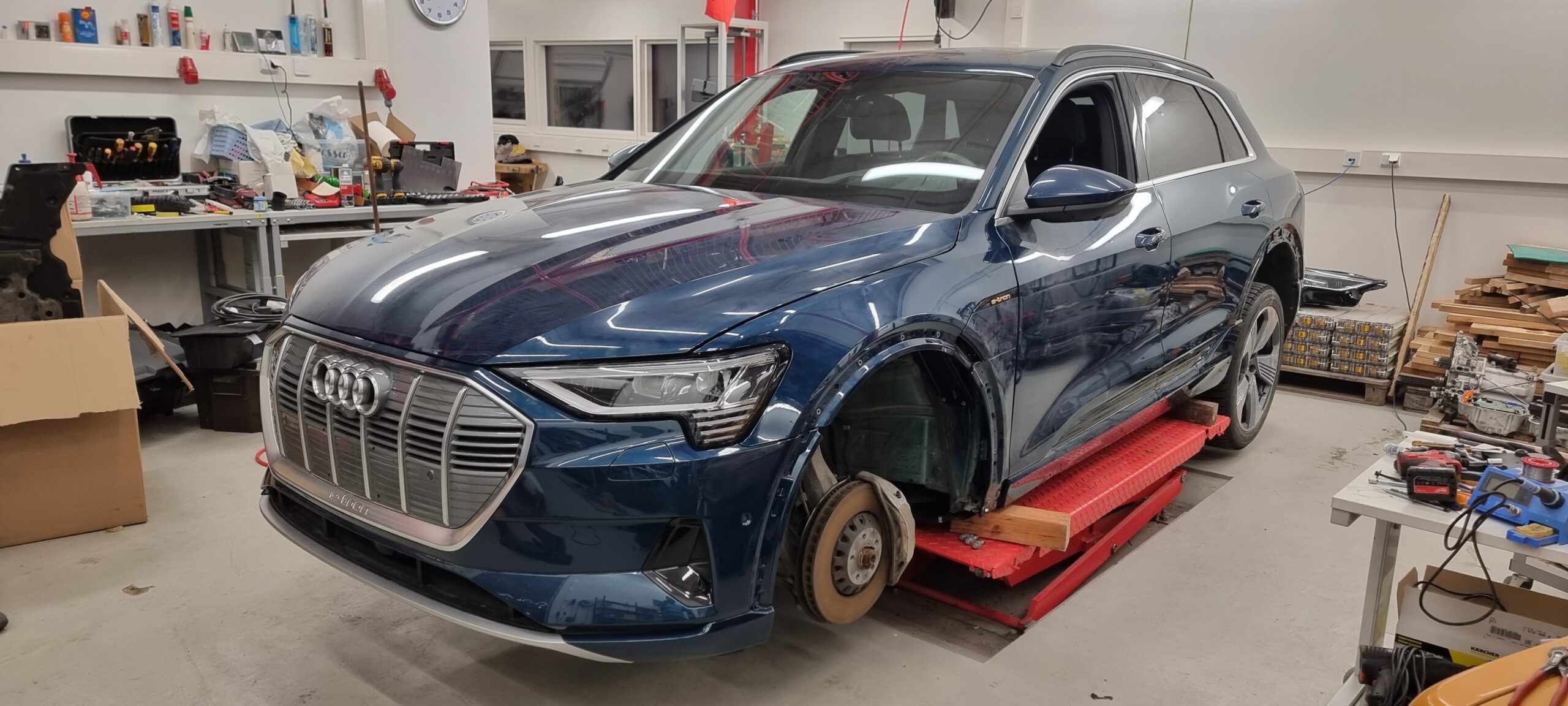
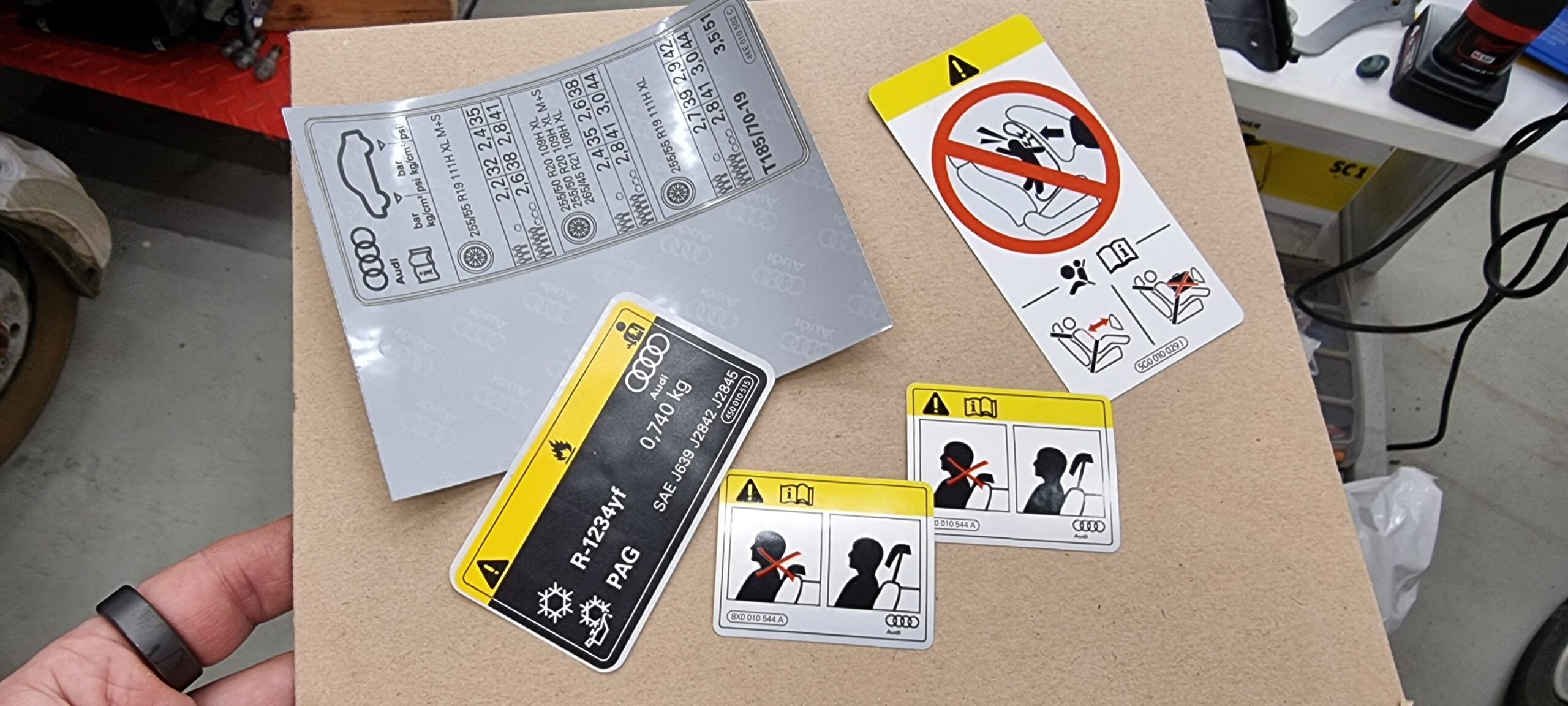
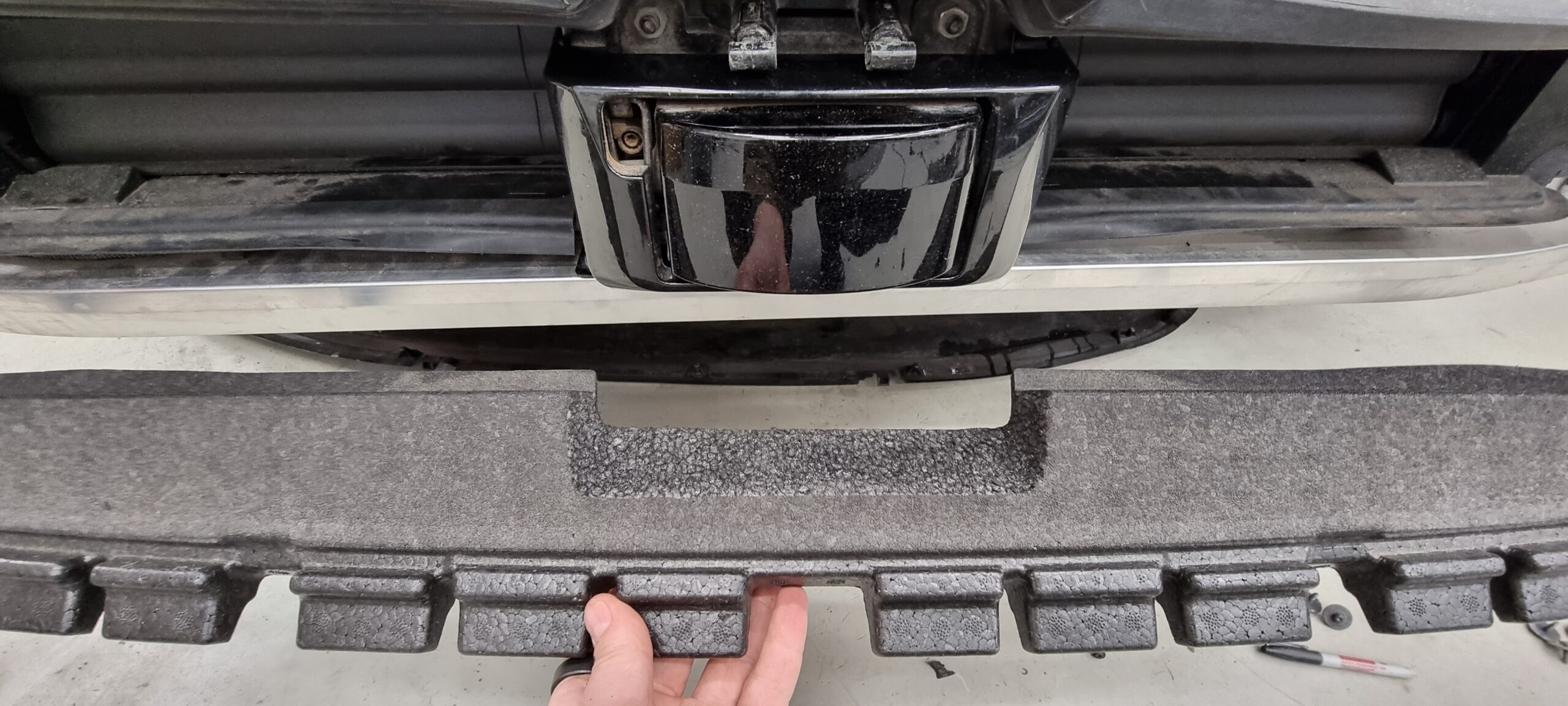
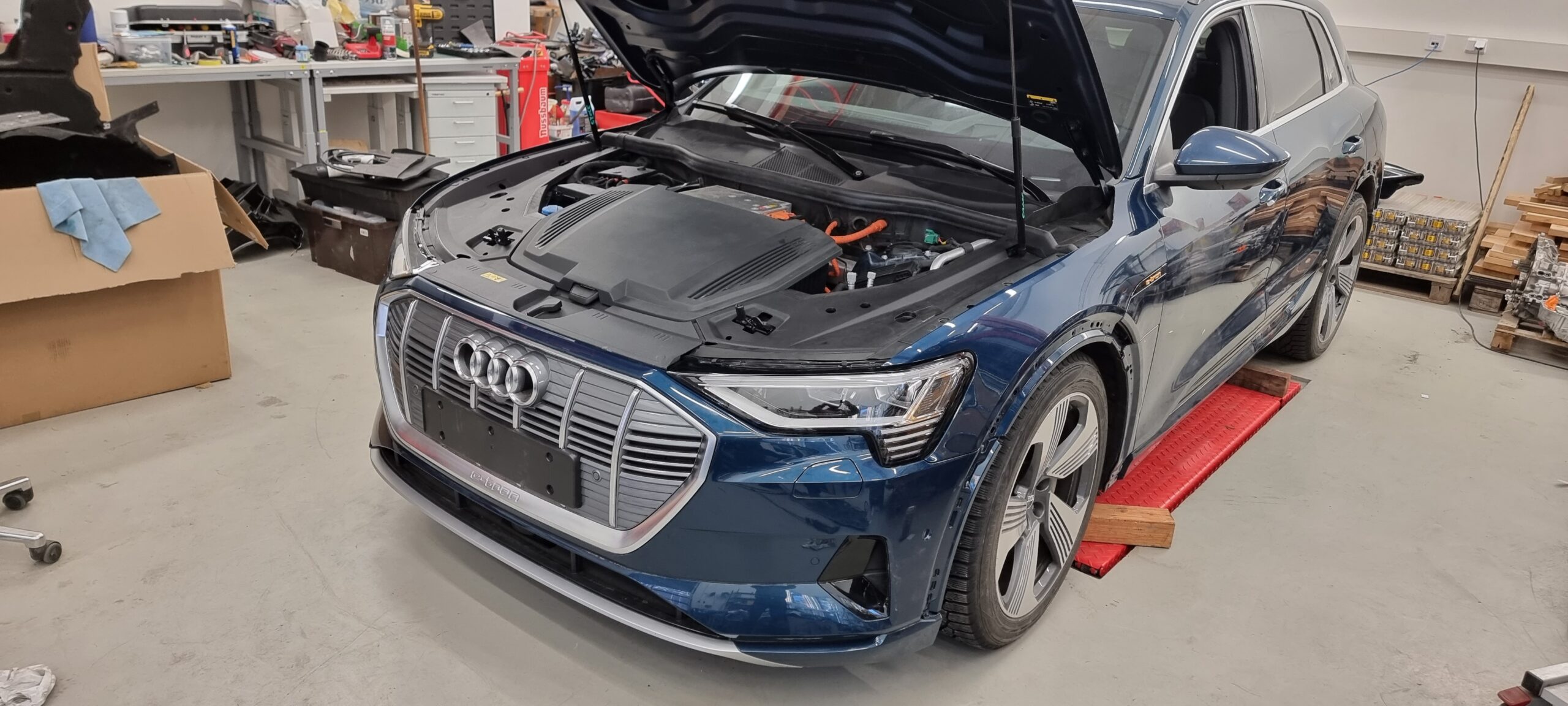
Lopulta siis päästiin keulakin kasaamaan, eikä siinä lopulta mennyt kauaa. Etupuskurissa olevaa alareunan pehmustetta jouduttiin hieman muokkaamaan – Kiina-keulassa ei ollut ollut lidar-tutkaa.
Kojetaululla on HUD-näyttö ja sitä jouduttiin vielä hieman parantelemaan. Kolarissa oli jokin osunut HUD:n suojakalvoon teki siihen sellaisen jäljen, että se heijastui lasillekin. Tein uuden kalvon PET-kalvosta, jota ostin metritavarana (yhden metrin). Tämä fiksaus onnistui erinomaisesti. HUD:sta on tullut myös yksi lempivarusteistani.
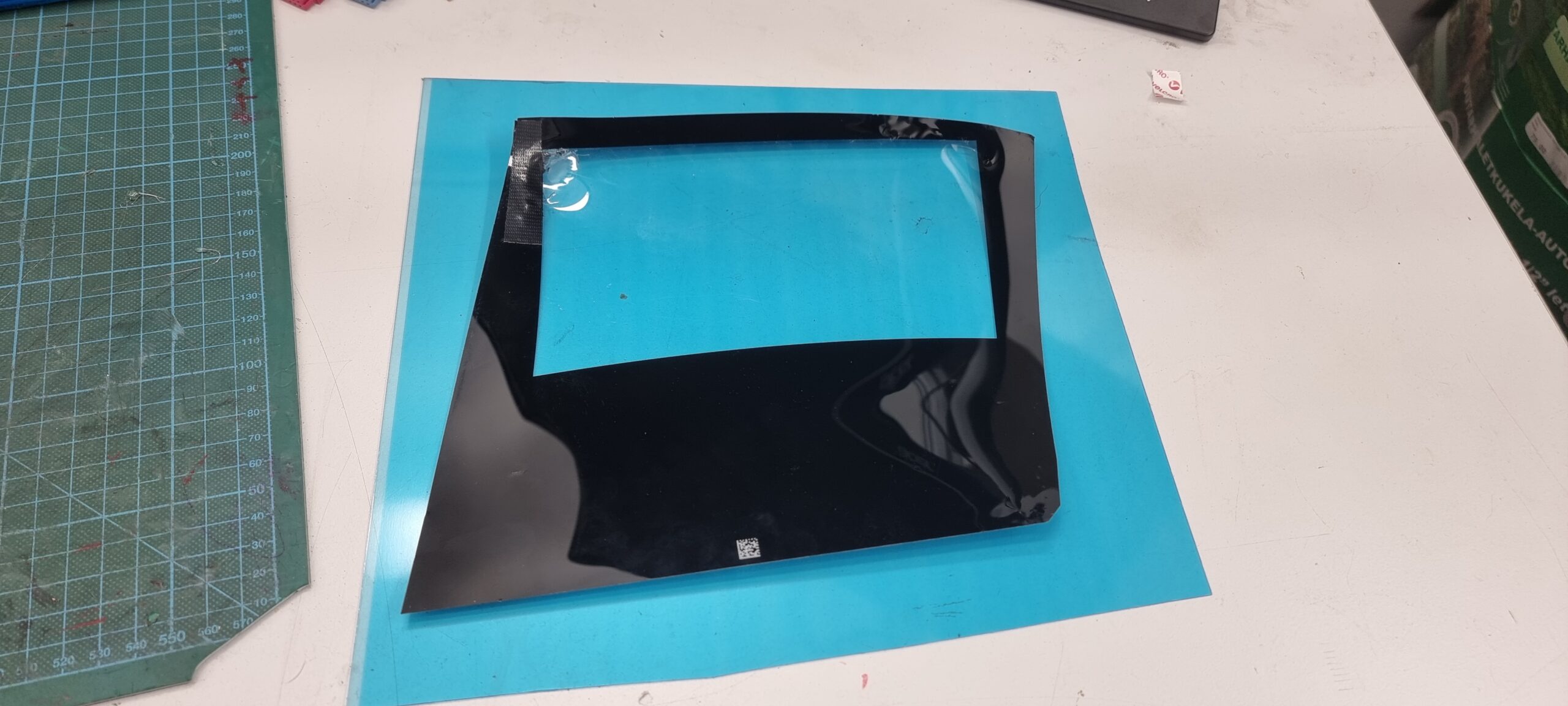
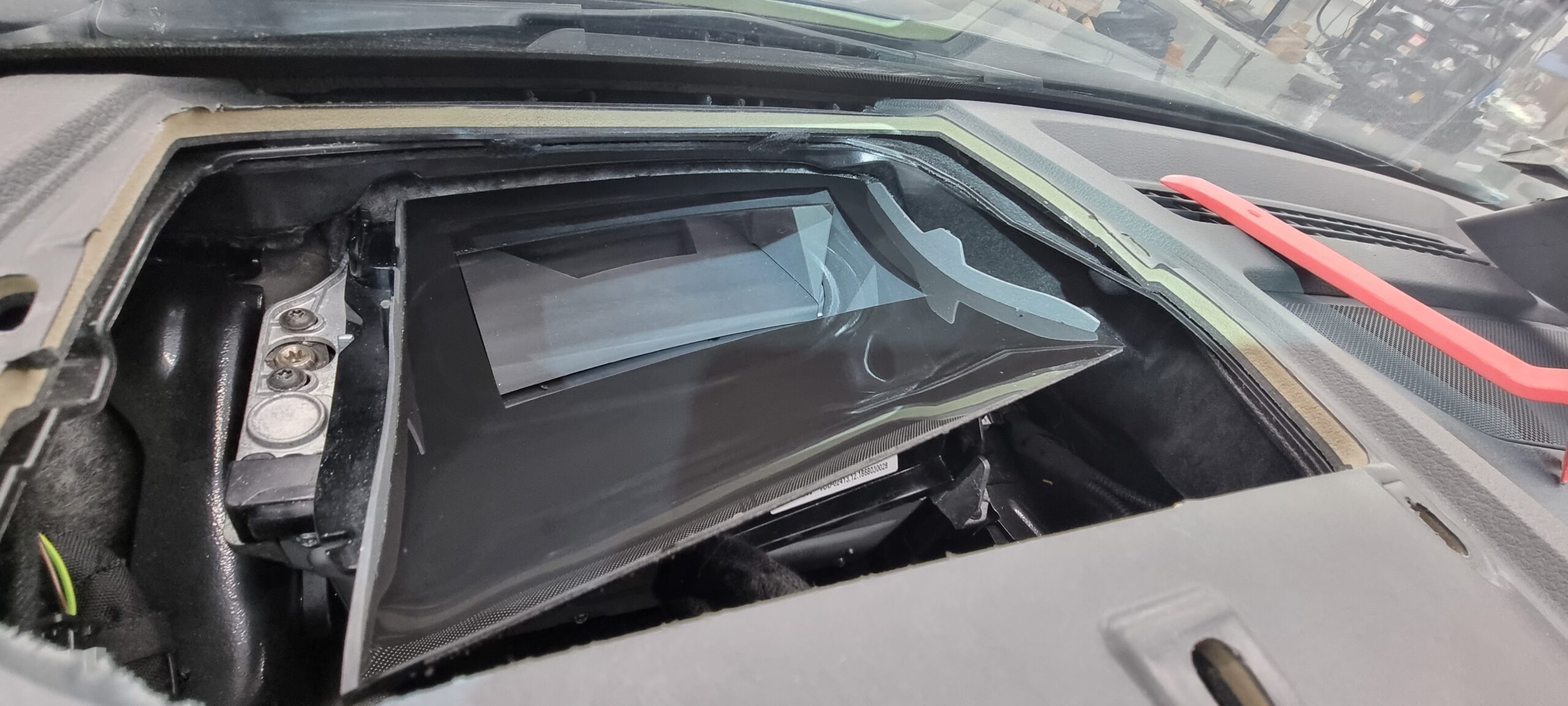
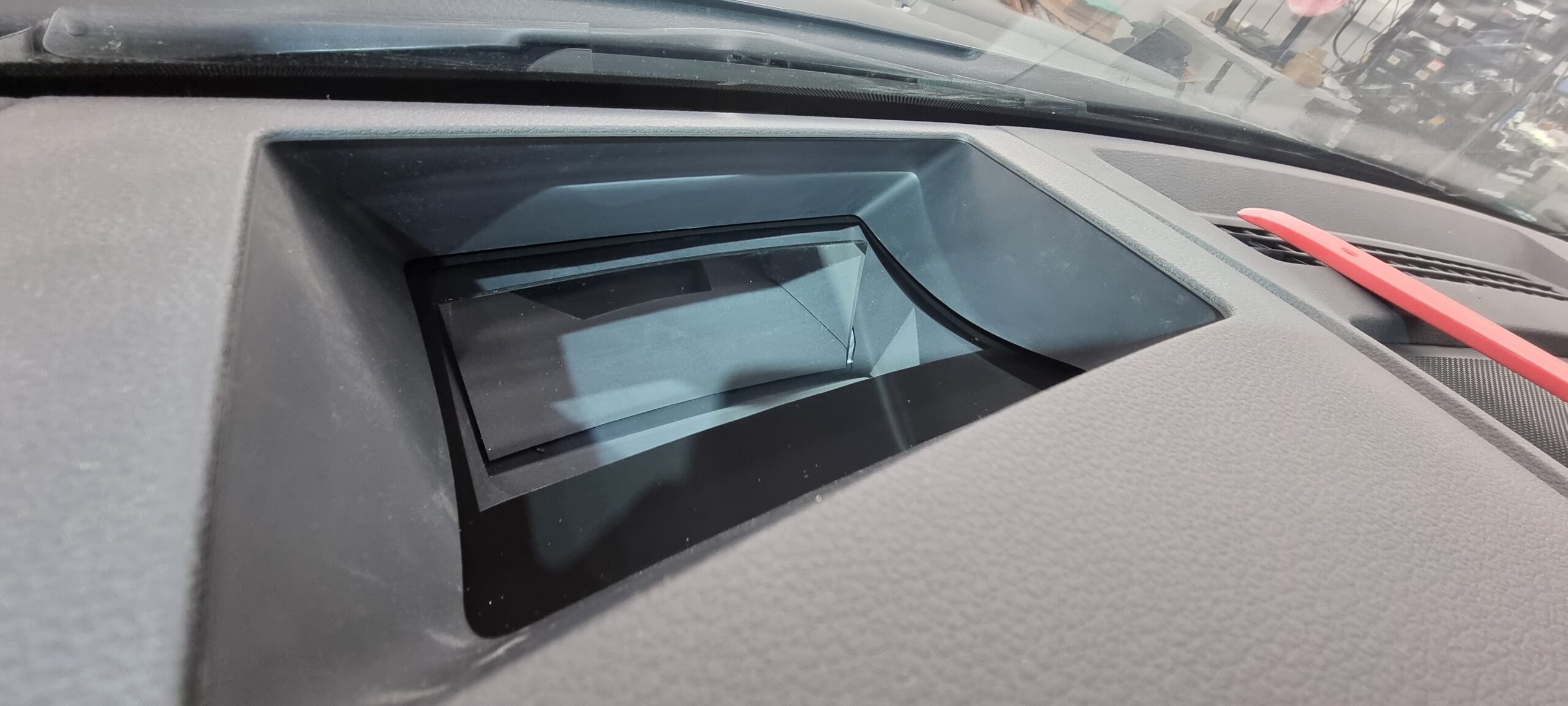
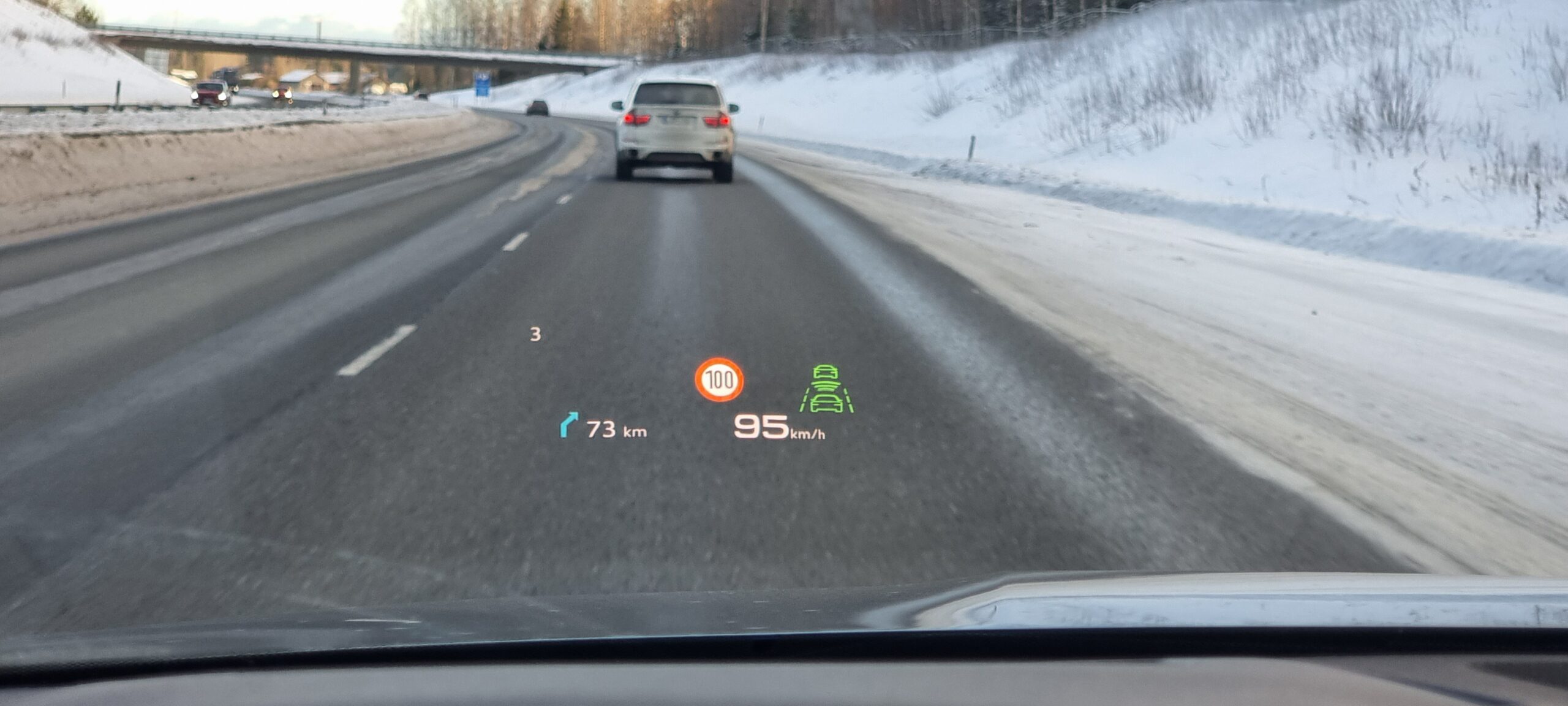
Audi kävi vielä Porin Käyttöautossa, missä turvavyöt ja etututkat kalibroitiin, joitain vikakoodeja poistettiin ja ohjainlaitteita sopeutettiin. Tammikuun lopulla Audi lopulta katsastettiin – ei huomautettavaa! Näin lähes viiden kuukauden projekti oli päätöksessään. Melkein.
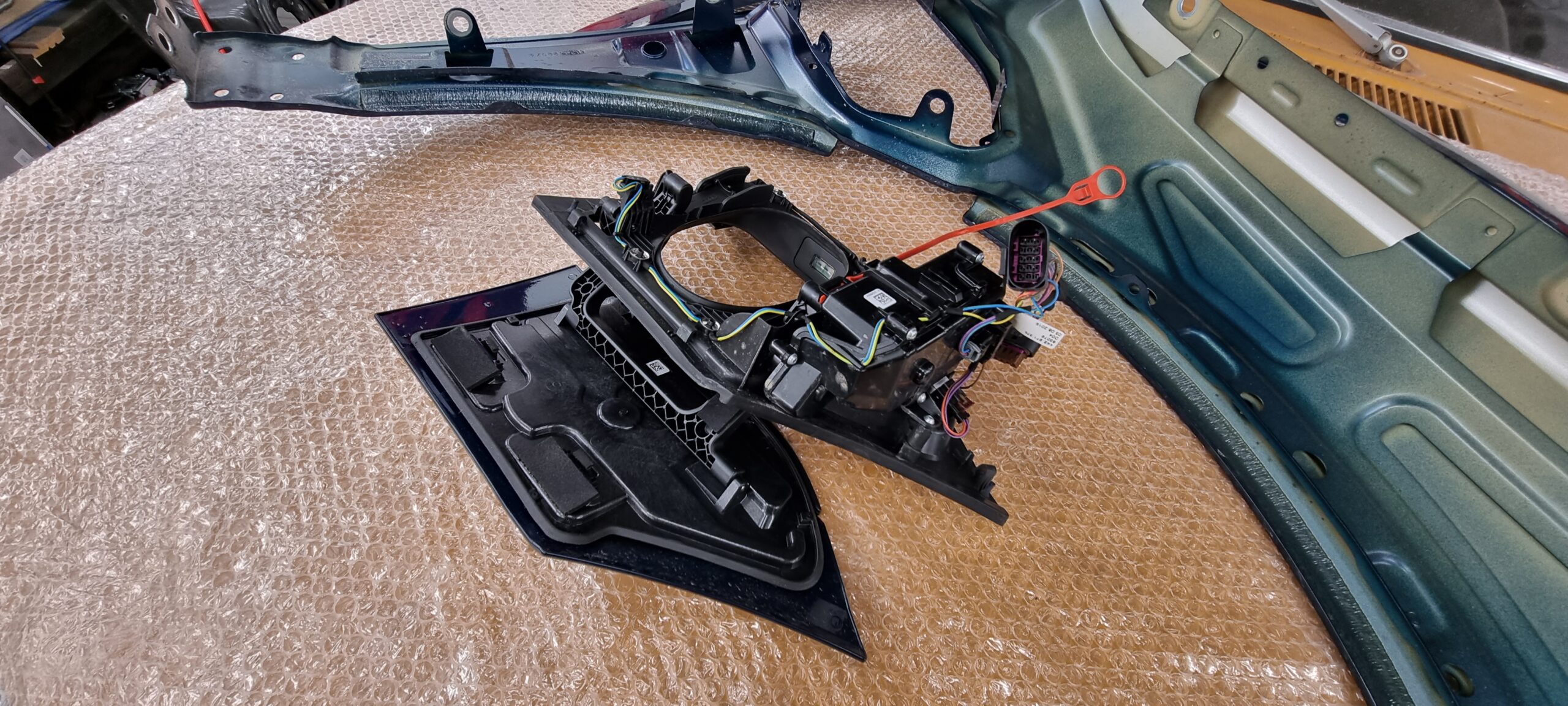


Latausportti moottoroitu suojakansi ei toiminut kuten piti ja tätä piti tutkia. Lokasuoja irti ja latausportti käteen. Moottorista (tämä siis oli Saksasta tullut varaosa) oli väliakseli poikki! Onneksi en ollut heittänyt auton alkuperäistä muuten rikkinäistä latausporttia menemään ja sain siitä varaosan.
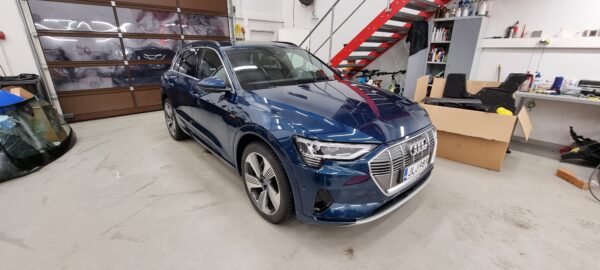
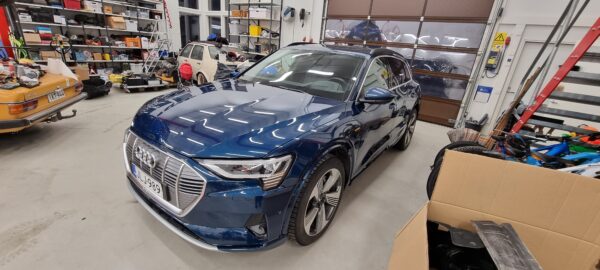
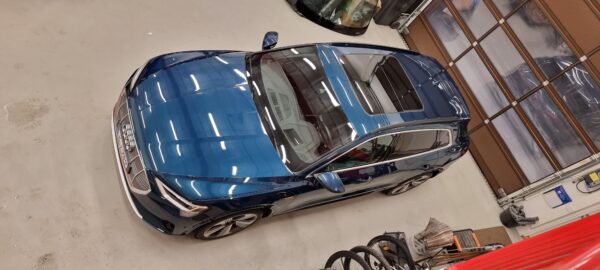
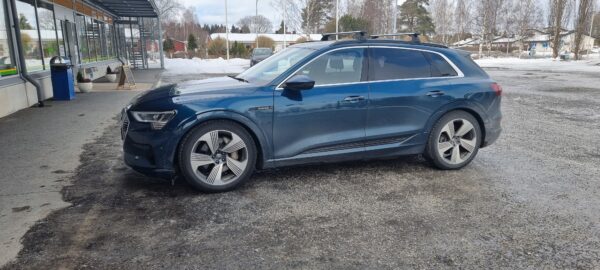
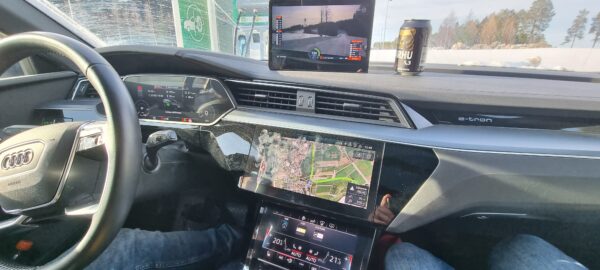
Todellinen koeajo suoritettiin Ruotsissa, kun lähdettiin Audilla MM-rallia katsomaan paikan päälle. Kuvassa katsotaan power stagea pikalaturilla matkalla satamaan – paluulaiva lähti niin aikaisin, että ei ehditty kyseistä EK:ta paikan päällä katsomaan. Auto pelasi hienosti ja sähköautosta ei muutenkaan ollut rallireissulla mitään haittaa.
Näin parin kuukauden ajamisen jälkeen on tullut todettua, että e-tron on todella hieno laite. Kuluttaa hieman paljon sähköä, mutta muuten on kyllä mahtava peli. Pihasta kun valitaan Model S Teslan ja tämän välillä, niin lähes poikkeuksetta Audi siitä ensin aina lähtee. Moni asia on paremmin. Valot, penkit, ajettavuus, hiljaisuus nyt päällimmäisenä tulee mieleen. Ja lämmityslaitekin toimii kunnolla, toisin kuin Teslassa (jossa on jokin vika, mitä ei olla vielä saatu kuntoon). Yleinen laatufiilis on vaan paljon parempi. Toki joitain asioita on Teslassakin paremmin (lähinnä hieman enemmän tehoa ja näyttöjen käytettävyys joissain tilanteissa). Jos e-tronia mietit perheen sähköautoksi, niin suosittelemme lämpimästi.
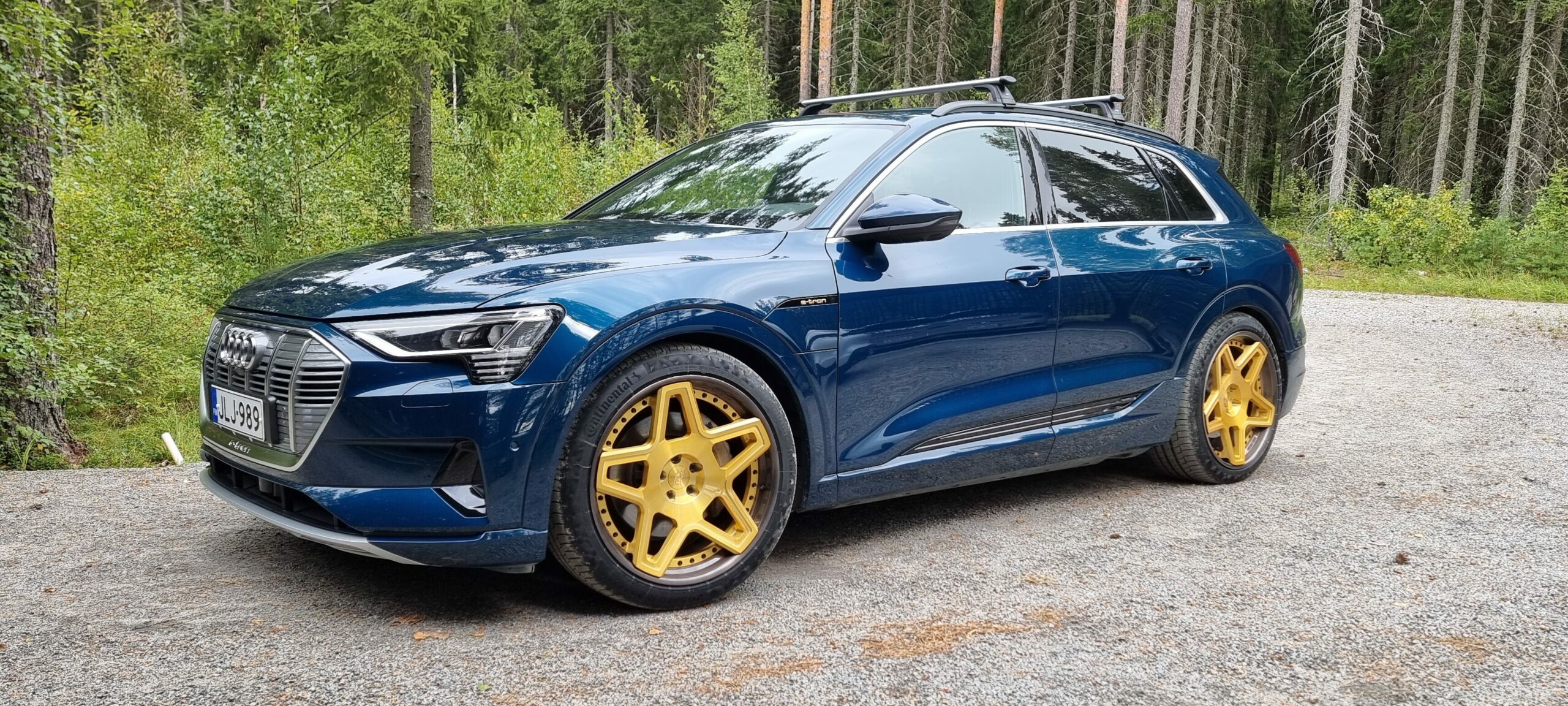
Loppukesästä 22 alle hommattiin alkuperäistä hiukan isommat vanteet. Vanteet toimitti RMX ja ne tehtiin mittatilauksena tähän autoon. Lähtökohtana oli RMX:n malli ”Paksu”, mutta niistä haluttiin vähän keveämmän näköiset, joten mallin työnimi oli ”Paksu laihiksella”.
